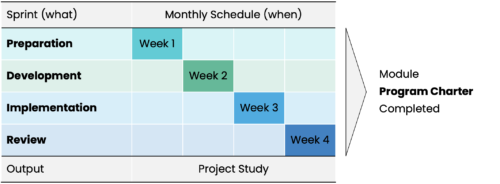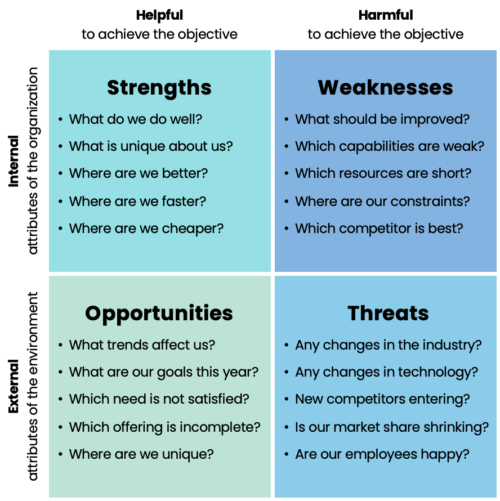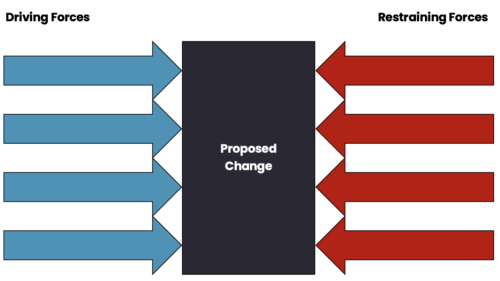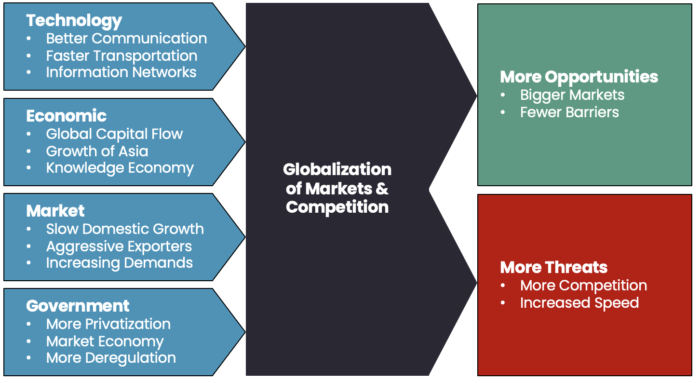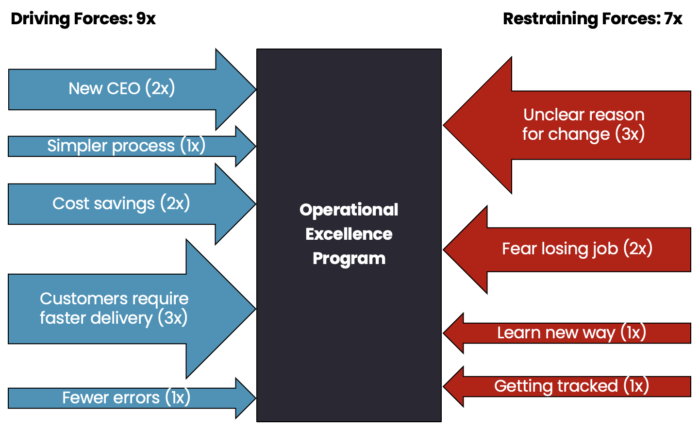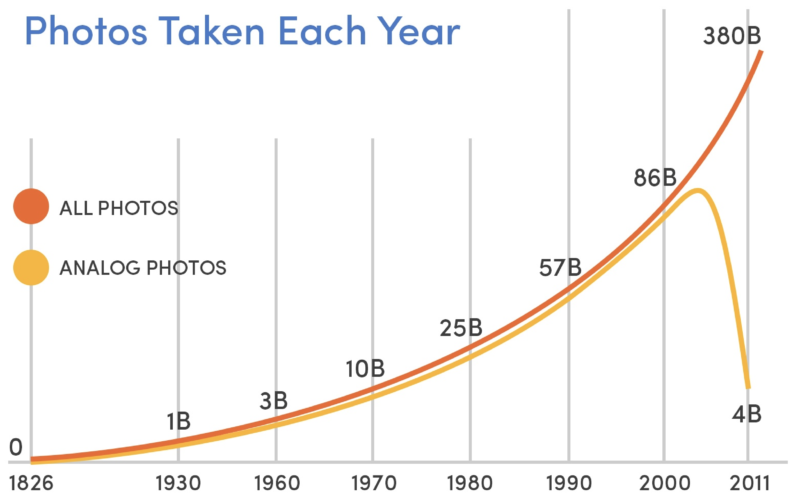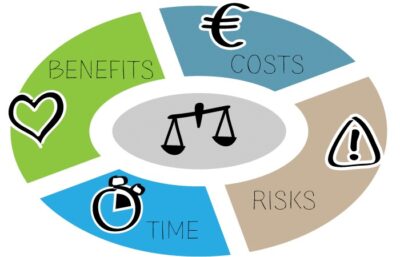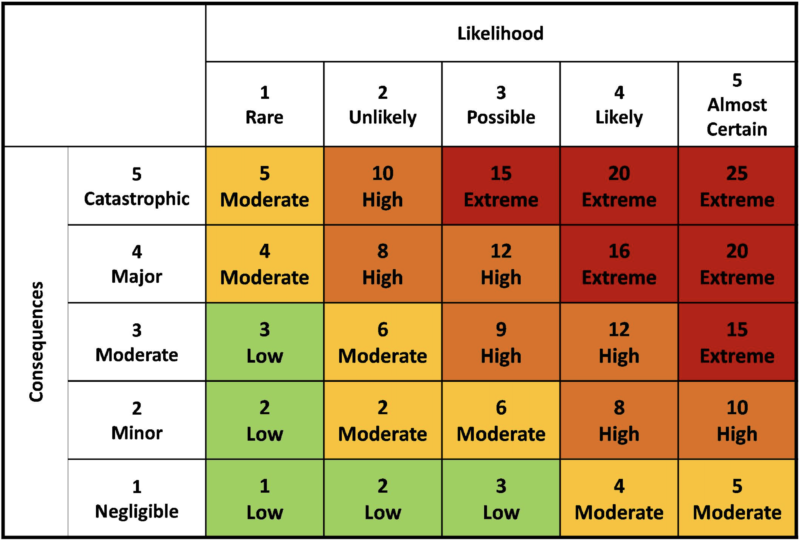Operational Excellence – Workshop 1 (Program Charter)

The Appleton Greene Corporate Training Program (CTP) for Operational Excellence is provided by Mr. Muenzing Certified Learning Provider (CLP). Program Specifications: Monthly cost USD$2,500.00; Monthly Workshops 6 hours; Monthly Support 4 hours; Program Duration 12 months; Program orders subject to ongoing availability.
If you would like to view the Client Information Hub (CIH) for this program, please Click Here
Learning Provider Profile
Meet Mr. Muenzing: Visionary Leader in Lean Transformation and Turnaround Management
Mr. Muenzing is a distinguished authority in lean transformation and turnaround management, amassing three decades of executive and advisory roles in management consulting. As President of Leanmap, a specialized management consulting boutique, he empowers manufacturing, technology, and service enterprises to elevate performance and gain sustainable competitive advantages through world-class operations.
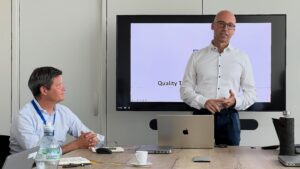
Driven by innovation and systems thinking, he earned a Bachelor’s in Electrical Engineering (BSEE) from FHD in Germany. He swiftly excelled in the Telecom industry, pioneering three groundbreaking innovations for base stations that showcased his visionary mindset and exceptional problem-solving skills. Recognizing the need for business acumen, he pursued a Master’s in Business Administration (MBA) from NSU in the USA, laying the foundation for his transformative leadership.
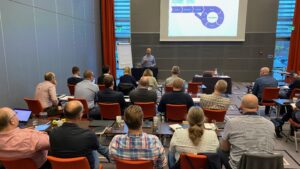
Throughout his illustrious career, he revitalized struggling companies and enhanced successful ones to reach world-class status. With extensive expertise in operations, product development, and business consulting, he offers diverse insights to clients. An accomplished author, he penned “The 20 Keys to World-Class Operations” and “From Chaos to Control.” He also shares his knowledge through speaking engagements on innovation, lean transformation, cost reduction, and quality excellence.
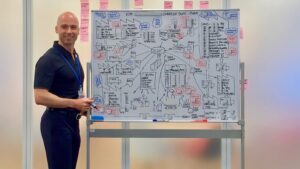
Mr. Muenzing’s expertise has been sought by over 150 client-organizations across 40 countries, driving operations toward world-class benchmarks. These transformations yielded financial benefits surpassing $500 million from top-10 programs, with an average return on investment (ROI) of 12x across all initiatives. With a remarkable 96% repeat clientele rate, his enduring impact is evident, leaving a lasting impression on clients. Key engagements include:
1. Leading Automotive Supplier (Sweden):
As an Industrialization Expert, led the Engineering team to enhance time-to-market (TTM), quality and delivery performance to major automotive customers. His systematic improvements in technology readiness and process capability led to a doubling of launch successes at the start of production (SOP) and an astounding 8x reduction in defects per unit (DPU) in just six months.
2. Major Semiconductor Fab (USA):
In the role of Operations Expert, spearheaded a transformation initiative to optimize cost-per-move (CPM) through adaptive maintenance, systematic problem analysis, and disciplined root-cause elimination. Coached 10 Advanced Module Engineering (AME) teams during the transition phase, realizing 326 projects that delivered $118 million cost savings (run rate) in the first year.
3. Pharmaceutical Operation (France):
As Operations Expert, led the factory turnaround with focus on operational efficiency (OEE) to ensure stable patient supply. As a result, doubled efficiency within 12 months, increased throughput 32% without spending capital, cleared backlog, reduced deviations by 25%, and shortened lead time by nearly 50%, while maturating the site towards Operational Excellence.
4. Largest Marine Electronics Company (Mexico):
As the Interim Operations Executive, he orchestrated a Manufacturing Turnaround that doubled throughput to meet customer demand. Through systematic defect reduction, design for manufacturability (DFM), and strict flow management, he achieved a 44% reduction in labor hours, 53% reduction in footprint, 94% reduction in inventory, and 66% reduction in rework in just one year.
5. Leading Flavor and Fragrance Company (Switzerland):
In the capacity of Global Leader for Lean and Operational Excellence, he spearheaded a Lean Transformation Initiative across 20 global flavor-production facilities. His efforts yielded over 400 improvement ventures, adding CHF 36 million to the company’s profits in just 3 years, while attaining a competitive edge by elevating both quality and delivery standards..
6. Largest Appliance Factory (China):
As the Integration Manager, he successfully merged two large assembly plants in Guangdong into one. Through streamlining material flow, balancing workload, and right-sizing manning, he reduced shortages and late deliveries by 50%, lowered on-hand inventories from 46 to 18 days, and added $20 million annual manufacturing capacity to meet forecasted demand.
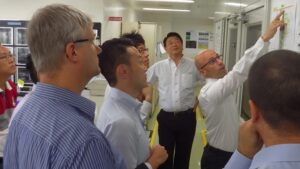
Mr. Muenzing exemplifies impactful leadership through visionary expertise, driving lasting transformations by fostering world-class quality, speed, and efficiency. His consistent record of sustainable bottom-line growth and unwavering commitment to continuous improvement mark him as a global driving force behind corporate success. For anyone seeking to navigate their way to operational excellence, Mr. Muenzing is the expert to turn to. With his visionary leadership, profound expertise, and exceptional ability to create lasting improvements, he continues to shape the future of organizations across the globe.
MOST Analysis

Mission Statement
Unlock the OpEx Potential
Prepare for a transformative journey toward operational excellence. As with any improvement program, establishing a clear structure is essential to overcoming challenges and effectively capitalizing on opportunities. Without a clearly defined program charter, initiatives can easily lose direction, encounter scope creep and resource cannibalization, lead to misunderstandings, and ultimately fail to achieve their objectives. Recognizing the significance of a solid program charter establishes the foundation for a successful program launch and marks the beginning of our journey.
In this inaugural training module, you will gain valuable insights and practical strategies to drive your organization towards operational excellence. Discover the driving force behind pursuing excellence, craft a compelling vision statement, and develop a persuasive business case to secure the necessary support and resources. Build a dynamic core team, establish a precise target timeline, and foster a stimulating environment that encourages collaboration and innovation. Learn effective strategies to overcome barriers and implement an efficient control system to track progress and sustain achievements, while paving the way for performance breakthroughs and a culture of continuous improvement.
Upon completion of this inaugural training, you will emerge with a clear understanding of the critical role a charter plays in program success. Armed with the tools and techniques acquired during the workshop, you will confidently create and present a well-crafted program charter to key stakeholders, ensuring alignment and support from the start. By establishing a solid foundation, the program is better equipped to avoid potential pitfalls, mitigate risks, and maintain focus on delivering successful outcomes. Ultimately, the training empowers participants like you to become more effective leaders who can drive initiatives forward, foster collaboration, and inspire teams to achieve extraordinary results.
Objectives
01. Driving Force: Identify key reasons for the program, creating purpose and commitment.
02. Vision Statement: Outline desired future state, providing direction for the program.
03. Anticipated Gains: Forecast program benefits and align with organizational objectives.
04. Required Resources: Identify necessary resources, including people, capital, information.
05. Business Case: Justify the program based on its financial, operational, strategic benefits.
06. Core Team: Build team for driving progress, monitoring milestones, addressing challenges.
07. Target Timeline: Define program milestones for tracking progress and accountability.
08. Basic Skills: Provide initial training with focus on teams, techniques, and closing knowledge gaps.
09. Stimulus Plan: Implement incentives that motivate people to act, fostering positive environment.
10. Change Story: Engage people with compelling narrative, communicate benefits, inspire participation.
11. Barrier Removal: Identify and overcome obstacles hindering progress, proactively mitigate challenges.
12. Control System: Establish the management infrastructure to seamlessly plan and execute the program.
Strategies
01. Driving Force: The first step involves identifying and emphasizing the key reasons behind the OpEx program. It focuses on creating a strong sense of purpose and commitment among stakeholders to drive the desired change.
02. Vision Statement: A vision statement outlines the desired future state that the OpEx program aims to achieve. It provides a clear direction and serves as a guiding principle for decision-making and goal-setting throughout the implementation phase.
03. Anticipated Gains: Identify the benefits from the OpEx program, such as cost reduction, operational efficiency, customer satisfaction, market expansion, or quality boost to foster enthusiasm and support among stakeholders for active participation.
04. Required Resources: Assess and secure necessary resources, including finances, technology, and personnel to successfully implement the OpEx program and ensure fully impact.
05. Business Case: The business case articulates the rationale and benefits of the OpEx program from a financial, operational, and strategic perspective. It highlights the expected value-add and helps justify the allocation of resources and support for the program.
06. Core Team: Executing the OpEx program requires a dedicated team of individuals with relevant expertise and authority – the program sponsor, manager, controller, specialists, influencers – who collaborate closely to drive progress and address challenges.
07. Target Timeline: Developing a well-defined timeline with specific milestones and deadlines is essential for tracking progress and maintaining accountability. The target timeline provides a reference for implementing the OpEx program.
08. Basic Skills: Providing initial training to ensure people have the knowledge and skills to fully participate. It focuses on teams, tools, and techniques to identify existing capabilities and also the gaps to be closed during the OpEx program.
09. Stimulus Plan: A stimulus plan involves designing and implementing incentives, rewards, or recognition mechanisms to encourage people to act. It aims to foster a positive environment that reinforces desired behaviors and outcomes in pursuit of OpEx.
10. Change Story: Crafting a compelling narrative around the OpEx mission helps engage stakeholders and create a shared view of the need for change. It communicates the benefits, inspiring individuals to embrace and actively participate in the process.
11. Barrier Removal: Identifying and overcoming potential obstacles that may hinder progress is vital for successful implementation. It involves proactively mitigating challenges associated with resources, processes, capabilities, and mindsets to ensure progress.
12. Control System: By setting up a management infrastructure, the team gains the capacity to flawlessly strategize, execute, monitor, and control program activities, fostering the fulfillment of the mission and the attainment of the intended impact.
Tasks
01. Create a task on your calendar to complete within 30 days the Driving Force.
02. Create a task on your calendar to complete within 30 days the Vision Statement.
03. Create a task on your calendar to complete within 30 days the Anticipated Gains.
04. Create a task on your calendar to complete within 30 days the Required Resources.
05. Create a task on your calendar to complete within 30 days the Business Case.
06. Create a task on your calendar to complete within 30 days the Core Team.
07. Create a task on your calendar to complete within 30 days the Target Timeline.
08. Create a task on your calendar to complete within 30 days the Basic Skills.
09. Create a task on your calendar to complete within 30 days the Stimulus Plan.
10. Create a task on your calendar to complete within 30 days the Change Story.
11. Create a task on your calendar to complete within 30 days the Barrier Removal.
12. Create a task on your calendar to complete within 30 days the Control System.
The OpEx program operates on a structured schedule with monthly modules to achieve operational excellence. These modules are divided into four sprints: (1) Preparation and study of the material, (2) Development of new capabilities in the workshop, (3) Implementation of the new capabilities and findings, (4) Review of effectiveness and documentation of results in the project study. This regular rhythm facilitates efficient planning and has been remarkably successful in maintaining progress. The 12 tasks refer to the implementation and documentation of the 12 elements by each participant in their respective areas of responsibility.
Introduction
The OpEx program operates on a structured schedule with monthly modules to deliver operational excellence. These modules are further segmented into four sprints: Preparation, Development, Implementation, Review. In the upcoming sections, we will discuss the roles of each sprint in delivering the project study about the “Program Charter”.
Preparation
Prior to the Workshop: Define Participants and Mission
To ensure a successful launch of the OpEx program, we will need to define the initial mission, invite key participants from various departments, assess the current state, clarify the purpose and scope, identify guiding values and principles, and craft a clear mission statement with breakthrough objectives. By addressing these aspects, we lay a strong foundation for our journey towards operational excellence.
1. Invite Participants:
When planning an OpEx program, invite functional heads from various departments to ensure a comprehensive approach. Key participants include the heads of Commercial, Manufacturing, Service, Engineering, Logistics, Finance, Maintenance and Facilities, Human Resources, Information Technology, Quality Assurance, and General Management. Their involvement ensures alignment with commercial objectives, optimization of manufacturing processes, improvement of service delivery, innovation in engineering, efficiency in logistics operations, financial goal alignment, maintenance and facility optimization, employee engagement, information availability, quality control, and strategic guidance. By including these participants, the OpEx program benefits from their expertise, insights, and organizational influence, leading to a holistic implementation of operational excellence initiatives.
2. Assess the Current State:
Before crafting a mission statement, define what works and what does not. Conduct a SWOT analysis to evaluate the operation’s strengths, weaknesses, opportunities, and threats. Identify areas where the operation excels and areas that need improvement. Consider potential challenges arising from new technologies, market needs, competition, or unresolved issues. This analysis helps pinpoint areas for enhancement and challenges to address.
3. Define Purpose and Scope:
Clarify the specific goals the OpEx program aims to achieve, such as improving efficiency, quality, or customer satisfaction. Establish key performance indicators (KPIs) to measure program success, such as cycle time reduction or defect rate improvement. Define the purpose and scope with a focus on the desired outcomes and measurable results.
4. Identify Guiding Values and Principles:
Identify core values held by the organization, such as integrity, accountability, or innovation, along with principles that guide the program, such as continuous improvement, data-driven decision making, or customer focus. Ensure alignment between the OpEx program and the organization’s culture and values. Emphasize the importance of transparency, ethics, and the principles driving decision-making.
5. Craft the Mission and Breakthrough Objectives:
Based on the current state assessment, purpose and scope, and guiding values and principles, develop a clear and concise OpEx mission statement. Capture the essence of the program’s purpose, objectives, and values in a single sentence. Support the mission statement with facts and figures to provide a solid foundation. For example, “To optimize operational processes and drive continuous improvement, delivering exceptional value to customers and stakeholders.”
Conclusion:
The “Program Charter” workshop marks the beginning of our pursuit of operational excellence. Through meticulous preparation, including defining our mission, inviting key participants, assessing the current state, clarifying purpose and scope, and identifying guiding values, we set ourselves up for success. This workshop sets the stage for collaboration, aligning efforts, and driving a culture of continuous improvement. Together, we will optimize processes, enhance customer satisfaction, and achieve exceptional results in our journey towards operational excellence.
Development
During the Workshop: Define the Framework
Effective change management is essential to successful operational excellence initiatives. We will now explore how the ADKAR model to create Awareness, Desire, Knowledge, Ability, Reinforcement. This proven change management framework supports leaders in facilitating a smooth transition, from current to future state. By including examples at each step of the ADKAR process, we can address key questions participants have and ensure their active engagement and commitment to the OpEx program.
Awareness: Why should I care?
To create awareness, present compelling information about the current state and the challenges that necessitate change. For instance, illustrate how outdated processes are hindering productivity by showcasing data and case studies. Engage participants in open discussions to foster a shared understanding of the change’s purpose and benefits, allowing them to see the relevance and urgency of the transformation. Or share a visual representation of the organization’s declining market share and explain how embracing OpEx can help regain competitiveness.
Desire: What is in for me?
Generate desire for change by showcasing a compelling vision of the desired outcome. Share success stories from individuals or teams who have experienced positive results through similar changes. Invite a team member who achieved remarkable improvements in their workflow efficiency to share their experience and the positive impact it had on their career growth and work-life balance. Help participants connect emotionally by discussing how OpEx aligns with their personal and professional aspirations, growth opportunities, and job satisfaction.

Knowledge: What do I need to know?
Impart knowledge about the change by providing targeted training sessions. Use interactive activities and simulations to ensure active learning. Share relevant documentation, tutorials, and resources that serve as references and learning materials. Conduct a hands-on workshop where participants can practice using new software tools that streamline operational processes. Encourage open discussions to address participants’ questions and enhance their understanding of the change.
Ability: What do I need to develop?
Develop participants’ ability to implement the change successfully. Offer opportunities for practice through role-plays, group activities, or real-life scenarios. Facilitate a role-play exercise where participants practice addressing resistance to change from a respected team leader. Assign mentors or coaches who can guide participants and provide feedback. Foster a collaborative environment where participants can share experiences and best practices, building confidence and enhancing their skills.
Reinforcement: What do I need to change?
Reinforce the change mindset by defining strategies that recognize and reward desired behaviors. Share examples of how other organizations successfully reinforced change through performance recognition programs, continuous feedback loops, or celebratory events. Highlight how a company celebrated teams that achieved significant process improvements and the positive impact it had on employee morale and motivation. Emphasize the importance of ongoing communication, feedback channels, and supportive systems.

Ready for Change!
By following the ADKAR framework, we have designed an agenda that addresses participants’ key needs during the OpEx transformation. Through creating awareness, instilling desire, imparting knowledge, developing abilities, and reinforcing the change mindset, participants are equipped with the right mindset and skills for success. This workshop serves as a catalyst for embracing change, connecting it to personal aspirations, and fostering collaboration, learning, and support. Together, we empower participants to navigate the OpEx journey and drive it forward with confidence.
Implementation
After the Workshop: Implement the Program Charter
After the initial OpEx workshop, the focus shifts to applying the workshop insights and translating them into a concrete program charter. This involves collaborative exercises and active engagement to foster participation, diverse perspectives, and unwavering commitment. Key steps include aligning stakeholders, crafting a compelling vision, anticipating gains, devising a resourcing plan, and constructing a persuasive business case. These elements form a solid foundation for tangible outcomes. Establishing a dedicated core team, defining a target timeline, and developing essential skills ensure steady progress in our pursuit of excellence. Supported by a robust program management infrastructure, this comprehensive program charter sets the stage for a successful OpEx kick-off.

1. Driving Force:
• Brainstorm the key reasons for pursuing excellence from the perspective of stakeholders.
• Identify the potential risks of inaction and the costs associated with maintaining the status quo.
• Identify the potential benefits of achieving excellence, gains in speed, quality, productivity.
2. Vision Statement:
• Collaboratively define the desired future state by creating a visual representation of the dream state.
• Create a clear and concise vision statement that inspires people to work towards that goal.
• Communicate the vision to ensure alignment and understanding of the organization’s direction.
3. Anticipated Gains:
• Choose key performance metric to improve, such as cost, speed, quality, and efficiency.
• Calculate or estimate potential gains by bridging the gap between current and desired states.
• Present and discuss anticipated gains to align stakeholder expectations and garner support.
4. Required Resources:
• Identify necessary human resources to develop, deploy and contribute to the program.
• Identify financial resources, the capital and funding required to implement the program.
• Identify technological resources, including hardware, software, and technological infrastructure.
5. Business Case:
• Analyze the financial, operational, and strategic benefits and value of the program.
• Compile data to support the case, such as financial projections, benchmarking analysis, and market study.
• Develop a persuasive business case document with clear arguments, visuals, and concrete examples.
6. Core Team:
• Identify individuals with relevant expertise and authority to form the core team.
• Assign roles and responsibilities for program sponsor, manager, controller, specialists, and staff.
• Schedule weekly team meetings to foster collaboration, track progress, and address challenges.
7. Target Timeline:
• Develop a detailed timeline with specific deadlines and deliverables for each milestone.
• Establish a tracking mechanism to monitor progress against the target timeline.
• Communicate the program plan to stakeholders to ensure clarity and accountability.
8. Basic Skills:
• Conduct a skills assessment and determine the extent of training needed to fill any gaps.
• Provide introductory training, reference guides for continuous learning and skill development.
• Schedule coaching sessions to resolve doubts and incompetence, physical and mental obstacles.
9. Stimulus Plan:
• Identify the desired behaviors and outcomes that must rewarded to encourage participation.
• Define performance metrics to measure the contributions of teams and individuals.
• Design an incentive scheme that includes rewards, recognition, and performance bonuses.
10. Change Story:
• Craft a compelling narrative that clearly articulates the need for change and the benefits it will bring.
• Develop presentations and videos that effectively convey the change story to different audiences.
• Conduct targeted communication campaigns to reach all stakeholders via meetings, mailings, posts.
11. Barrier Removal:
• Conduct a risk analysis to identify potential barriers and challenges that may hinder progress.
• Develop mitigation strategies and contingency plans to proactively address identified barriers.
• Establish a steering committee to involve leaders in finding solutions to overcome obstacles.
12. Control System:
• Develop the program scorecard to track progress and evaluate impact on people and business.
• Define the management matrix with clear roles, responsibilities, and expectations for each stakeholder.
• Define the governance structure and establish the program management office (PMO).
Conclusion:
Through the development and implementation of the program charter, we have established a solid foundation for our OpEx journey. The extensive preparation involved in aligning stakeholders, creating an inspiring vision, and building a persuasive business case has set the stage for success. With a committed core team, a well-defined target timeline, and essential skills in place, we have a strong foundation for progress. Furthermore, by implementing a stimulus plan, sharing a compelling change story, and proactively addressing barriers, we foster engagement and overcome obstacles that may arise along the way. Finally, the establishment of a robust program management infrastructure ensures effective monitoring and long-term impact. Together, these elements guarantee a successful launch of our OpEx program and pave the way for achieving operational excellence.
Review
After the Implementation: Reviewing Effectiveness
The post-implementation review plays a vital role in assessing the understanding of participants and the robustness of the OpEx program charter. By conducting a thorough evaluation of the charter, the review ensures that all key aspects of the program have been effectively defined, aligned, and communicated. It serves as a critical checkpoint to assess whether the driving force behind pursuing excellence, the vision statement, and the business case have been well understood and embraced. Furthermore, the review evaluates the commitment of individuals and teams, the availability of necessary resources, and the alignment of the program roadmap with the target timeline. By conducting this review, organizations can identify any gaps or areas for improvement in the program charter, allowing for necessary adjustments and ensuring a strong foundation for a success launch of the OpEx program.

1. Mission Checkpoint:
At the Mission Checkpoint, the review focuses on assessing whether the driving force behind pursuing excellence has been effectively articulated and understood by stakeholders. It involves evaluating the brainstormed key reasons for pursuing excellence and determining if they have been clearly communicated in the charter. Additionally, the review should assess if the potential risks of inaction and costs associated with maintaining the status quo have been identified and highlighted. Furthermore, it should evaluate whether the potential benefits of achieving excellence, including gains in speed, quality, and productivity, have been quantified and communicated.
2. Readiness Checkpoint:
The Readiness Checkpoint aims to evaluate the readiness of the organization to embark on the OpEx program. It involves assessing whether the vision statement has been collaboratively defined, visually represented, and effectively communicated to inspire people to work towards the desired future state. The review should also examine whether the chosen key performance metrics to improve, such as cost, speed, quality, and efficiency, have been clearly identified. Additionally, it should assess whether the calculations or estimates of potential gains adequately bridge the gap between the current and desired states. This checkpoint also involves evaluating the presentation and discussion of anticipated gains to ensure stakeholder alignment and support.
3. Commitment Checkpoint:
The Commitment Checkpoint focuses on assessing the level of commitment from individuals and teams involved in the OpEx program. It involves evaluating whether the necessary human resources with relevant expertise and authority have been identified and assigned roles and responsibilities. The review should assess if regular team meetings have been scheduled to foster collaboration, track progress, and address challenges. Furthermore, it should determine if a skills assessment has been conducted to identify any training needs and if efforts have been made to provide training, reference guides, and coaching sessions to support skill development. This checkpoint also includes reviewing the stimulus plan and assessing whether desired behaviors and outcomes have been defined and if an incentive scheme has been designed to encourage participation and reward performance.
4. Resourcing Checkpoint:
The Resourcing Checkpoint focuses on assessing whether the OpEx program has been adequately resourced. It involves evaluating whether the necessary financial resources, including capital and funding requirements, have been identified and addressed in the charter. The review should assess if the technological resources, such as hardware, software, and infrastructure, have been identified and accounted for. Additionally, it should determine if a comprehensive business case has been developed, analyzing the financial, operational, and strategic benefits and value of the program. The review should also assess whether the business case includes supporting data such as financial projections, benchmarking analysis, and market studies.
5. Roadmap Checkpoint:
The Roadmap Checkpoint evaluates the effectiveness of the program roadmap and its alignment with the target timeline. The review should assess if a detailed timeline with specific deadlines and deliverables for each milestone has been developed. It should also determine if a tracking mechanism has been established to monitor progress against the target timeline. Furthermore, the review should evaluate the communication of the program plan to stakeholders to ensure clarity and accountability. This checkpoint also involves reviewing the barrier removal strategies and assessing if a risk analysis has been conducted, potential barriers have been identified, and mitigation strategies and contingency plans have been developed. It should also assess if a steering committee has been established to involve leaders in finding solutions to overcome obstacles.

Conclusion:
The implementation review, utilizing the five checkpoints outlined above, offers a structured approach to evaluate the effectiveness of the OpEx program charter, identify gaps, and highlight areas for improvement. By conducting a Yes/No assessment for each checkpoint, you can objectively gauge progress and determine the readiness level for launching OpEx. Each Yes response corresponds to a score of 20 points, and a flawless score of 100 points or 100% is attained when all five questions receive positive answers. It is crucial to adhere strictly to this evaluation process, maintaining honesty throughout. Repeat the review as necessary until the desired full score is achieved. This rigorous assessment ensures a robust program charter, laying the foundation for a successful OpEx launch.
Executive Summary
Chapter 1: Uncovering the Driving Force
Unleash the Power of Purpose:
In the absence of a clear driving force behind pursuing excellence, organizations can lack direction and motivation, everyone will be “fat and happy”. To achieve excellence, it is crucial to understand the driving force behind our pursuit. In this module, we will uncover the core motivations and reasons for pursuing excellence. By identifying the driving force, we gain a deeper understanding of the purpose behind our efforts. This understanding enables us to align our actions, inspire our teams, and unlock the potential for remarkable gains in speed, quality, and productivity.

Chapter 2: Creating a Compelling Vision Statement
Inspire and Unify:
Without a clear and concise vision statement, the desired future state will be unclear, resulting in misguided actions and false starts. A compelling vision statement serves as a guiding light that inspires and unifies the entire organization. In this module, we will collaboratively define a vision for the future, engaging key stakeholders in the process. By creating a compelling vision statement, we foster alignment and inspire individuals at all levels to work towards a common goal. This shared vision serves as a compass, directing our efforts and empowering everyone to contribute to the realization of our organizational aspirations.

Chapter 3: Exploring the Anticipated Gains
Identify Opportunities and Advantages:
Understanding and anticipated gains of the OpEx program is essential for effective decision-making and resource allocation. In this module, we will analyze the financial, operational, and strategic advantages that the program can bring. By identifying and quantifying the potential benefits, we gain a clear understanding of the opportunities that lie ahead. This knowledge enables us to prioritize initiatives and secure the necessary support and resources for the program’s success.

Chapter 4: Securing Required Resources
Mobilize Support and Allocation:
To implement the OpEx program successfully, we need to identify and secure the required resources. In this module, we will assess the human, financial, and technological resources necessary for the program’s execution. By understanding the resource requirements, we can mobilize support, allocate budgets, and ensure that the necessary tools and capabilities are in place. This enables us to execute the program effectively and maximize the chances of achieving the desired outcomes.

Chapter 5: Developing a Persuasive Business Case
Justify the Program’s Value:
A persuasive business case is crucial for gaining buy-in and support from stakeholders. In this module, we will build a robust business case by presenting the expected benefits and required resources in a compelling manner. By clearly articulating the value proposition, we can demonstrate the program’s potential return on investment and its alignment with the organization’s strategic objectives. A strong business case increases the likelihood of obtaining the necessary approvals and resources, paving the way for successful implementation.

Chapter 6: Forming the Core Team
Empower Collaboration and Expertise:
Without a capable and coordinated team, the success of the OpEx program can be at risk. In this module, we will form a core team by identifying individuals with relevant expertise and assigning key roles and responsibilities. By forming a strong core team, we establish a foundation for effective collaboration, expertise sharing, and decision-making. This empowers our organization to navigate the challenges ahead with confidence, ensuring that the OpEx program is implemented successfully and efficiently.

Chapter 7: Setting the Target Timeline
Navigate with Precision:
The absence of a structured timeline and accountability can lead to false starts and costly course corrections. A well-defined target timeline is crucial to ensure efficient program management. In this module, we will develop a detailed timeline with specific deadlines and deliverables for each milestone. By establishing a target timeline, we provide clarity and direction, enabling us to track progress effectively and manage resources efficiently. This ensures that we remain on track and achieve our OpEx objectives within the defined timeframes.

Chapter 8: Building Basic Skills
Strengthen the Foundation:
When individuals lack essential skills, their anxiety can hinder their contribution to the OpEx program. In this module, we will conduct a skills assessment and provide necessary training and coaching to enhance individual and team capabilities. By strengthening the basic skills of our workforce, we equip them with the knowledge and tools needed to drive operational excellence. This empowers individuals to overcome challenges, adapt to change, and deliver exceptional results, thus elevating overall organizational performance.

Chapter 9: Promoting the Stimulus Plan
Cultivate Motivation and Performance:
Without a well-designed stimulus plan, motivation and engagement will suffer, slowing the program down. In this module, we will develop a stimulus plan that identifies desired behaviors and outcomes, along with performance metrics to measure progress and contributions. By fostering a stimulus plan, we create an environment that motivates and engages individuals and teams. The plan, including rewards, recognition, and performance bonuses, incentivizes excellence and cultivates a high-performance culture, leading to improved productivity, employee satisfaction, and overall organizational success.

Chapter 10: Crafting an Engaging Change Story
Communicate the Need for Transformation:
Change is inevitable, while resistance and lack of understanding will impede progress without a compelling change story. In this module, we will craft a compelling change story that clearly articulates the reasons for change and the benefits it will bring. By crafting an engaging change story, we inspire and rally stakeholders behind the OpEx program. Through impactful communication campaigns, presentations, and targeted messaging, we create awareness, understanding, and enthusiasm for the transformational journey, facilitating smoother adoption and implementation.

Chapter 11: Proactively Removing Barriers
Foster Problem Solving and Continuous Improvement:
Potential barriers and challenges will hinder the progress of the OpEx program if not addressed proactively. In this module, we will proactively identify and analyze risks, develop mitigation strategies, and establish a steering committee to foster problem-solving and continuous improvement. By proactively removing barriers, we create a culture of resilience and agility. The ability to anticipate and address obstacles enables us to navigate challenges efficiently, minimizing disruptions and maximizing progress towards our OpEx goals.

Chapter 12: Implementing an Effective Control System
Track, Evaluate, Sustain Success:
Without an effective control system, the organization will likely struggle to track progress and evaluate the impact of the OpEx program. An effective control system is essential for monitoring progress, evaluating impact, and sustaining improvements. In this module, we will develop a program scorecard and establish clear roles, responsibilities, and expectations for stakeholders. By implementing an effective control system, we gain valuable insights into the program’s performance, ensuring that we stay on course and make data-driven decisions. This fosters accountability, facilitates continuous improvement, and empowers us to achieve and sustain operational excellence over the long term.
Curriculum
Operational Excellence – Workshop 1 – Program Charter
- Driving Force
- Vision Statement
- Anticipated Gains
- Required Resources
- Business Case
- Core Team
- Target Timeline
- Basic Skills
- Stimulus Plan
- Change Story
- Barrier Removal
- Control System
Distance Learning
Introduction
Welcome to Appleton Greene and congratulations on enrolling in the Operational Excellence (OpEx) corporate training program. We are excited to have you on board. Throughout this program, you will engage in a unique distance-learning experience that combines academic knowledge with practical implementation. Our methods and materials have been carefully curated to ensure that you gain maximum benefits and enjoy the learning journey. We understand that distance learning may feel daunting if you haven’t experienced it before, so we have provided this guide to help you navigate the program effectively. Take some time to familiarize yourself with the guide and the resources available to you, and feel free to reach out to our tutorial support team for any assistance you may need. We believe this program will be both challenging and enjoyable, and we look forward to supporting you as you progress towards your goals.
Study environment
Creating a conducive study environment is essential for your learning journey. Find a quiet and private space, preferably a dedicated room where you can isolate yourself from external disturbances and distractions. Ensure the room is well-lit and creates a relaxed and pleasant ambiance. Treat yourself within this environment by incorporating elements like soft soothing background music, gentle lighting, workout equipment, a pleasant view if available, and a spacious desk with a comfortable chair. It’s important to communicate your study schedule and rules to your family, so they understand and respect your study time. If a separate study room is not possible, you’ll need to pay extra attention to developing and managing your study schedule to accommodate others. Remember, a well-designed study environment directly impacts your productivity and focus.
Study tools & rules
To optimize your study experience, it is important to have reliable and well-maintained study tools. In the spirit of operational excellence, ensure that your computer, scanner, and printer are in good working order and that you have internet access. Invest in a comfortable chair that provides adequate support and implement a filing system on your computer. It can be frustrating to waste valuable study time dealing with unreliable or inadequate tools. Keep your study tools up to date to enhance efficiency. Additionally, establish study rules for yourself to maintain discipline in terms of when and how you study. This distance-learning guide will assist you in defining these rules. It is also crucial to communicate and negotiate study rules with your family, friends, or anyone you live with, ensuring their understanding and support. Involving them as part of your study team can greatly contribute to your success in completing the program.
Successful distance-learning
As a distance-learner, you have the freedom to study at your own pace and in your preferred manner, but it is essential to take full responsibility for managing your study contribution. Being accustomed to self-management, adept at working independently, and skilled in managing others are advantageous qualities for distance-learners. It is crucial to remain mindful of the reasons and objectives behind your study efforts, using them as motivation when needed. Stay focused on your long-term goals and short-term objectives. Remember that there won’t be anyone to pamper or spoon-feed you information, so finding ways to self-encourage and appreciate your progress is important. Keep track of your study progress, ensuring that you recognize your achievements and regularly reassess your goals and objectives. By maintaining a strong sense of purpose and continuously evaluating your progress, you can maximize the benefits of your distance-learning experience in OpEx.
Self-assessment
Appleton Greene’s training programs – such as Operational Excellence (OpEx) – are designed for post-graduate learners, assuming that you have already obtained a business-related degree and possess prior learning experience. As an experienced learner, you should have a good understanding of your study preferences, strengths, and areas for improvement. Reflect on your personal learning style, such as whether you are most productive in the morning or evening and identify the study methods that resonate with you the most. Assess your consistency as a learner and the strategies you employ to maintain discipline and enjoyment during your studies. Self-awareness as a learner is crucial, and conducting a SWOT analysis on yourself can be beneficial. Identify your internal strengths and weaknesses as a student, along with external opportunities and threats. This analysis will inform the development of your study plan, enabling you to leverage your strengths, address your weaknesses, seize opportunities, and navigate potential challenges, maximizing your chances of success.
Accepting responsibility
Training programs require significant investment in terms of cost and time. As a student, the responsibility for successful completion rests solely on you, especially in distance-learning. Taking responsibility is crucial to completing your training program. It’s easy to blame others or external factors when things go wrong, but if it’s your failure, you have the power to act and make changes. Each student has unique study methods, and it’s important to find a personalized study plan that works for you. Ultimately, your success or failure depends on your own efforts and mindset, as Henry Ford famously said: “If you think you can, or you think you cannot – in both cases, you are right.”
Planning
By far the most critical contribution to stress, is the feeling of not being in control. In the absence of planning we tend to be reactive and can stumble from pillar to post in the hope that things will turn out fine in the end. Invariably they don’t! To be in control, we need to have firm ideas about how and when we want to do things. We also need to consider as many possible eventualities as we can, so that we are prepared for them when they happen. Prescriptive change is far easier to manage and control, than emergent change. The same is true with distance-learning. It is much easier and much more enjoyable, if you feel that you are in control and that things are going to plan. Even when things do go wrong, you are prepared for them and can act accordingly without any unnecessary stress. It is important therefore that you do take time to plan your studies properly.
Management
Once you have developed a clear study plan, it is of equal importance to ensure that you manage the implementation of it. Most of us usually enjoy planning, but it is often during implementation when things go wrong. Targets are not met, and we do not understand why. Sometimes we do not even know if targets are being met. It is not enough for us to conclude that the study plan just failed. If it is failing, you will need to understand what you can do about it. Similarly if your study plan is succeeding, it is still important to understand why, so that you can improve upon your success. You therefore need to have guidelines for self-assessment so that you can be consistent with performance improvement throughout the program. If you manage things correctly, then your performance should constantly improve throughout the program.
Study objectives
When developing your program objectives, start by prioritizing your reasons for undertaking the training program. Ensure your objectives are concise and avoid duplicating similar ideas. Create headings such as Customer, Company, Colleagues, Family, Self and Society, and brainstorm ideas under each heading. Rearrange these ideas in order of priority. Choose the top item from each heading as your program objectives, aiming for a maximum of five to maintain clear focus. It’s likely that achieving these top objectives will also lead to the accomplishment of other listed goals. If that’s not the case, repeat the process.
Study forecast
The Appleton Greene Operational Excellence (OpEx) corporate training program typically takes 12-18 months to complete, depending on individual availability and commitments. This distance-learning program combines academic theory and practical integration through real project studies, requiring important decisions and compromises. To plan your time, determine a realistic weekly study schedule, calculate program duration, allocate time to logical modules, and use tools like spreadsheets or personal organizers. Break tasks into specific to-do items, align them with relevant training modules, and consider using software for project management. By following these steps, you can create a clear and realistic forecast for achieving program objectives.
Performance management
Developing your study forecast is important, but monitoring your progress is equally crucial. It’s more important to update your forecast based on your actual performance, rather than simply achieving the original forecast. As you progress through the program, you’ll gain a better understanding of your personal performance and productivity as a distance learner. After completing each study module, reassess your study forecast for both time and tasks to align with your achieved performance. Measure your progress using an alarm clock, noting your accomplishments within hourly intervals, and compare them to your forecast. Analyze the factors contributing to your performance, positive or negative, and make informed adjustments to future forecasts. Over time, you should achieve your forecasts consistently.
Regarding time management, track your actual study time and note it in your study plan. Consider successful time-efficient strategies and incorporate them into future planning, as well as analyze failures and their causes to improve future time management. Continuously evaluate your study forecast in relation to time planning to maintain realistic expectations. Consistency in time management is crucial to completing your studies, ensuring you allocate enough time and maintain efficiency. Remember, taking control of your studies prevents them from becoming a source of stress.
For task management, track the tasks you complete during your study sessions and document them in your study plan. Identify successful task-efficient approaches and incorporate them into future planning. Analyze task-related failures and their causes, using that knowledge to improve future task management. Re-evaluate your study forecast in relation to task planning to ensure realistic expectations for achieving program objectives. Consistent task management is vital for assessing progress toward your objectives..
Keeping in touch
You’ll have access to highly qualified and experienced tutors who are dedicated to supporting your training program. Don’t hesitate to communicate with them about your progress. We maintain electronic records of all tutorial support emails, allowing tutors to review previous correspondence before providing personalized responses. This system ensures a comprehensive record of all communications between you and your tutors, minimizing duplication, misunderstandings, or misinterpretations. If you encounter any issues related to the program, please share them via email. It’s likely that your tutors have encountered similar problems before and can offer valuable suggestions and guidance. For more information on when and how to utilize tutorial support, please consult the Tutorial Support section in this student information guide. This will help you maximize the available tutorial support and ultimately contribute to your success and enjoyment of the training program.
Work colleagues and family
Don’t hesitate to discuss your progress in the program with others. Appleton Greene training programs emphasize practicality and collaboration. Engage with your colleagues, friends, and family to seek information, plan, develop, implement processes, and receive feedback. Distance-learners often receive sympathy and support, so don’t keep everything to yourself. Share your ideas and involve others in your journey. Your family and colleagues are likely to benefit from your program, so they may be more interested in participating than you realize. Delegate tasks to those who can benefit from them, fostering understanding and commitment. Share your experiences with friends and family.
Making it relevant
To succeed in learning, relate the program content to your own circumstances. Reflect quietly or engage in interactive discussions with colleagues, client partners, or family to bridge the gap between the material and your personal situation. This is crucial for translating your studies into meaningful self-improvement. Clearly define how the program can benefit you by setting study objectives aligned with understanding, concepts, research, activities, and their application to your situation. As you progress, your objectives may change. Update your study plan with revised objectives to have a constant reminder of what you aim to achieve, when, and why.
Distance-learning check-list
• Prepare your study environment, tools, and rules.
• Self-assess your ability as a learner.
• Define your study objectives and tasks.
• Forecast your workload, create a plan.
• Assess your study performance.
• Update your study forecast.
• Use tutorial support as needed.
• Update people around you.

Tutorial Support
Programs
Appleton Greene offers standardized and customized corporate training programs to instill business process improvement knowledge within client organizations. Each program targets the implementation of a specific business process, allowing clients to measure their return on investment effectively. With a wide range of established training products in areas like customer services, production, e-business, finance, globalization, human resources, information technology, legal, management, and marketing, we cater to diverse client needs. Regardless of the location of client employees, be it a single office or multiple international offices, we facilitate collective learning and implementation of business processes. Our global localization approach ensures an international service with a personal touch. Appleton Greene’s corporate training programs can be delivered virtually or locally, focusing on specific business functions. These programs span a sustainable duration and are supported by qualified learning providers and specialist consultants.
Available Support
You will have a designated Certified Learning Provider (CLP) and an Accredited Consultant, and we encourage you to communicate with them as much as possible. In all cases tutorial support is provided online because we can then keep a record of all communications to ensure that tutorial support remains consistent. You would also be forwarding your work to the tutorial support unit for evaluation and assessment. You will receive individual feedback on all the work that you undertake on a one-to-one basis, together with specific recommendations for anything that may need to be changed to achieve a pass with merit or a pass with distinction and you then have as many opportunities as you may need to re-submit project studies until they meet with the required standard. Consequently the only reason that you should really fail is if you do not do the work. It makes no difference to us whether a student takes 12 months or 18 months to complete the program, what matters is that in all cases the same quality standard will have been achieved.
Support Process
Please send all future emails to the designated Tutorial Support Unit email address provided. Avoid duplicating or copying emails to other AGC email accounts to minimize unnecessary administration. We aim to respond to emails as quickly as possible, but during busy periods, please allow up to 10 business days for general tutorial support email responses, as we prioritize them in the order received. This does not include weekends or public holidays. Evaluation and assessment of project studies may take up to 20 business days, so please consider this in your time planning. All communications are managed online via email to enable tutorial service support managers to review previous correspondence and maintain a copy for reference. Your personal study file at Appleton Greene will store all communications throughout your designated study period. If you require any assistance or clarification, please don’t hesitate to contact us via email. When asking questions, please list and number them concisely for specific answers to each query.
Time Management
The Operational Excellence (OpEx) corporate training program is typically completed within one year, consisting of 12 monthly workshops. Students are expected to dedicate approximately 4-8 hours per week of their personal time over the course of one year. They have the flexibility to study from home or work at their own pace and are responsible for managing their study plan. Evaluation and assessment are based on project study submissions, internal analysis, and supporting documents, without formal examinations. Students can allocate more or less time to their studies based on their availability. Most students are employed full-time while studying, and the program is designed to accommodate this, offering flexibility in time management. Whether students complete the program in 12 or 18 months, the focus is on achieving the same high standard of quality in both standard and customized programs provided by Appleton Greene.
Distance Learning Guide
The distance learning guide is your go-to resource for starting your training program. It provides guidance on planning your study schedule, creating an optimal study environment, and adopting the right mindset. Proper planning sets the foundation for enjoyable and productive training. The guide helps you adjust your lifestyle to accommodate study time and develop effective study habits. It aids in tracking your progress, measuring performance, and achieving your goals. It explains the necessary tools for study and how to apply academic theory practically. Take the time to thoroughly go through the distance learning guide to establish a strong foundation for maximizing your distance learning program. Attendance at Appleton Greene offices or workshops is not required. The entire program is conducted online, with course materials and project studies accessed through the Appleton Greene website and email. You can study at your own pace, comfortably at home or in the office, as long as you have a computer and internet access.
How To Study
The how-to-study guide offers students a comprehensive understanding of Appleton Greene’s distance learning training methods and provides an overview of the training program’s content. It explains the step-by-step approach used by Appleton Greene, the integration of course manuals with project studies, and the importance of research and evidence-based statements. The guide outlines the requirements to achieve a “pass with merit” or “pass with distinction” in individual project studies, while offering valuable guidance on fostering innovation and creativity when implementing the OpEx program within an organization.
Tutorial Support
Tutorial support for the Appleton Greene Operational Excellence (OpEx) corporate training program is available online through the Appleton Greene Client Support Portal (CSP) or email. Response times for general support queries are up to 10 business days, and evaluation and assessment of project studies may take up to 20 business days. This does not include weekends or public holidays. It is important to manage your tutorial support procedure effectively to make the most of it during your study period. Retain copies of your tutorial support emails and follow the suggested format provided in the tutorial support guide. Clearly reference the course manual or project study you’re working on and limit questions to a maximum of five per email. The guide explains how to use tutorial support effectively and maximize the benefits of your training program. Appleton Greene’s training programs empower you to take charge of your learning while providing the necessary structure and framework. Distance learning with facilitation offers long-term benefits compared to traditional knowledge-sharing programs. Learn how to utilize tutorial support to enhance your learning experience with Appleton Greene. The guide outlines the purpose of each training function, how to use them, and provides helpful tips and best practices.
Tutorial Support Tips
To maximize the benefit of tutorial support with Appleton Greene, it’s important to know how and when to use it effectively. This Tip List provides valuable guidance to help you make the most of tutorial support. Refer to it regularly to ensure you are utilizing the service properly. Tutorial support plays a critical role in your training success, and those who excel are often positive, proactive, and productive in their approach to utilizing tutorial support.
Communication Etiquette
When communicating with the tutorial support unit, remember that your emails are seen by real people. By adhering to the golden rule of treating others as you would like to be treated, maintaining a positive, complimentary, and friendly tone in your emails can elicit a similar response. This approach leads to a more enjoyable, productive, and rewarding experience. Remember that all tutorial support emails are stored electronically, and tutors refer to prior correspondence. Over time, a general opinion is formed about your character, attitude, and ability. Manage your frustrations and mood swings independently without involving the support team. Demonstrating patience and professionalism is crucial. Take advantage of written communication by carefully considering your content, reviewing and proofreading before sending. This helps you communicate professionally, consistently, and avoid unnecessary knee-jerk reactions. Keep in mind that the CLP Tutorial Support Unit is responsible for evaluating your work and providing recommendations to other learning providers and client contacts. Stay in control of your emotions and strive to make a positive impression.
Quality over Quantity
When contacting the tutorial support team, it’s important to remember that you’re not using platforms like Twitter or text messaging. Avoid forwarding an email for every fleeting thought, as it won’t be productive for either you or the support team. Instead, take the time to craft your communications thoughtfully, as if you were writing a professional letter to a business colleague. Create a list of queries you may have and incorporate them into one comprehensive email, perhaps once a month. This approach allows the tutorial support team to better understand the context, application, and methodology of your study. Establish a consistent routine for your tutorial support requests and utilize the provided tutorial support template in all your emails. Keep in mind that the Support Unit is not there to spoon-feed you information. They need to evaluate and assess your support requests carefully and professionally, so please prioritize quality in your communication rather than quantity.
Specificity and Conciseness
When writing tutorial support emails, avoid writing lengthy essays or thinking aloud. The tutorial support unit may become unclear about your specific question or desired outcome. To ensure you receive precise answers, be specific when posing your questions and consider numbering them. This allows for targeted responses to each question, which is the primary objective of tutorial support via email. Additionally, remember to keep a record of all tutorial support emails you receive. This way, you can refer to them when needed, avoiding any unnecessary duplication, misunderstandings, or misinterpretations.
Equal Opportunity Online Support
Appleton Greene provides tutorial support exclusively online and does not offer separate meetings, workshops, or telephone support for individual students. As an equal opportunity learning and service provider, we treat all students equally and cannot accommodate special arrangements or financial considerations for individual cases. Online support via email ensures that all communications are recorded for future reference, adhering to our quality management procedure and your enrollment terms and conditions. By numbering your questions and seeking clarification, you will receive specific and considered responses. This approach enhances productivity by preventing duplication, misunderstandings, or misinterpretations while maintaining a comprehensive record of your support interactions.
Standard Support Email Format
To ensure effective communication when seeking clarification or assistance during your training program, please adhere to the following tutorial support email format. It is essential that all tutorial support requests use this format consistently. We recommend setting up a standard email template for your convenience. Emails not conforming to this format may be returned. You can expect a detailed response via email within approximately 10 business days for general support queries and 20 business days for project study evaluation and assessment, excluding weekends and public holidays. Your tutorial support request and the corresponding Tutorial Support Unit (TSU) reply will be saved and stored in your electronic TSU file at Appleton Greene for future reference.
Email Subject:
• Tutorial Support Request: Topic XYZ.
Email Body:
• Reference (example: OpEx Workshop 1 Program Charter)
• Enquiry (maximum 5 topics, maximum 50 words each)
• Sender (full name)
Procedure:
• List the questions in number them in the order of priority.
• Reference them to the course manuals or project studies.
• Be specific and concise, maximum 5 question x 50 words each.
• Allow up to 10 business days for tutorial support emails.
• Allow up to 20 business days for assessment of project studies.
• Keep your email communication positive and professional.
• Try not to repeat questions have already been answered.
• Keep a record of all questions and replies for reference.

How To Study
Getting Started
Engage with your Certified Learning Provider (CLP) and Accredited Consultant to create a task list for a clear direction and priorities in your training program. This exercise serves as an introduction to the tutorial support team as well.
Creating an Optimal Study Environment
Ensure your study environment is conducive to a positive training experience. Consider factors such as space, comfort, privacy, and potential disruptions. The availability of study tools and facilities is also crucial for distance learning success. Seek guidance from your tutorial support unit to optimize your study conditions, regardless of your initial setup. Prioritize setting up a suitable environment before embarking on your training program.
Setting Clear Program Objectives
Before starting your training program, it is essential to establish a clear and prioritized list of study objectives. Your tutorial support unit is available to assist you in ensuring that your objectives are well-defined and given appropriate consideration and priority.
Strategizing Your Study Schedule
As a distance learner, you have the flexibility to study in a manner that suits you, at your preferred pace and for your specific goals. This method is intended to enable you to study effectively outside the confines of a traditional classroom setting. However, it is crucial to plan out how and when you will study, maximizing your innate abilities, strengths, and available opportunities. Your tutorial support unit is available to provide guidance and valuable suggestions, ensuring that you leverage your strengths to the fullest.
Planning Your Study Tasks
It is essential to have a comprehensive comprehension of the study assignments you need to undertake and their corresponding priority levels. These tasks should align with your program objectives. The distance learning guide and the guide to tutorial support for students are valuable resources to assist you in this process. However, if you require any clarification or assistance, please don’t hesitate to reach out to your tutorial support unit.
Planning Your Time
To ensure timely completion of your program, it is crucial to allocate specific time slots in your calendar dedicated to studying. It is your responsibility to plan and manage your study time effectively to achieve success. If you encounter challenges with your time plan, your tutorial support unit can help you overcome them.
Program Schedule
The OpEx program operates on a structured schedule with monthly modules to deliver operational excellence. These modules are further segmented into four sprints: (1) Preparation, (2) Development, (3) Implementation, (4) Review. This regular rhythm facilitates efficient planning and has proven remarkably successful in maintaining progress.

Keeping in Touch
Consistency is crucial when it comes to staying in touch. If you communicate too frequently in brief intervals or infrequently without a consistent pattern, it raises doubts about your ability to manage your studies effectively, both from your perspective and that of your tutorial support unit. The level of control you exhibit over your studies becomes evident, and this relies on your ability to adhere to your study plan. Inconsistency inevitably leads to unfinished tasks.
Tracking Your Progress
Your tutorial support team is available to assist you in tracking and documenting your study progress. For more information, please consult your distance learning guide.
Achieving Success
It is essential to fully dedicate yourself to your training program and accurately interpret its content. The responsibility for success or failure rests solely in your hands, so it’s crucial to have a well-defined strategy to make it work. Your Certified Learning Provider (CLP) and Accredited Consultant can support you in the process of program planning, development, and implementation, guiding you towards your goals.
Reading Methods
Interpretation is a subjective process, varying from person to person. However, consistent implementation of effective reading methods can enhance and even quantify interpretation skills. External factors such as family members, television, or the Internet, as well as competing thoughts, can interfere with interpretation. Employing recognized reading methods can boost productivity by enabling us to concentrate and approach information in a more organized manner, particularly when reading for essential purposes rather than leisure.
Speed Reading
During your initial read-through of course manuals, consciously set your reading speed to a level where you can’t dwell on individual words or tables. With practice, aim to read an A4-size sheet of paper in approximately one minute. While detailed comprehension may be limited, your brain will retain a valuable overview. This overview will prove important later, as it helps you maintain a broader perspective and recall information, as speed reading engages the memory center of the brain. Don’t worry about what you remember or don’t remember at this stage.
Content Reading
After speed reading everything, you can dive into focused reading. Choose a specific section of your course manual and read it thoroughly, taking detailed notes as you go. This process, known as content reading, helps solidify your understanding and interpretation of the provided information.
Structured Notes
During content reading, it’s crucial to make structured and informative notes. Use a word processing or notetaking application, such as Word or Notes, allowing easy modification and updates when necessary. Organize your notes under three headings: 1. Interpretation, 2. Questions, 3. Tasks. The interpretation section helps clarify your understanding by putting it into writing. The questions section enables you to note down any queries arising from the material. The tasks section is where you list any actions or assignments that need to be completed as a result. If you have a business-related degree, you may already be familiar with this note-taking process.
Organizing Notes
After creating notes, transfer them to a separate study notebook that allows for easy referencing, such as a Word document, Excel spreadsheet, notetaking application, or a personal organizer on your tablet or phone. This step enables cross-checking and verification, significantly aiding comprehension and interpretation. The more proficient you become at this process, the greater the likelihood of achieving your study objectives.
Clarifying Your Understanding
To ensure clarity in your learning process, it is crucial to question and challenge both your understanding and interpretation. Take the time to explain concepts and ideas to yourself using your own words and write them down. This practice helps solidify your understanding. If any uncertainty persists, don’t hesitate to reach out to your tutorial support unit via email. They are there to assist you in clarifying any uncertainties and refining your interpretation as well. Remember, active engagement in questioning and seeking clarification promotes a deeper comprehension of the subject matter.
Qualification Requirements
To become an Accredited Operational Excellence Specialist (AOES), you must successfully complete the project study and all exercises associated with the Operational Excellence (OpEx) corporate training program. Achieving a pass with merit or pass with distinction in each case is necessary. Additionally, all monthly workshops must be implemented and tested within the student’s company. These project studies offer flexibility, allowing completion at one’s own pace and in the comfort of their home or office. Unlike theoretical case studies, these project studies require thorough research and development of real program processes. They serve as a means to measure the student’s understanding and interpretation of the training program and serve as the basis for qualification assessment. There are no formal examinations; assessment is solely based on the successful completion of the project studies. The content within the training program forms the foundation for all project studies, enabling integration of learned concepts into corporate training practices.
Grading Contribution
The grading contribution for the project study “OpEx Program Charter” is distributed across various components, each carrying a specific weightage. The breakdown is as follows:
– Driving Force: 10%
– Vision Statement: 10%
– Anticipated Gains: 10%
– Required Resources: 10%
– Business Case: 10%
– Core Team: 10%
– Target Timeline: 10%
– Basic Skills: 5%
– Stimulus Plan: 5%
– Change Story: 5%
– Barrier Removal: 5%
– Control System: 10%
= TOTAL SCORE: 100%
The project study is evaluated holistically, contributing to a total grading of 100%. This comprehensive assessment provides a clear picture of the student’s competence in implementing operational excellence.
Qualification Grades
Appleton Greene’s qualification grades evaluate project studies in operational excellence, distinguishing exceptional performance from satisfactory results. These grades assess understanding, interpretation, content presentation, quality, and practical integration of academic theory. Feedback and guidance are provided for improvement, enabling students to resubmit their project studies until the required standard is met. These grades reflect a commitment to continuous learning and development in the pursuit of operational excellence.
– Pass with Distinction: 90% or higher
– Pass with Merit: 75% or higher
– Fail: Less than 75%
If a project study receives a mark below 75%, detailed feedback and a list of tasks will be provided by the Certified Learning Provider (CLP) or Accredited Consultant. These tasks aim to improve the project study’s quality to meet the required standard set by Appleton Greene. The student can resubmit their project study for further evaluation and assessment. Revisions can be submitted until the project study meets the required standard, as Appleton Greene recognizes this as part of the learning process. Project studies are assessed based on evidence of the following:
Pass with Merit:
– Satisfactory program understanding
– Satisfactory program interpretation
– Satisfactory project study content presentation
– Satisfactory project study content quality
– Satisfactory practical integration of academic theory
Pass with Distinction:
– Exceptional program understanding
– Exceptional program interpretation
– Exceptional project study content presentation
– Exceptional project study content quality
– Exceptional practical integration of academic theory
Preliminary Analysis
Preparing for the Journey:
Great news! You don’t need to dive into formal analysis before our first workshop. Instead, let’s embark on a journey of self-reflection and exploration to prepare for the exciting OpEx program ahead. Get ready to make it inspiring and fun!
Review Your Own Kitchen:
Take a moment to assess your own “kitchen” – the people, products, processes, problems, and performance. Look inward, refresh your understanding, and reflect on how you and your team fit into the bigger picture. This is an excellent way to kick-start your OpEx journey.
Uncover Value in Every Operation:
Remember, operations extend beyond just manufacturing or service functions. Every department is an “operation” that creates value by transforming inputs into higher-value outputs. What is the value that you and your team produce? What are the inputs and outputs? Ponder these questions and embrace the diverse operations around you before our first workshop.
Identify Key Players:
Navigate the organizational chart to discover the key members involved in the program. Identify the experts, decision-makers, and influencers who will be your guides on this exciting journey. If you’re not familiar with some people, create a list of those you need to know better, and devise a plan to connect with them in the next 30 days. Understanding everyone’s roles and responsibilities will enhance your OpEx experience.
Reflect on Performance:
Take a moment to reflect on the overall performance of yourself, your team, and the company overall. Are you satisfied with the current state? Consider your ambitions and identify pain points. Collect performance data, review scorecards, capture images of what’s good and bad, and gather feedback from customers, other departments, employees, and partners. Listen to their voices and assess whether their needs are being met.
Embrace the Journey and Have Fun!
Remember, this OpEx program is a transformative journey to excellence. Imagine yourself traversing valleys, discovering new paths, and reaching new heights you never thought possible. Get ready to unlock your potential, unleash your creativity, and contribute to a future that exceeds your wildest dreams. The information and videos below give you a preview of what’s to come. Let’s embark on this exhilarating OpEx journey together and make it an inspiring and enjoyable experience!
Secrets to Success
Schwarzenegger, Arnold: “Why 2% Succeed and 98% Don’t” published by MotivationHub, 2011.
In his 2018 motivational speech, Arnold Schwarzenegger delivered a powerful message about the keys to success and personal growth. Emphasizing the importance of having a clear vision, unwavering determination, and a strong work ethic, he encouraged listeners to set ambitious goals and persistently work towards them. Schwarzenegger also emphasized the value of embracing failure as a steppingstone to learning and growth. Through his charismatic delivery, he inspired individuals to believe in themselves, act, and strive for greatness, reminding them that they have the power to shape their own destinies.
Operations Assessment Tool
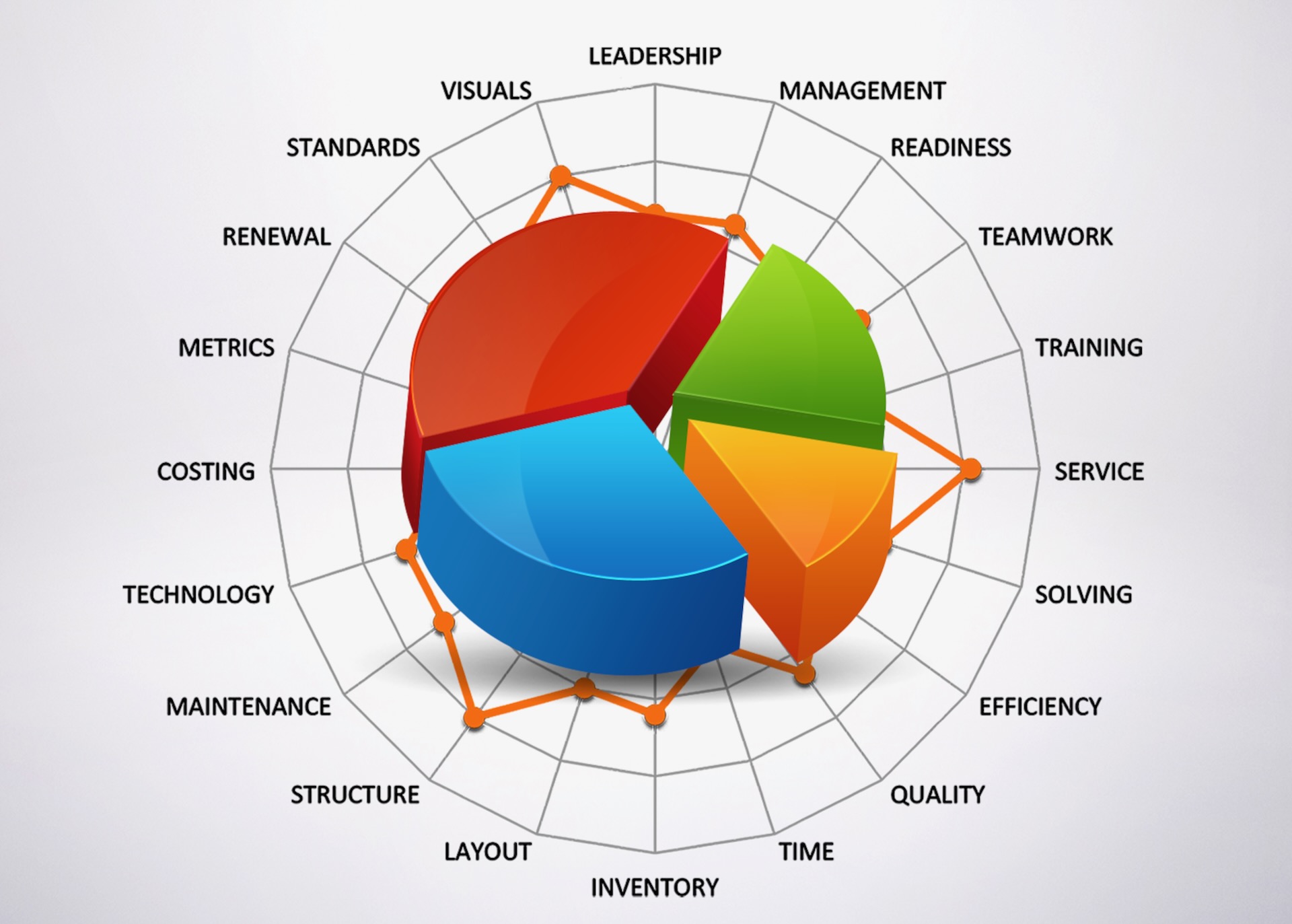
Muenzing, Joerg: “The 10 Keys to World-Class Operations” Leanmap 2015.
The Lean Audit for Operations Benchmarking is instrumental in preparing for the OpEx program. By utilizing this powerful tool, you can gain valuable insights into the current state and identify areas for improvement in manufacturing and service operations. Through an online questionnaire which can be completed within two hours, the Lean Audit provides a quick perspective on operations’ performance, setting a baseline for transformation. It serves as an ideal starting point for the OpEx journey ahead.
Operational Excellence: Hype or Not?

Mueller, Kai and Eckehard: “Developing and analysing different definitions of Operational Excellence” Springer 2020.
The term “Operational Excellence” is used in many ways in the context of transforming a company to play a relevant roll on the market in the future. A basic question is if these words are only a hype or does a scientific background exist? How is Operational Excellence is defined? An investigation is made to answer these questions and try to define Operational Excellence in the background of the actual developments.
Course Manuals 1-12
Course Manual 1: Driving Force
Unleash the Power of Purpose: Uncovering the Driving Force
“Always start with why.” – Simon Sinek.
In the pursuit of excellence, organizations often struggle with direction and motivation. Without a clear driving force, they risk becoming stagnant and complacent. However, the key to achieving greatness lies in uncovering the driving force and unleashing the power of purpose. By understanding the core motivations and reasons for pursuing excellence, organizations can align their actions, inspire their teams, and unlock the potential for remarkable gains in speed, quality, and productivity. We will now look at the compelling reasons why companies must recognize and harness the driving force to adapt and thrive.

“The Golden Circle” by Simon Sinek.
1. Adapting to Technological Advancements:
Technology continues to revolutionize industries and reshape the way businesses operate. Organizations that fail to harness the power of technological advancements risk becoming obsolete. From automation and artificial intelligence to data analytics and cloud computing, integrating these technologies into business processes drives efficiency, productivity, and innovation. Embracing digital transformation enables organizations to streamline operations, gain a competitive edge, and deliver enhanced value to customers.
2. Responding to Changing Customer Expectations:
Customers today have higher expectations than ever before. They demand personalized experiences, instant gratification, and seamless interactions across multiple touchpoints. Organizations must adapt their strategies, products, and services to meet these evolving customer needs. By proactively seeking customer feedback, leveraging data analytics, and embracing customer-centric approaches, organizations can develop agile and responsive business models that cater to the preferences and expectations of their target audience.

3. Navigating Globalization and Market Disruptions:
Globalization has connected economies, industries, and markets in ways never seen before. This interconnectedness brings both opportunities and challenges. Organizations must be adaptable and agile to navigate geopolitical shifts, economic fluctuations, and market disruptions. By staying informed about global trends, diversifying supply chains, and fostering innovation, organizations can mitigate risks and capitalize on emerging opportunities in new markets.
4. Fostering a Culture of Innovation:
Innovation is the lifeblood of any successful organization, not only in technology. To stay ahead, businesses must foster a culture that encourages creativity, experimentation, and continuous learning. Embracing innovation involves encouraging employees to think outside the box, empowering them to take calculated risks, and rewarding entrepreneurial thinking. By investing in research and development, partnering with startups, and fostering cross-functional collaboration, organizations drive breakthrough ideas and stay at the forefront of their industries.
5. Attracting and Retaining Top Talent:
The workforce of today seeks more than just a steady paycheck. Employees are drawn to organizations that provide meaningful work, opportunities for growth, and a positive company culture. To attract and retain top talent, organizations must adapt their approaches to talent management. This includes offering flexible work arrangements, prioritizing work-life balance, and providing avenues for professional development. By embracing diversity and inclusion, organizations can tap into a wider pool of talent, leading to greater innovation and success.
Conclusion:
In an era characterized by relentless change and disruption, organizations that fail to acknowledge and harness the driving force of change risk becoming irrelevant or even extinct. By clearly identifying its driving force and wholeheartedly embracing the power of change, capitalizing on emerging technologies, adapting to evolving customer expectations, navigating global complexities, fostering a culture of innovation, and attracting top talent, organizations can chart a course towards enduring success. Thriving in the modern era demands that organizations recognize the imperative to embrace change and evolution as intrinsic components of their strategies, structures, and cultures. By doing so, they not only survive but also position themselves as dynamic forces ready to navigate the ever-evolving landscape and seize the opportunities that lie ahead.
The Price of Stagnation: The Consequences of Resisting the Driving Force of Change
“It is not necessary to change. Survival is not mandatory.” – Edwards Deming
When organizations resist change, fail to evolve, and refuse to adapt to the ever-changing landscape, they expose themselves to many negative consequences that will likely hinder their growth and survival. Here are some potential outcomes that organizations may face when they resist the driving force of change:
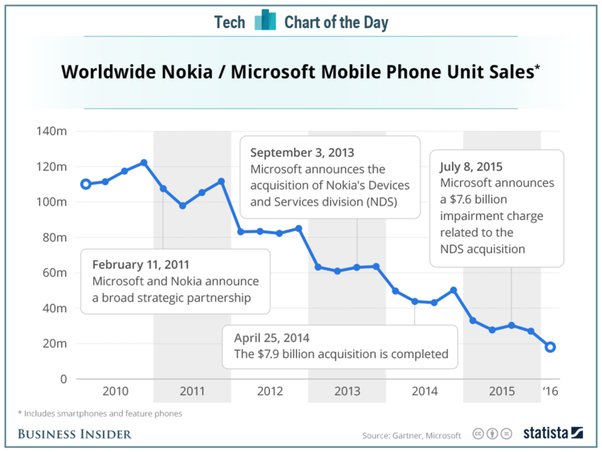
1. Loss of Competitive Advantage:
In a dynamic business environment, organizations that fail to adapt risk losing their competitive edge. Competitors who embrace change and leverage new technologies and strategies outperform and outmaneuver stagnant organizations. This leads to a decline in market share, revenue, and profitability. Remember Nokia and Blackberry?
2. Reduced Relevance and Obsolescence:
Industries and markets evolve rapidly, driven by technological advancements, changing consumer preferences, and shifting trends. Organizations that resist change risk becoming irrelevant as their products or services no longer meet the evolving needs and expectations of customers. They may find themselves left behind as newer and more innovative players emerge, rendering their offerings obsolete like a fax machine.
3. Inefficiency and Operational Challenges:
Failing to adapt to new technologies and processes leads to inefficiencies. Outdated systems and practices hinder productivity, increase costs, and impede growth. In contrast, organizations that embrace change can streamline operations, automate repetitive tasks, and optimize workflows, leading to improved efficiency and cost savings, while creating a competitive advantage.
4. Inability to Attract and Retain Talent:
The workforce of today seeks organizations that foster a culture of growth, innovation, and continuous learning. Organizations that resist change may struggle to attract and retain top talent who are looking for opportunities to develop new skills, work with cutting-edge technologies, and contribute to meaningful projects. This talent loss and brain drain can result in a lack of fresh perspectives and innovative thinking within the organization.
5. Missed Opportunities:
Change often brings new opportunities for growth, expansion, and diversification. By resisting change, organizations miss out on these opportunities, leaving the door open for competitors to seize them instead – example Tesla. Whether it’s entering new markets, developing new products or services, or adopting emerging trends, organizations that fail to adapt can stagnate and miss the chance to capitalize on emerging opportunities.
6. Financial Instability:
Organizations that resist change will get into financial trouble, sooner or later. The inability to adapt to shifting market demands leads to declining sales, reduced profitability, and increased costs. This impacts cash flow, hinders investment in necessary resources, and limits the ability to effectively respond to economic downturns or market disruptions.
7. Negative Reputation and Brand Perception:
In a world where information spreads rapidly through social media and online platforms, organizations that resist change can suffer reputational damage. Customers may perceive them as outdated, unresponsive, or untrustworthy. Negative brand perception can be challenging to overcome and results in a loss of customer loyalty and trust.

Conclusion:
Organizations that refuse to change and adapt face a multitude of risks, including loss of competitive advantage, reduced relevance, operational inefficiencies, difficulty attracting talent, missed opportunities, financial instability, and reputational harm. To remain resilient and thrive, organizations must embrace the driving force as an essential part of their strategies and actively seek opportunities for evolution and growth.
Uncovering the Driving Force: Unleash the Power of Purpose for Operational Excellence
In today’s highly competitive business landscape, organizations are constantly seeking ways to improve their performance and achieve sustainable success. One of the most effective strategies is the implementation of an Operational Excellence (OpEx) program. However, launching such a program without a clear driving force results in a lack of direction and motivation, leading to stagnation and complacency. To truly unlock the OpEx potential, it is crucial to identify and understand the reason for change, the driving force behind pursuing excellence.
Unveiling the core motivations and reasons for pursuing excellence is an essential first step. By doing so, organizations can align their actions and inspire their teams to strive for continuous improvement. Moreover, a deep understanding of the driving force behind an OpEx program empowers companies to unleash their full potential and achieve remarkable gains in speed, quality, and productivity.
One important task in identifying the driving force is to brainstorm the key reasons for pursuing excellence from the perspective of stakeholders. This involves engaging various stakeholders, such as employees, management, customers, shareholders, partners, and policy makers to understand their expectations and aspirations. It is through this collaborative effort that organizations can gain insights into what truly matters to each stakeholder group.
Employees, for instance, may view pursuing excellence as an opportunity for professional growth, skill development, and job satisfaction. Management, on the other hand, may focus on improving operational efficiency, reducing costs, and increasing profitability. Customers may expect higher quality products or services, faster delivery times, and enhanced customer experiences. Shareholders may seek increased returns on their investments and long-term sustainability. By considering these perspectives, organizations can identify the main driving force that resonates with all stakeholders and align their efforts accordingly.
Another crucial aspect is to recognize the potential risks of inaction and the costs associated with maintaining the status quo. Organizations that fail to adapt and improve run the risk of falling behind their competitors. By remaining stagnant, businesses may lose market share, customer loyalty, and relevance in their industry. Moreover, the costs of maintaining outdated processes, inefficient workflows, and subpar quality have a negative impact on profitability and sustainability.
Conversely, organizations can identify the potential benefits of achieving excellence and the gains that come with it. Implementing an OpEx program effectively results in improved speed, enabling companies to respond quickly to market changes, customer demands, and emerging opportunities. Enhanced quality leads to greater customer satisfaction, increased brand reputation, and a loyal customer base. A focus on productivity drives operational efficiency, optimizes resource utilization, and ultimately contributes to higher profitability.
By identifying the driving force behind the OpEx program, organizations establish a compelling purpose that guides their actions and motivates their teams. This purpose serves as a rallying point for all stakeholders, creating a shared vision and fostering a culture of continuous improvement. With a clear understanding of the driving force, organizations can align their strategies, allocate resources effectively, and measure progress accurately.
In conclusion, uncovering the driving force behind pursuing operational excellence is crucial for the success of any OpEx program. It empowers organizations to understand the purpose behind their efforts, align their actions, inspire their teams, and unlock their full potential. By considering the perspectives of stakeholders, identifying the potential risks of inaction, and recognizing the benefits of achieving excellence, organizations will launch an OpEx program with a clear vision and a strong motivation for success. With the driving force in place, organizations are well-positioned to embark on a journey of continuous improvement and sustainable growth.
Unleashing the Power of Disruption: Utilizing the Driving Force to Evolve and Thrive
When it comes to disrupting the status quo, there can be various driving forces that motivate organizations to break away from conventional practices and pursue operational excellence. Here are some examples:

1. Market Disruption:
The emergence of disruptive technologies, changing customer expectations, or new market entrants are driving forces for organizations to disrupt the status quo. By proactively challenging established norms and finding innovative solutions, companies can gain a competitive edge and capture new market opportunities. For example, a traditional brick-and-mortar retail company witnessing the rise of e-commerce giants may be driven to disrupt the status quo by investing in online platforms, leveraging data analytics for personalized customer experiences, and implementing efficient supply chain practices to compete effectively in the digital landscape.
2. Cost Efficiency:
Rising costs, economic downturns, or financial pressures are driving forces that pushes organizations to reevaluate their operations and seek ways to improve cost efficiency. By disrupting the status quo, companies can identify inefficiencies, streamline processes, and optimize resource utilization to achieve significant cost savings. For example, a manufacturing company facing increasing raw material costs may be driven to disrupt the status quo by implementing lean manufacturing principles, optimizing production processes, and embracing automation technologies to reduce waste, improve productivity, and lower overall operational costs.
3. Customer-Centricity:
Evolving customer expectations and demands can serve as a powerful driving force for organizations to disrupt their existing practices and place a strong emphasis on customer-centricity. By prioritizing the customer experience and tailoring products, services, and processes accordingly, companies gain a competitive advantage and foster customer loyalty. For example, an insurance company experiencing a decline in customer satisfaction and retention rates may be driven to disrupt the status quo by implementing a customer-centric approach. This may involve digital transformation initiatives to enhance accessibility, introducing innovative insurance products based on customer needs, and leveraging technology for personalized claims processing and support.
4. Regulatory Changes:
New regulations or industry standards are often a catalyst for organizations to disrupt the status quo and ensure compliance while driving operational excellence. By proactively adapting to regulatory changes, companies can minimize risks, improve transparency, and strengthen their overall business practices. For example, a financial institution operating in a highly regulated environment may be driven to disrupt the status quo by implementing robust risk management frameworks, enhancing data security measures, and adopting advanced compliance technologies to meet regulatory requirements and maintain a strong reputation.
5. Internal Cultural Shift:
Sometimes, the driving force to disrupt the status quo comes from within the organization itself. A cultural shift, driven by visionary leadership or a desire for continuous improvement, can inspire employees to challenge existing norms and strive for excellence. For example, a pharma company recognized the potential of data-driven insights and encouraged its employees to challenge conventional research and development practices. By embracing predictive analytics and machine learning, the company revolutionized drug discovery and development processes, accelerating the introduction of groundbreaking therapies.

6. Technological Advancements:
Rapid advancements in technology can serve as a driving force for organizations to disrupt their existing practices and embrace digital transformation. By leveraging cutting-edge technologies, companies can revolutionize their operations, enhance efficiency, and gain a competitive advantage. For example, an energy utility company may be driven to adopt smart grid technologies, integrating renewable energy sources, and implementing advanced metering infrastructure. These technological advancements can optimize energy distribution, improve resource management, and support sustainability initiatives.
7. Talent Attraction and Retention:
The need to attract and retain top talent can act as a driving force for organizations to disrupt the status quo. By creating a culture of innovation, embracing flexible work arrangements, and offering growth opportunities, companies can position themselves as desirable employers and foster a high-performing workforce. For example, a tech startup competing for skilled software developers may be driven to disrupt the status quo by implementing agile processes, adopting collaborative development tools, and offering better hardware and remote work options. These initiatives help attract top talent, promote creativity, and drive operational excellence in software development. In an interview with a tech engineer, money was not a big motivation, rather he insisted on having an Apple Pro computer for his work or would go elsewhere.
8. Social and Environmental Responsibility:
Growing awareness of social and environmental issues can motivate organizations to embrace sustainable business practices. By integrating social and environmental responsibility into their operations, companies can enhance their brand reputation, attract conscious consumers, and contribute to a better world. For example, a fashion retailer concerned about the environmental impact of the industry may implement sustainable sourcing practices, adopting eco-friendly manufacturing processes, and promoting ethical fashion. These initiatives better align the company’s operations with consumer values, differentiate its brand, and drive operational excellence with a focus on sustainability.
9. Competitive Pressures:
Intensified competition within an industry can serve as a driving force for organizations to disrupt the status quo and differentiate themselves. By challenging traditional industry norms, companies can find new ways to stand out, meet customer needs, and gain a competitive edge. For example, an airline facing stiff competition may be driven to disrupt the status quo by reevaluating its customer service approach, enhancing the in-flight experience, and implementing innovative revenue management strategies. These efforts can help the airline differentiate itself in the market, increase customer loyalty, and improve operational efficiency.
10. Changing Demographics:
Shifts in demographics, such as generational preferences or diverse workforce dynamics, can drive organizations to adapt their practices to meet the needs of evolving demographics. For example, a healthcare provider catering to an aging population may be driven to implement telehealth services, adopting electronic health records, and enhancing patient engagement through digital platforms. These initiatives improve accessibility, streamline healthcare delivery, and meet the changing expectations of patients.
Conclusion:
The driving forces that push organizations to shake things up can come from various sources, depending on the industry, market conditions, and internal factors. By recognizing and embracing these driving forces, organizations can supercharge their operations and stay competitive for the long haul. These examples show that the motivation to disrupt the status quo can come from changing market dynamics, cost considerations, putting customers at the center, adapting to new regulations, or even a shift in internal culture. By acknowledging and embracing these driving forces, organizations can ignite a spark for change, break free from outdated practices, and embark on a journey towards operational excellence.

Case Study 1A: Netflix’s Success
Introduction:
Netflix, founded in 1997 as a DVD rental-by-mail service, experienced a transformative journey that disrupted the status quo and revolutionized the entertainment industry. By embracing the driving force of technological innovation, the company evolved and achieved unprecedented levels of success.
Disrupting the Status Quo:
In the early 2000s, as the internet gained popularity, Netflix recognized the potential of streaming technology and identified an opportunity to disrupt the traditional video rental market. CEO Reed Hastings made a bold strategic shift, steering the company towards online streaming. This disruptive move challenged the dominance of brick-and-mortar video rental stores and shifted the way people consumed entertainment.
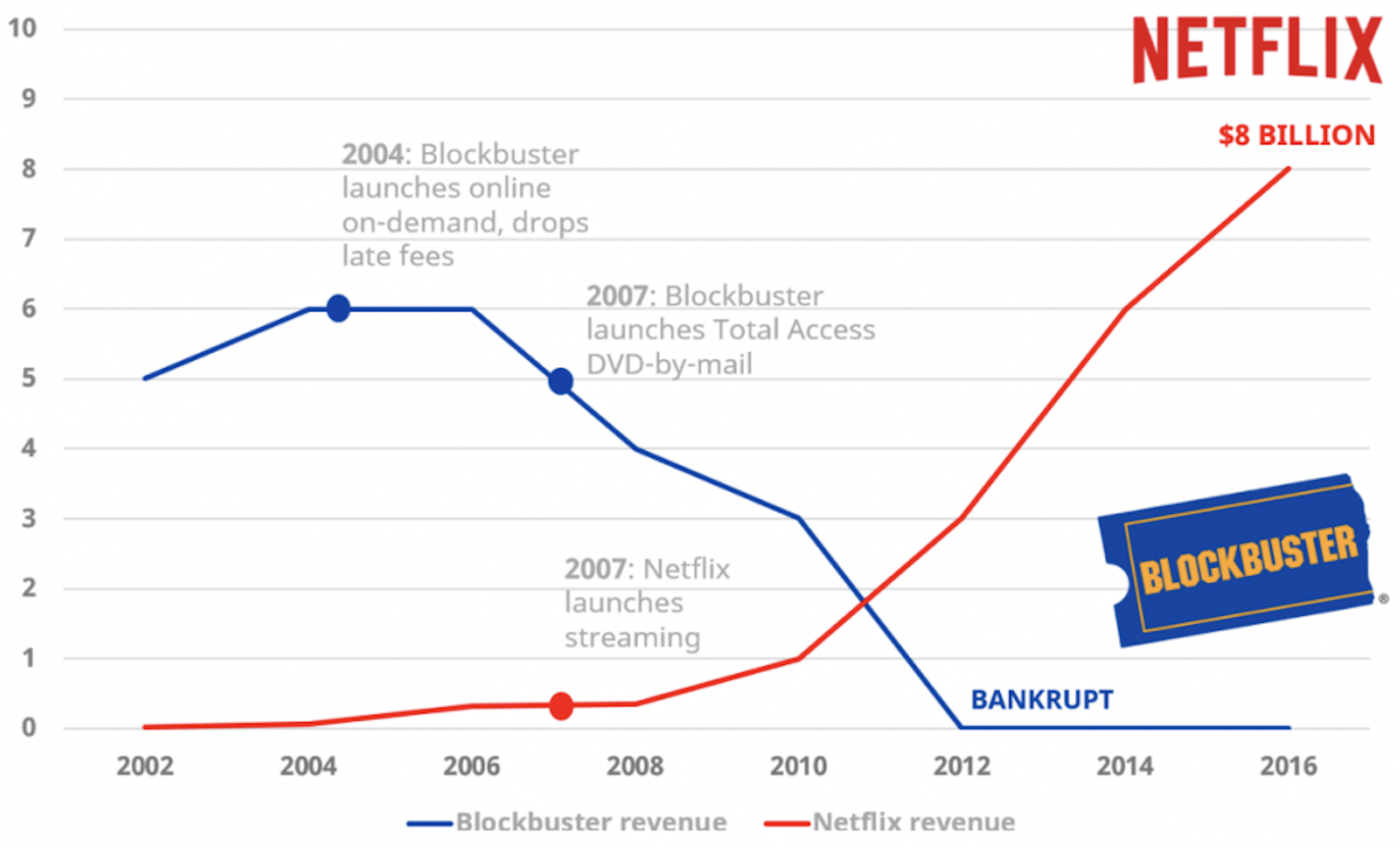
Netflix Disruptive Innovation (www.the-waves.org)
Embracing Technological Innovation:
Netflix invested heavily in developing a robust streaming platform, allowing subscribers to stream movies and TV shows directly to their devices. By leveraging the driving force of technological innovation, Netflix transformed itself into a leading streaming service provider, expanding its offerings beyond physical DVD rentals.
Evolving Business Model:
Netflix further disrupted the status quo by introducing original content production, challenging traditional television networks and film studios. By creating compelling and award-winning original series like “House of Cards” and “Stranger Things,” Netflix not only attracted subscribers but also positioned itself as a major content producer. This evolution of their business model propelled Netflix to a new level of performance and established the company as a dominant player in the entertainment industry.
New Level of Performance:
Netflix’s disruption and evolution brought remarkable results. The company witnessed exponential growth in subscriber numbers and revenue. By embracing the driving force of technology and continually improving their streaming platform, Netflix offered an unmatched user experience, personalized recommendations, and seamless access to a vast library of content. This customer-centric approach, coupled with disruptive content production, led to increased customer loyalty and market dominance.
Lessons Learned:
Netflix’s remarkable success story is a testament to their astute ability to harness the driving force of technological innovation, challenge the existing norms, and continually evolve their business model. By fundamentally transforming the way audiences consume entertainment, investing in compelling original content, and continuously enhancing their streaming platform, Netflix has achieved unprecedented levels of performance, forever reshaping the entertainment landscape. This in-depth case study of Netflix exemplifies the transformative power of embracing the driving force to disrupt the status quo, drive evolution, and attain a new echelon of performance. It serves as a resounding inspiration for organizations to proactively embrace change, leverage technology, and innovate their business models to thrive amidst the dynamic currents of an ever-changing world.

Case Study 1B: Kodak’s Failure
Introduction:
Kodak, founded in 1888, was once a dominant force in the photography industry. However, the company’s failure to embrace the driving force of digital photography ultimately led to its downfall.
Ignoring the Digital Revolution:
In the late 20th century, the emergence of digital photography disrupted the traditional film-based industry. Despite having early insights into the potential of digital technology, Kodak failed to fully embrace it. The company clung to its lucrative film business and underestimated the impact of the digital revolution on consumer behavior and preferences.
Lack of Adaptation and Innovation:
Kodak’s resistance to change and its reluctance to transition into the digital era proved detrimental. While competitors such as Canon and Nikon embraced digital photography and invested in digital camera technology, Kodak remained heavily reliant on film sales, failing to adapt its business model accordingly. The company’s failure to innovate and evolve with the changing landscape resulted in missed opportunities and lost market share.
Photos taken per year, analog versus total (www.diamandis.com)
Missed the Shift in Consumer Behavior:
With the rise of smartphones and social media, the way people captured, shared, and stored photos underwent a significant transformation. Kodak, entrenched in its film-based mindset, failed to recognize the shift in consumer behavior towards digital imaging and the growing demand for instant and mobile photography. This lack of foresight and failure to meet changing customer needs proved to be a critical mistake.
Bankruptcy and Decline:
As digital cameras and smartphones gained popularity, Kodak’s film business declined rapidly, leading to significant financial struggles. The company’s lack of investment in digital technologies and its failure to embrace the driving force of digital photography eventually forced Kodak to file for bankruptcy protection in 2012. Despite attempts to restructure and refocus its business, Kodak’s failure to adapt to the digital revolution resulted in a diminished market presence and a tarnished brand image.
Lessons Learned:
The downfall of Kodak serves as a cautionary tale, underscoring the dire consequences that can befall organizations when they fail to acknowledge and respond to the winds of technological change. Kodak’s resistance to innovation, disregard for emerging trends, and tenacious attachment to outdated business models ultimately resulted in missed growth opportunities and self-inflicted decline. This compelling case highlights the critical importance of agility, adaptability, and a perpetual commitment to innovation in a marketplace characterized by relentless evolution. Kodak’s story stands as a stark reminder for companies to maintain vigilance, actively monitor the ever-shifting business landscape, and proactively seek out avenues for disruption to preserve their relevance and competitiveness in the face of the swift and ceaseless changes that define today’s business world.

Exercise 1.1: Force-Field Battle

1. Divide participants into 3 groups and provide drawing materials or digital tools.
2. Explain force-field analysis and its role in identifying driving and restraining forces.
3. Each group imagines a superhero for their desired change.
4. Participants draw their superhero, including name, costume, and superpowers symbolizing driving forces.
5. Identify supervillains as restraining forces and draw them accordingly.
6. Groups present their superheroes and supervillains, explaining the forces they represent.
7. Facilitate a discussion on managing the forces for and against change.
8. Brainstorm strategies to strengthen driving forces.
9. Brainstorm strategies to weaken restraining forces.
10. Conclude by emphasizing the importance of understanding and managing forces for operational excellence.

Course Manual 2: Vision Statement
Inspiring Change and Achieving Excellence: The Role of Vision Statements
“The best way to predict the future is to create it.” – Peter Drucker
A vision statement plays a vital role in an organization’s pursuit of operational excellence. It provides a clear and concise expression of the desired future state and direction of the organization, aligning its goals with the broader vision and mission. We will now explore the importance of a vision statement in achieving operational excellence, with examples for each point:

1. Goal Alignment:
A compelling vision statement ensures that all efforts within an organization are moving in the same direction. For example, let’s consider a retail company with a vision statement focused on providing sustainable and ethically sourced products. This vision aligns the organization’s goals with the commitment to sustainability and guides decision-making processes, such as selecting suppliers, developing product lines, and implementing eco-friendly practices.
2. Inspiration and Motivation:
An OpEx program requires effort and commitment from all levels of the organization. A compelling vision statement serves as a powerful source of inspiration and motivation. Let’s take the example of a software development company with a vision statement centered around creating innovative solutions to transform industries. This vision statement inspires employees by highlighting the potential impact their work can have on disrupting traditional practices, solving complex problems, and driving positive change.
3. Stakeholder Engagement:
Engaging stakeholders is crucial for the success of an OpEx program. A compelling vision statement plays a key role in rallying stakeholders around a common goal. Consider a non-profit organization with a vision statement focused on eradicating poverty through education and community development. This vision statement captures the interests and aspirations of donors, volunteers, and the community, creating a sense of shared purpose and encouraging their active involvement in supporting the organization’s initiatives.
4. Strategic Focus:
A vision statement helps define the strategic focus areas of an OpEx program. For example, imagine a manufacturing company with a vision statement that emphasizes being a leader in sustainable practices while delivering high-quality products. This vision guides the organization’s strategic choices, such as investing in renewable energy sources, implementing waste reduction measures, and optimizing production processes to minimize environmental impact. It ensures that the OpEx program is aligned with the organization’s long-term goals and sustainability objectives.
5. Continuous Improvement:
A compelling vision statement provides a long-term perspective that emphasizes the pursuit of continuous improvement. Let’s consider a healthcare provider with a vision statement centered around providing patient-centered care and medical innovation. This vision statement encourages stakeholders to consistently seek ways to enhance patient experiences, improve healthcare outcomes, and embrace new technologies and treatments. It fosters a culture of learning, adaptation, and innovation, driving the organization’s commitment to ongoing improvement.
Conclusion:
Elaborating on each point reinforces the importance of a compelling vision statement in achieving operational excellence. It ensures alignment, inspires and motivates stakeholders, fosters engagement, provides strategic focus, and emphasizes continuous improvement. By developing and effectively communicating a vision statement, organizations can guide their OpEx programs towards success, aligning efforts and driving progress towards their desired future state.
Lost in Ambiguity: The Pitfalls of an Undefined or Unclear Vision
“The only thing worse than being blind is having sight but no vision.” – Helen Keller
Without a clear vision, the OpEx program lacks a guiding framework that outlines the desired future state and sets the direction for operational improvement efforts. This lack of direction hampers strategic alignment, impedes effective communication, and dampens employee motivation and engagement, thus hindering the program’s success and overall organizational improvement efforts. The main negative consequences are the following:

1. Lack of Direction:
Without a clear vision, there is no guiding path for the organization to follow. This can result in a sense of ambiguity and confusion among employees, making it difficult for them to align their efforts towards a common goal. The absence of direction can lead to wasted resources, inefficiencies, and a lack of progress. For example, in a company without a clear vision, employees may work on projects that are unrelated or contradictory, causing confusion and wasting time and resources.
2. Misguided Actions:
An unclear vision fails to provide a clear understanding of the desired future state. As a result, employees may make decisions and take actions that are not aligned with the organization’s goals and values. This can lead to conflicting priorities, suboptimal strategies, and wasted efforts on initiatives that do not contribute to the overall vision. For example, if a company’s vision is to become a leader in sustainable technology, but the employees are not aware of this vision, they may invest in projects that have no relation to sustainability, thus misusing resources and deviating from the desired future state.
3. Lack of Motivation and Engagement:
A compelling vision serves as a source of inspiration and motivation for employees. Without a clear vision, employees may struggle to find meaning and purpose in their work, leading to decreased motivation and engagement. This can negatively impact productivity, creativity, and overall employee satisfaction. For example, when employees lack a clear vision, they may feel disconnected from the company’s mission and goals, leading to a decrease in enthusiasm and dedication to their work. This can result in reduced productivity and lower job satisfaction.
4. Ineffective Communication:
A vision statement provides a framework for effective communication within the organization. When the vision is undefined or unclear, it becomes challenging to communicate goals, expectations, and strategic priorities to stakeholders. Miscommunication, misunderstandings, and lack of alignment can result in confusion, resistance to change, and decreased collaboration. For example, if a company’s vision is not clearly communicated, different departments may have conflicting understandings of the organization’s goals. This can lead to misalignment, delays in decision-making, and breakdowns in cross-functional collaboration.
5. Missed Opportunities:
An undefined or unclear vision can hinder the organization’s ability to identify and capitalize on opportunities for growth and improvement. Without a clear direction, the organization may fail to recognize emerging trends, market changes, or innovative ideas that could drive success. This can result in missed opportunities to gain a competitive advantage or adapt to changing market dynamics. For example, a company operating without a clear vision may fail to spot emerging market trends or disruptive technologies, causing them to miss opportunities for growth and innovation. Meanwhile, competitors who have a well-defined vision may seize those opportunities and gain a competitive edge.
6. Lack of Accountability:
A well-defined vision sets expectations and creates a sense of accountability throughout the organization. When the vision is unclear, it becomes challenging to hold individuals and teams accountable for their performance and results. This can lead to a lack of ownership, complacency, and a diminished sense of responsibility. For example, in a company without a clear vision, employees may not have clear performance goals or expectations. This lack of clarity can lead to a lack of accountability, as individuals may not feel responsible for achieving specific outcomes or meeting organizational targets.
7. Lack of Innovation:
Without a clear vision, organizations may struggle to foster a culture of innovation. Employees may not have a clear understanding of the organization’s future aspirations, making it difficult for them to generate and pursue innovative ideas. This can result in missed opportunities to develop new products, services, or processes that could drive growth and competitiveness. For example, in a technology company without a clear vision, employees may hesitate to propose and explore new technologies or advancements, hindering the company’s ability to stay ahead of the curve and innovate in a rapidly evolving industry.
8. Customer Dissatisfaction:
An undefined or unclear vision can lead to inconsistent customer experiences. Without a clear direction, employees may have different interpretations of what constitutes excellent customer service, resulting in inconsistent service delivery. This can lead to customer dissatisfaction, negative reviews, and ultimately, loss of business. For example, in a retail company without a clear vision, employees in different stores may provide inconsistent levels of customer service, leading to varying customer experiences. This can result in dissatisfied customers who may choose to shop elsewhere.
9. High Employee Turnover:
A lack of vision can contribute to high employee turnover rates. Without a clear understanding of the organization’s direction and purpose, employees may feel disconnected and undervalued, leading to low job satisfaction and a desire to seek opportunities elsewhere. For example, in a company with an unclear vision, employees may feel uncertain about the company’s future and their role within it. This lack of clarity and purpose can lead to a higher turnover rate as employees seek organizations that provide a clearer sense of direction and purpose.
10. Inefficient Resource Allocation:
An undefined or unclear vision can result in inefficient resource allocation. Without a clear understanding of the organization’s priorities and strategic focus, resources may be allocated haphazardly, leading to wasted time, money, and effort on initiatives that do not align with the overall vision. For example, in a nonprofit organization without a clearly defined vision, funds and resources may be allocated to projects that do not align with the organization’s mission. This inefficient allocation can result in the mismanagement of resources and a diminished impact on the target beneficiaries.
Conclusion:
The pitfalls of an undefined or unclear vision are far-reaching and impactful. They include a lack of direction, misguided actions, decreased motivation, ineffective communication, missed opportunities, a lack of accountability, a dearth of innovation, customer dissatisfaction, high employee turnover, and inefficient resource allocation. Organizations must prioritize the development and effective communication of a clear vision to foster alignment, engagement, and strategic focus, ensuring their success and growth in the long run.
From Ambiguity to Clarity: The Impact of a Compelling Vision on Program Success
“The greatest danger is not that we aim too high and miss it, but that we aim too low and reach it.” – Michelangelo
A well-crafted vision statement acts as a guiding compass, providing a sense of purpose and direction for the organization. It consists of several key elements that together form a powerful narrative that inspires, aligns, and mobilizes stakeholders. By understanding and implementing these elements, we will establish a solid foundation for success, foster a shared sense of purpose, and unleash their full potential for transformative growth and achievement.

1. Conciseness:
A compelling vision statement is succinct and concise, using concise language to convey the intended message. It should be brief enough to be easily understood and remembered by employees and stakeholders. A technology company’s vision statement could be “Empowering Innovation Globally.” This concise statement captures the organization’s focus on driving innovation and its global impact in just four words.
2. Clarity:
The vision statement should be clear and easily comprehensible to ensure that everyone understands the direction the organization aims to move towards. It should avoid jargon or ambiguous terms, using plain language that resonates with a wide audience. A retail company’s vision statement could be “Delivering Exceptional Shopping Experiences for All.” This clear and straightforward statement communicates the organization’s commitment to providing exceptional customer experiences to a wide range of shoppers.
3. Inspirational:
A compelling vision statement should inspire and motivate employees. It should evoke a sense of excitement, aspiration, and purpose, encouraging individuals to go above and beyond their daily tasks to contribute to the realization of the vision. Imagine a nonprofit organization with a vision statement like “Building a World Free of Hunger and Poverty.” This inspiring vision statement motivates employees and stakeholders by highlighting the organization’s noble goal of creating a better world for those affected by hunger and poverty.
4. Future-Oriented:
A vision statement should focus on the future and articulate the organization’s long-term goals and aspirations. It should paint a compelling picture of what the organization aims to achieve, creating a sense of forward momentum and a shared purpose. A renewable energy company’s vision statement could be “Leading the Transition to Clean and Sustainable Energy Solutions.” This future-oriented vision statement outlines the organization’s commitment to being at the forefront of the clean energy revolution, driving positive environmental change.
5. Alignment:
A compelling vision statement aligns with the organization’s values, mission, and strategic objectives. It should be consistent with the organization’s core principles and beliefs, ensuring that it resonates with employees and stakeholders and is seen as authentic and credible. Consider a healthcare provider with a vision statement like “Providing Compassionate Care with Integrity and Excellence.” This vision statement aligns with the organization’s values of compassion and integrity, reinforcing its commitment to delivering high-quality healthcare services.
6. Specificity:
While the vision statement should be future-oriented, it should also provide enough specificity to guide decision-making and action. It should communicate a clear sense of direction, outlining the key areas or outcomes the organization seeks to achieve. A manufacturing company’s vision statement could be “Becoming the Industry Leader in Precision Engineering Solutions.” This specific vision statement highlights the organization’s aim to excel in the field of precision engineering, guiding strategic decisions and resource allocation.
7. Relevance:
A compelling vision statement should be relevant to the organization’s industry, market, and stakeholders. It should reflect an understanding of the external environment and the organization’s unique position within it, demonstrating a forward-looking perspective. For example, an e-commerce company’s vision statement could be “Revolutionizing Online Shopping for the Digital Age.” This vision statement recognizes the organization’s role in the digital era and its ambition to transform the way people shop online.
8. Communicability:
The vision statement should be easily communicated and understood by employees and stakeholders at all levels of the organization. It should be memorable and resonate with individuals, allowing them to internalize and articulate the vision in their own words. Imagine a hospitality company with a vision statement like “Creating Unforgettable Memories, One Guest at a Time.” This vision statement is easily understood and communicated, emphasizing the organization’s commitment to delivering exceptional experiences for each guest.
Conclusion:
By incorporating these components into a vision statement, we will create a powerful and compelling narrative that serves as a guiding light, inspiring employees, aligning efforts, and driving change and progress towards the desired future state.
Visualizing Success: The Power of Drawing or Painting the “Dream State”
When it comes to communicating a vision, the use of visual elements such as drawing or painting can be more effective than relying solely on text. Visual representations have a unique ability to transcend language barriers, engage emotions, and stimulate the imagination. Here are a few reasons why drawing or painting the vision can be more impactful:
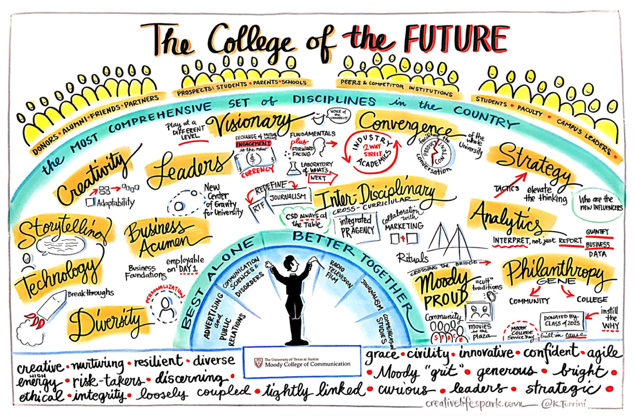
Vision Statement for Moody College by Katherine Torrini (creativecatalyst.com)
1. Emotional Connection: Visuals have a powerful impact on our emotions. They can evoke feelings, spark inspiration, and create a sense of resonance. By representing the vision through drawings or paintings, individuals are more likely to connect with the message on a deeper level, fostering a stronger emotional bond to the vision and increasing their commitment to its realization.
2. Clarity and Simplicity: Complex ideas can be conveyed more succinctly and clearly through visuals compared to lengthy written descriptions. Drawings or paintings allow for the simplification and abstraction of concepts, distilling them into a visual representation that can be easily understood and remembered. This clarity eliminates potential misunderstandings or misinterpretations that may arise from relying solely on text.
3. Engaging the Imagination: Visual representations stimulate the imagination and invite individuals to envision the future state in a more vivid and tangible way. Through drawings or paintings, the vision comes to life, allowing people to visualize themselves as part of the narrative. This imaginative engagement ignites creativity, enthusiasm, and a sense of possibility, inspiring individuals to actively contribute to the realization of the vision.
4. Universal Language: Visuals transcend language barriers and cultural differences. They have the power to communicate ideas and concepts across diverse audiences, ensuring a more inclusive and comprehensive understanding of the vision. Whether individuals have different native languages or varying levels of literacy, visual representations can bridge those gaps and ensure a shared understanding of the vision’s essence.
5. Memorability: Visuals are more likely to be remembered than text alone. The human brain is wired to process and retain visual information more effectively. By presenting the vision through drawings or paintings, organizations can create a memorable impression that lingers in the minds of individuals, reinforcing the vision’s importance and keeping it at the forefront of their thoughts and actions.
Draw Your Dream!
In summary, drawing or painting the vision provides a compelling and effective means of communication that goes beyond the limitations of text. By leveraging visual elements, organizations can tap into the emotional, imaginative, and universal aspects of human perception, enabling a deeper connection, clarity, engagement, and memorability of the vision.
Vision or Mission – What’s the Difference?
The terms “vision” and “mission” are often used together when formulating organizational statements, but they serve distinct purposes. A vision paints a picture of mission accomplished. The vision is what the organization wants to BE, the mission is a high-level statement of what the organization wants to DO, and the strategy contains the key paths chosen to achieve that vision.
Visions inspire. A vision statement articulates the desired future state or long-term aspirations of an organization. It paints a compelling picture of what the organization aims to achieve and the impact it seeks to make. A vision statement is forward-looking, inspirational, and provides guidance for strategic decision-making and goal-setting.
Missions clarify. A mission statement defines the fundamental purpose of an organization. It communicates the organization’s core values, primary activities, and the specific needs it aims to address. A mission statement answers the question of why the organization exists and outlines its primary objectives.

Combining the vision and mission into one statement can be beneficial for several reasons. First, it provides a comprehensive and concise overview of both the organization’s long-term aspirations and its fundamental purpose. It helps align the organization’s strategic direction with its underlying values and objectives.
Additionally, combining the vision and mission statements in one statement promotes clarity and consistency in communication. It presents a unified message that stakeholders can easily understand and rally behind. It also reduces the risk of confusion or conflicting interpretations of the organization’s purpose and goals.
By merging the vision and mission into a single statement, you can effectively convey their overarching aspirations, purpose, values, and objectives in a succinct and powerful manner. This unified statement serves as a guiding beacon for the organization and inspires stakeholders to work collectively towards a shared vision.
Great Vision-Mission Statements for Inspiration
• Google: “Our vision is to organize the world’s information and make it universally accessible and useful, while our mission is to be the most innovative and respected company in the world.”
• Tesla: “Our vision is to accelerate the advent of sustainable transport by bringing compelling mass-market electric cars to market as soon as possible, and our mission is to create the most compelling car company of the 21st century by driving the world’s transition to electric vehicles.”
• Microsoft: “Our vision is to empower every person and every organization on the planet to achieve more through technology that transforms the way people work, play, and communicate, and our mission is to make this vision a reality.”
• Nike: “Our vision is to bring inspiration and innovation to every athlete in the world, and our mission is to be the world’s leading sports and fitness company.”
• Amazon: “Our vision is to be Earth’s most customer-centric company, where customers can find and discover anything they might want to buy online, and our mission is to build a place where people can come to find and discover anything they might want to buy online.”
• Apple: “Our vision is to bring the best user experience to our customers through our innovative hardware, software, and services, and our mission is to be the most innovative company in the world.”
• Coca-Cola: “Our vision is to refresh the world, inspire moments of optimism and happiness, and create value and make a difference as the world’s best beverage company, and our mission is to achieve this vision by delivering quality beverages to our customers.”
• Airbnb: “Our vision is to create a world where anyone can belong anywhere, and our mission is to be the world’s most loved hospitality company, offering unique and memorable travel experiences.”
• Facebook: “Our vision is to give people the power to build community and bring the world closer together, and our mission is to connect the world and make it more open and accessible.”
• Disney: “Our vision is to entertain, inform, and inspire people around the globe through the power of unparalleled storytelling, and our mission is to be one of the world’s leading producers and providers of entertainment and information.”
• Starbucks: “Our vision is to inspire and nurture the human spirit – one person, one cup, and one neighborhood at a time, and our mission is to establish Starbucks as the premier purveyor of the finest coffee in the world while maintaining our uncompromising principles.”
• IBM: “Our vision is to be the world’s most successful and important information technology company, and our mission is to lead in the creation, development, and manufacture of the industry’s most advanced information technologies.”
• UNICEF: “Our vision is to ensure that every child has a childhood full of love, laughter, and learning, and our mission is to be the driving force that helps build a world where the rights of every child are realized.”
• McDonald’s: “Our vision is to be our customers’ favorite place and way to eat and drink, and our mission is to be the world’s best quick-service restaurant experience.”
• Walmart: “Our vision is to save people money so they can live better, and our mission is to be the destination where everyone can find their favorite products at low prices.”
• World Wildlife Fund (WWF): “Our vision is to conserve nature and reduce the most pressing threats to the diversity of life on Earth, and our mission is to build a future in which people live in harmony with nature.”
• Amnesty International: “Our vision is to conduct research and generate action to prevent and end grave abuses of human rights worldwide, and our mission is to work tirelessly to protect the rights and dignity of every individual, advocating for justice, freedom, and equality.”
• Red Cross: “Our vision is to prevent and alleviate human suffering wherever it may be found, and our mission is to mobilize the power of humanity to provide emergency assistance, promote health and safety, and support communities in need.”
• Greenpeace: “Our vision is to create a greener and more peaceful world, one where the environment is protected and valued, and our mission is to confront environmental issues head-on through non-violent direct action, investigation, and promoting sustainable solutions.”
• United Nations: “Our vision is to create a better world by fostering peace, promoting sustainable development, and upholding human rights and social progress, and our mission is to unite nations in collective efforts to achieve these goals and provide a platform for global cooperation.”

Case Study: Microsoft’s Compelling Vision
Microsoft Corporation, a globally renowned technology company, has been at the forefront of innovation and digital transformation. In its pursuit of excellence, Microsoft recognized the significance of a compelling vision statement to align stakeholders, motivate employees, and lead to breakthrough success. By crafting a vision that reflected its core values, commitment to innovation, and customer-centric approach, Microsoft achieved remarkable outcomes and solidified its position as a technology leader.

Challenge: Microsoft faced the challenge of aligning its diverse workforce and fostering a unified sense of purpose. With multiple product lines and a rapidly evolving industry, the company needed a vision statement that would inspire and guide its employees towards a common goal.
Solution: Microsoft embarked on a journey to develop a compelling vision statement by leveraging its core strengths and aspirations. The company took the following steps:
1. Inclusive Employee Involvement:
Recognizing the importance of employee engagement, Microsoft encouraged active participation from its employees across various levels and departments. Through surveys, focus groups, and town hall meetings, employees were given the opportunity to contribute their perspectives, ideas, and aspirations. This collaborative approach ensured that the vision statement would resonate with the entire organization.
2. Customer-Centric Approach:
Microsoft’s commitment to its customers was a cornerstone of its vision statement. The company conducted extensive market research, analyzed customer feedback, and identified emerging trends and needs. By aligning the vision statement with the evolving expectations of its customers, Microsoft aimed to provide transformative solutions that would empower individuals and organizations.
3. Embracing Innovation:
Innovation was deeply ingrained in Microsoft’s DNA. The vision statement emphasized the company’s dedication to pushing boundaries and creating groundbreaking technologies. Microsoft fostered a culture of curiosity, experimentation, and continuous learning to fuel innovation and drive transformative change. This commitment to innovation was reflected in the vision statement.
Outcome:
Microsoft’s vision statement “To empower every individual and organization on the planet to achieve more through transformative technology solutions, innovative products, and a commitment to customer-centricity” yielded significant outcomes and transformative impact:
A) Stakeholder Alignment:
The vision statement served as a unifying force, aligning stakeholders, including employees, customers, and partners, around a shared purpose. It provided a clear direction for decision-making, strategic planning, and resource allocation. Microsoft’s vision statement helped stakeholders understand and contribute to the overarching goals of the company.
B) Employee Motivation:
The compelling vision statement inspired and motivated Microsoft’s employees to strive for excellence. It created a sense of purpose and pride among the workforce, fostering a collaborative and innovative environment. Employees were empowered to push boundaries, explore new possibilities, and contribute their best efforts towards achieving the company’s vision.
C) Breakthrough Success:
Microsoft’s vision-driven approach led to breakthrough success in various areas. The company introduced groundbreaking products, such as Windows operating systems, Office productivity suites, and Azure cloud services. It expanded its presence in emerging technologies, including artificial intelligence, augmented reality, and quantum computing. Microsoft’s vision statement guided its strategic initiatives, enabling it to maintain a competitive edge and drive sustained growth.
Conclusion:
Microsoft’s case study exemplifies the power of a compelling vision statement in aligning stakeholders, motivating employees, and driving breakthrough success. By involving employees, embracing a customer-centric approach, and emphasizing innovation, Microsoft crafted a vision that reflected its values and aspirations. This vision acted as a guiding light, inspiring the organization to push boundaries, deliver transformative solutions, and solidify its position as a global technology leader. The case study highlights Microsoft’s journey to create an inspiring vision and demonstrates the transformative impact of a well-crafted vision statement in driving exceptional outcomes.

Exercise 1.2: Visionary Voyage
1. Divide participants into 3 groups and provide drawing materials or digital tools.
2. Introduce the concept of envisioning change and the significance of a vision statement.
3. Encourage participants to envision their organization on a thrilling voyage towards a better future.
4. In groups, brainstorm and discuss the key elements and aspirations for their envisioned future.
5. Collaboratively craft a compelling and concise vision statement that captures the collective aspirations for change.
6. Create a visual representation of the vision statement using colors, symbols, and images.
7. Present the vision statement and explain the rationale behind the chosen elements and visuals.
8. Facilitate a group discussion to explore common themes, unique perspectives, and shared values.
9. Encourage constructive feedback and questions to enhance the clarity and understanding of each vision.
10. Conclude by highlighting the power of a compelling vision to inspire and align everyone towards a shared purpose.

Course Manual 3: Anticipated Gains
Unlocking Potential: Anticipated Gains of Operational Excellence
“Anticipation is the ultimate power. Losers react; leaders anticipate.” – Tony Robbins
The journey towards operational excellence holds great potential to achieve significant improvements and sustainable success. However, blindly embarking on this transformative journey is not enough, organizations must anticipate the gains that lie ahead. Anticipation serves as a catalyst, enabling organizations to envision the positive outcomes, set ambitious targets, align resources, engage stakeholders, and maintain momentum throughout the journey. We will now delve into the importance of anticipating gains in the context of operational excellence and explore how this proactive mindset can unlock value and drive transformative change.

1. Clarity and Direction:
Anticipating gains helps organizations define a clear vision of the desired future state. It provides a tangible picture of what success looks like and enables the organization to establish specific goals and targets. This clarity and direction serve as a guiding compass, ensuring that efforts and resources are aligned towards achieving the anticipated gains. For example, anticipating gains in the form of cost reduction, streamlined processes, and improved quality allows an organization to set specific targets such as reducing operational expenses by 15% and achieving a 20% improvement in customer satisfaction.
2. Resource Allocation:
By anticipating gains, organizations can effectively allocate resources to maximize the benefits of OpEx initiatives. It allows for strategic planning and decision-making, ensuring that the right resources are deployed to areas with the highest potential for improvement. Anticipation helps organizations prioritize initiatives, allocate budgets, and assign skilled personnel, optimizing the use of resources to achieve the anticipated gains. For example, anticipating gains in the form of increased efficiency and productivity may prompt an organization to invest in automation technologies or employee training programs, allocating resources to areas that can deliver the most significant improvements.
3. Stakeholder Engagement:
Anticipating gains is essential for engaging stakeholders and gaining their support throughout the OpEx journey. When stakeholders can anticipate the positive outcomes and benefits that OpEx initiatives can bring, they are more likely to actively participate, provide input, and contribute resources. Anticipation creates enthusiasm and generates buy-in from stakeholders, fostering a collaborative environment necessary for successful implementation. For example, anticipating gains in the form of enhanced customer satisfaction and increased market share can rally stakeholders around the common goal of delivering exceptional customer experiences, resulting in increased customer loyalty and business growth.
4. Motivation and Momentum:
Anticipation of gains serves as a powerful motivator for individuals and teams involved in the OpEx journey. It creates a sense of purpose, excitement, and belief in the potential benefits that lie ahead. Anticipating gains fuels enthusiasm and keeps stakeholders engaged and committed, even during challenging times. It helps maintain momentum and drive continuous improvement efforts throughout the OpEx journey. For example, anticipating gains in the form of personal growth opportunities, recognition, and career advancement can motivate employees to actively participate in OpEx initiatives, driving a culture of continuous improvement and a passion for excellence.
Conclusion:
Anticipating gains when embarking on an OpEx journey provides clarity, enables effective resource allocation, fosters stakeholder engagement, and serves as a powerful motivator. By envisioning the positive outcomes, organizations can set ambitious targets, align efforts and resources, and create a shared sense of purpose, driving the OpEx journey towards success.
The Pitfalls of Undefined Gains and Benefits in Improvement Programs
Improvement programs play a crucial role in driving organizational success by identifying areas for enhancement and implementing strategic initiatives. However, failing to define the gains and benefits expected from such programs can lead to various negative consequences. In this article, we will explore the importance of clearly outlining the anticipated gains and benefits in improvement programs and shed light on the potential pitfalls that arise when they remain undefined.
1. Lack of Clarity and Direction:
When gains and benefits are not clearly defined in an improvement program, stakeholders, including employees and leaders, may lack a clear understanding of the program’s purpose and direction. This ambiguity can result in confusion, resistance, and a lack of alignment among team members. Without a shared vision of the desired outcomes, it becomes challenging to rally support and commitment towards achieving program goals.
2. Difficulty in Measuring Progress:
Defining specific gains and benefits in an improvement program provides a clear framework for measuring progress and success. Without these defined metrics, it becomes difficult to assess whether the program is making a meaningful impact and delivering the expected results. This lack of measurement hinders the ability to track progress, identify areas needing improvement, and make informed decisions to drive continuous advancement.
3. Ineffective Resource Allocation:
Without a clear understanding of the anticipated gains and benefits, resource allocation becomes a challenging task. Adequate resources, including financial investments, technology, and skilled personnel, are vital for the successful implementation of improvement programs. However, without defined gains, it becomes challenging to prioritize resources, leading to suboptimal distribution, inefficiencies, or even to resource starvation or cannibalization.
4. Limited Stakeholder Engagement and Support:
Clearly defining gains and benefits in improvement programs is essential for engaging stakeholders and gaining their support. When stakeholders do not have a clear understanding of the expected positive outcomes, they may struggle to see the value in dedicating their time, effort, and resources to the program. This lack of engagement and support can undermine the program’s success and hinder its ability to drive meaningful change within the organization.
5. Missed Opportunities for Continuous Improvement:
Improvement programs are designed to foster a culture of continuous improvement. However, without clearly defined gains and benefits, the potential for identifying and capitalizing on new opportunities for improvement diminishes. The lack of a shared vision for the program’s outcomes can result in missed chances to innovate, optimize processes, and enhance overall performance.
Conclusion:
Defining the gains and benefits expected from an improvement program is crucial for its success and impact. It provides clarity, direction, and a common understanding among stakeholders, enabling effective measurement of progress, efficient resource allocation, stakeholder engagement, and identification of opportunities for continuous improvement. By avoiding the pitfalls of undefined gains and benefits, organizations can maximize the potential of their improvement programs and drive sustainable growth and success.
Defining and Quantifying Benefits for an OpEx Program: A Comprehensive Guide
Defining and quantifying the benefits of an OpEx program is essential for its success and effectiveness. The process of clearly identifying and quantifying the expected gains allows organizations to align stakeholders, secure resources, and measure the program’s impact. This article provides a comprehensive guide on how to define and quantify the benefits of an OpEx program without bias or personalization.

1. Identify Key Objectives:
Begin by identifying the key objectives of the OpEx program. These objectives should align with the organization’s overall strategic goals and reflect areas that require improvement. For example, if the organization aims to enhance operational efficiency and reduce costs, a key objective could be optimizing processes to eliminate waste and streamline workflows.
2. Define Measurable Metrics:
Next, define measurable metrics that align with the program objectives. These metrics should provide tangible indicators of progress and success. For instance, if the objective is to improve customer satisfaction, metrics like Net Promoter Score (NPS), customer retention rate, or average resolution time can be used to measure the impact of the program on customer experience.
3. Gather Baseline Data:
To quantify the benefits of the OpEx program, gather baseline data that represents the current state of the identified metrics. This data serves as a reference point for measuring the program’s impact. For example, if the objective is to reduce production cycle time, gather data on the average time it currently takes to complete a production cycle.
4. Determine Target Improvements:
Based on the objectives and baseline data, determine the target improvements you aim to achieve through the OpEx program. Set ambitious yet realistic targets that reflect the desired level of improvement. For instance, if the baseline data shows an average production cycle time of 10 days, a target of reducing it to 5 days through process optimization and efficiency gains can be set.
5. Conduct Cost-Benefit Analysis:
Perform a comprehensive cost-benefit analysis to quantify the financial impact of the OpEx program. Calculate the costs associated with implementing the program, such as training, technology investments, and process reengineering. Then, estimate the potential benefits, such as cost savings, increased productivity, and revenue growth. Comparing the costs and benefits allows for assessing the program’s financial viability and potential return on investment (ROI).
6. Develop a Business Case:
Utilizing the defined objectives, measurable metrics, baseline data, target improvements, and cost-benefit analysis, develop a compelling business case for the OpEx program. Clearly articulate the anticipated gains and benefits, both quantitatively and qualitatively, to garner support and secure resources. Present the business case in a structured format, highlighting the expected impact on financial performance, operational efficiency, customer satisfaction, market share, and other relevant areas.
7. Continuously Monitor and Adjust:
Once the OpEx program is implemented, continuously monitor the defined metrics and track the progress towards the target improvements. Regularly analyze the data and make adjustments to ensure that the program remains on track and delivers the anticipated benefits. This iterative process allows for course corrections and maximizes the program’s effectiveness.
Conclusion:
Defining and quantifying the benefits of an OpEx program is critical for its successful implementation and impact. By following a systematic approach that includes identifying objectives, defining measurable metrics, gathering baseline data, determining target improvements, conducting a cost-benefit analysis, and developing a comprehensive business case, organizations can secure resources, align stakeholders, and drive meaningful change. Through continuous monitoring and adjustments, the OpEx program can deliver tangible and quantifiable benefits, contributing to the overall success and growth of the organization.
Examples of Performance Gains Achieved through OpEx Programs
The following examples clearly show that to specify gains achieved through Operational Excellence (OpEx) programs, it is essential to have at least two measures: one taken before the program implementation and another after its execution. These numerical examples highlight the significant improvements that organizations have experienced across various performance metrics by embracing OpEx principles and methodologies. From enhanced productivity and cost savings to improved customer satisfaction and quality, these real-world instances demonstrate the transformative power of OpEx in driving positive outcomes. Let’s explore these inspiring examples that underscore the importance of measuring progress and the remarkable results that can be achieved through OpEx initiatives.

• Reduced customer complaint resolution time by 40% from 7 days to 4.2 days.
• Increased production output by 25% through optimized workflows and equipment utilization.
• Improved on-time delivery performance by 15% from 80% to 92%.
• Reduced defect rate by 50% from 2% to 1% through enhanced quality control processes.
• Decreased inventory holding costs by 20% through efficient demand forecasting and inventory management.
• Increased sales revenue by 12% through improved customer retention and satisfaction.
• Achieved a cost savings of $500,000 annually through streamlined procurement processes and vendor negotiations.
• Reduced process lead time by 30% from 10 days to 7 days, resulting in faster order fulfillment.
• Improved employee productivity by 18% through targeted training programs and performance incentives.
• Achieved a 15% reduction in energy consumption through energy-efficient practices and equipment upgrades.
• Decreased product defects by 40% through the implementation of robust quality control measures.
• Reduced customer wait time by 20% through optimized queuing systems and customer service processes.
• Improved machine uptime by 25% through proactive maintenance and predictive analytics.
• Achieved a 10% reduction in product waste through process optimization and lean manufacturing practices.
• Increased customer satisfaction rating from 80% to 92% through enhanced service quality and responsiveness.
• Reduced process cycle time by 20% from 60 minutes to 48 minutes, resulting in improved operational efficiency.
• Achieved a 30% reduction in equipment downtime through effective preventive maintenance programs.
• Improved first-time fix rate for service requests by 25% from 70% to 87%.
• Reduced customer churn rate by 15% through personalized customer retention strategies and improved service.
• Achieved a 40% reduction in setup time for production changeovers, resulting in increased capacity and flexibility.
These examples demonstrate the tangible performance gains that organizations can achieve through successful implementation of an OpEx program, leading to improved efficiency, cost savings, customer satisfaction, and overall business success.

Case Study 3: Tesla’s Giga Factory Gain
In this case study, we delve into how Tesla, the renowned electric vehicle manufacturer, accurately estimated the gains of building their Giga Factory. By showcasing the potential benefits, Tesla successfully secured the funding needed for this ambitious project, highlighting the tremendous value it would bring to their operations and the electric vehicle industry as a whole.
Tesla’s Giga Factory in Nevada (www.motortrend.com)
1. Comprehensive Market Analysis:
Tesla conducted an in-depth market analysis to understand the demand for electric vehicles and projected future growth. By assessing market trends, customer preferences, and industry forecasts, Tesla estimated the potential increase in market share and revenue. Based on the analysis, Tesla estimated a 20% annual growth in electric vehicle demand over the next five years, which translated into an estimated $5 billion increase in potential revenue.
2. Cost Reduction Analysis:
Tesla thoroughly evaluated the current manufacturing costs of their vehicles and identified areas for improvement. By considering economies of scale, process optimization, and supply chain efficiencies, they estimated potential cost reductions. Through advanced automation and supply chain streamlining, Tesla estimated a 15% reduction in manufacturing costs, leading to approximately $1 billion in annual savings.
3. Economies of Scale:
Tesla anticipated significant economies of scale by consolidating battery production in-house at the Giga Factory. They estimated the cost savings achieved through bulk procurement of raw materials and increased production volumes. By manufacturing batteries at the Giga Factory, Tesla estimated a 30% reduction in battery production costs, resulting in an estimated $2 billion in annual savings.
4. Operational Efficiency Improvements:
Tesla analyzed their existing manufacturing processes and identified areas for improvement, such as reducing assembly time, minimizing defects, and enhancing overall productivity. They estimated the gains through process optimization and automation. Tesla estimated a 25% increase in assembly line efficiency, leading to a production capacity increase of 50,000 vehicles per year, generating an additional $1 billion in annual revenue.
5. Enhanced Energy Storage Solutions:
With the Giga Factory’s focus on battery production, Tesla anticipated advancements in energy storage technology. They estimated the gains by projecting improvements in battery performance, energy density, and cost per kilowatt-hour. Tesla estimated a 15% increase in battery energy density and a 20% reduction in battery production costs, which could lead to an estimated $500 million in annual savings.
Conclusion:
Tesla’s case study highlights their meticulous approach to estimating gains for the Giga Factory. By conducting a comprehensive market analysis, assessing cost reduction opportunities, leveraging economies of scale, improving operational efficiency, and anticipating advancements in energy storage, Tesla successfully demonstrated the immense potential of the Giga Factory. This accurate estimation played a crucial role in securing the necessary funding and solidifying Tesla’s position as an industry leader in electric vehicles and sustainable energy solutions.

Exercise 1.3: Gain Galore
1. Divide participants into 3 groups and provide drawing materials or digital tools.
2. Introduce the concept of anticipating gains and emphasize the positive outcomes.
3. Encourage participants to imagine themselves as explorers on a thrilling adventure for improvement gains.
4. Each group brainstorms potential gains, such as operating efficiency, cost savings, customer satisfaction.
5. Have each group choose a unique theme aligned with their improvement goals, such as factory, office, mall.
6. Instruct participants to visually represent their adventure using numbers, colors, symbols, and images.
7. Allow each group to present their work, sharing anticipated gains and explaining the setting.
8. Facilitate a group discussion to explore common themes and unique perspectives.
9. Encourage participants to share personal stories and examples of similar gains.
10. Wrap up by emphasizing the power of visualizing gains, fueling enthusiasm and commitment among stakeholders.

Course Manual 4: Required Resources
Building a Strong Foundation: The Essential Resources for Operational Excellence
“Resources are finite, and it’s how you leverage them that makes all the difference.” – Tony Robbins
Implementing an OpEx program requires a well-defined plan and the necessary resources to support its success. We will now explore the critical resources organizations need to secure for the effective implementation of the OpEx initiative.

1. Identifying Human Resources:
One of the key resources required for operational excellence is a dedicated and capable workforce. This involves identifying individuals with the right expertise, knowledge, and experience to drive the program forward. Key roles may include a program sponsor, manager, controller, and a cross-functional team of specialists. Assigning these roles and responsibilities ensures effective leadership, coordination, and execution of the program.
2. Assessing Financial Resources:
Financial resources are essential to support the various activities associated with operational excellence. This includes securing the necessary capital to invest in machinery, technology upgrades, training programs, and process improvements. Organizations need to conduct a thorough assessment of their financial capabilities and identify the budgetary requirements to ensure the availability of funds throughout the implementation process.
3. Acquiring Technological Resources:
In today’s digital era, technological resources play a crucial role in achieving operational excellence. This includes hardware, software, and automation tools that streamline processes, enhance data analytics capabilities (“Digital Twin”), and support continuous improvement initiatives. Identifying the required technological resources and investing in the right technology solutions empower organizations to optimize operations, improve efficiency, and drive innovation.
4. Building Knowledge and Skills:
Operational excellence relies on the competence and skills of the workforce. Therefore, investing in training and development programs is vital. Organizations need to assess the existing skills within the workforce and identify any gaps that need to be addressed. Providing targeted training and development opportunities equips employees with the knowledge and capabilities to drive operational excellence initiatives effectively.
5. Establishing Collaborative Networks:
Collaboration and knowledge sharing are critical for OpEx success. Organizations should consider establishing partnerships and networks with industry experts, consultants, and other organizations pursuing similar goals. These collaborations provide access to external expertise, best practices, and benchmarking opportunities that can accelerate the organization’s journey towards operational excellence.
“The key to successful resource planning is to align your resources with your strategic goals.” – Richard Branson
Conclusion:
Securing the necessary resources is essential for the successful implementation of operational excellence initiatives. By identifying the right human resources, assessing financial capabilities, acquiring appropriate technological resources, investing in knowledge and skill development, and fostering collaborative networks, organizations can build a strong foundation for operational excellence. These resources enable organizations to execute their strategies effectively, drive continuous improvement, and achieve sustainable success in today’s competitive business landscape.
The Consequences of Neglecting Resource Estimation
For any improvement program, proper estimation of required resources is paramount for successful staffing and funding. Failing to accurately assess and allocate resources will have far-reaching consequences, hindering the effectiveness and outcomes of the program. We will now delve into the potential pitfalls that organizations may encounter when resource estimation is neglected. By exploring real-world examples, we shed light on the importance of resource estimation and its impact on program performance.

1. Insufficient Budget Allocation:
When resources are not adequately estimated, organizations may face budgetary shortfalls, impeding their ability to implement and sustain the OpEx program. Insufficient funds can lead to compromises in essential areas such as training, technology upgrades, or process improvements. For instance, a manufacturing company embarking on an OpEx program without accurately estimating the required financial resources may struggle to invest in advanced equipment or hire qualified personnel, limiting their ability to achieve desired improvements.
2. Inadequate Staffing:
Neglecting to estimate human resources can result in inadequate staffing levels, hampering the successful implementation of the OpEx program. Insufficient personnel can lead to overburdened teams, delays in execution, and reduced program effectiveness. For example, a healthcare organization initiating an OpEx initiative without proper staffing estimation may struggle to provide the necessary support and expertise, ultimately impacting patient care and process optimization efforts.
3. Technological Gaps:
Failure to estimate technological resources can leave organizations with outdated or incompatible systems, hindering the effectiveness of their OpEx program. Outdated software, hardware, or insufficient infrastructure can impede process automation, data analysis, and real-time monitoring. Consider a retail company that fails to estimate the required technological resources for their OpEx program. They may face challenges in implementing inventory management systems or customer relationship management tools, limiting their ability to optimize operations and deliver enhanced customer experiences.
4. Missed Deadlines and Project Delays:
When resources are not accurately estimated, organizations risk encountering delays and missed deadlines during the OpEx program implementation. Inadequate resource allocation can lead to bottlenecks, insufficient capacity, or dependency on external parties, causing project timelines to stretch beyond expectations. For instance, a construction company initiating an OpEx initiative without considering the necessary equipment and materials may experience project delays, resulting in increased costs and customer dissatisfaction.
5. Decreased Stakeholder Engagement:
Neglecting to estimate resources can erode stakeholder engagement and support for the OpEx program. When stakeholders perceive a lack of commitment in resource allocation, they may question the program’s importance or lose confidence in its success. This can lead to resistance, decreased collaboration, and limited participation, hindering the overall effectiveness of the program. An example could be an educational institution launching an OpEx program without estimating faculty and staff resources, which may lead to skepticism and reduced engagement from teachers and administrators.
Conclusion:
The consequences of neglecting resource estimation in an OpEx program can be substantial, impacting budgeting, staffing, technology, timelines, and stakeholder engagement. Organizations must recognize the criticality of accurate resource estimation to ensure successful program implementation and sustainable improvements. By learning from real-world examples and being proactive in resource estimation, organizations can enhance their ability to achieve operational excellence, drive positive outcomes, and maintain a competitive edge in today’s dynamic business landscape.
Defining Required Resources for an Improvement Program
Efficiently allocating and acquiring the necessary resources is vital for the success of any improvement program. This article outlines a step-by-step approach to help organizations define the required resources for their improvement initiatives. By following these guidelines and leveraging real-world examples, organizations can ensure they have the right resources in place to support their program and achieve their desired outcomes.

1. Assess Current State and Objectives:
Begin by conducting a thorough assessment of the current state of operations and clearly defining the objectives of the improvement program. This assessment helps identify the specific areas and processes that require improvement. For example, a retail company seeking to enhance its inventory management processes may identify the need for advanced software solutions, barcode scanners, and additional warehouse staff.
2. Identify Human Resources:
Determine the human resources needed to support the improvement program. This includes identifying the roles, responsibilities, and skill sets required to drive the desired changes. Consider a healthcare organization implementing a patient satisfaction improvement program. They may need to allocate resources for patient experience coordinators, training specialists, and healthcare professionals to ensure the program’s success.
3. Evaluate Technological Requirements:
Assess the technological resources necessary to facilitate the improvement program. This includes hardware, software, and infrastructure needs. For example, a manufacturing company aiming to streamline its production processes may require automation equipment, data analytics software, and connectivity solutions to enable real-time monitoring and analysis.
4. Estimate Financial Resources:
Conduct a thorough financial assessment to estimate the budget required for the improvement program. Consider factors such as equipment costs, technology investments, training expenses, and ongoing maintenance. For instance, a transportation company implementing a fleet optimization program may need to allocate funds for GPS tracking systems, vehicle upgrades, and driver training programs.
5. Consider External Resources:
Evaluate the need for external resources such as consultants, contractors, or specialized services. This can supplement internal capabilities and expertise. An example is a construction company undertaking a safety improvement program that may require the expertise of occupational health and safety consultants or specialized training providers.
6. Prioritize and Allocate Resources:
Once the resource requirements are identified, prioritize them based on their importance and impact on program success. Allocate the available resources according to those priorities, considering budget constraints and strategic priorities. This ensures that critical resources are allocated where they are most needed. For instance, a software development company may prioritize resources to the development team when implementing an Agile software development process improvement program.
7. Regularly Review and Adjust:
Continuously review the resource allocation throughout the improvement program. Assess whether the initially estimated resources are sufficient or if adjustments are required based on evolving needs and outcomes. This allows for proactive resource management and optimization. A project management consultancy implementing a project management improvement program may periodically review resource utilization to ensure that the allocated resources align with project demands and changes.
Conclusion:
Defining the required resources for an improvement program is a crucial step in ensuring its success. By assessing the current state, identifying human and technological needs, estimating financial resources, considering external support, and regularly reviewing and adjusting the resource allocation, organizations can effectively support their improvement initiatives. By integrating these steps with real-world examples, organizations can enhance their resource planning, optimize program outcomes, and achieve their desired improvements efficiently.

Case Study 4: Amazon’s Warehouse Resourcing
Amazon, a global e-commerce giant, strategically calculated the required resources for building a warehouse. By effectively estimating the necessary resources, Amazon ensured the successful construction and operation of its warehouses, enabling efficient fulfillment and delivery processes. We will now explore the approach taken by Amazon and highlights key considerations in resource calculation for warehouse projects:
1. Warehouse Design and Specifications:
Amazon initiated the resource calculation process by defining the design and specifications of the warehouse. This involved determining the required storage capacity, layout optimization, and operational considerations. The design specifications considered factors such as floor space, racking systems, material handling equipment, and infrastructure requirements. Amazon estimated that the warehouse would need a total floor area of 100,000 square feet, with a mix of high-density racking systems, automated conveyor belts, and forklifts to optimize storage and streamline operations.
2. Labor Force:
Calculating the required workforce was crucial to ensure efficient warehouse operations. Amazon analyzed various factors such as order volume, peak season demands, and desired service levels to estimate the workforce size. This included roles such as warehouse managers, supervisors, pickers, packers, and other support staff. Based on their analysis, Amazon determined that the warehouse would require 200 full-time employees, including 20 managers and supervisors, 150 pickers and packers, and 30 maintenance and administrative staff.
3. Technology and Automation:
As a technology-driven company, Amazon focused on leveraging automation and advanced technologies to optimize warehouse operations. They evaluated the required technology investments such as inventory management systems, robotics, barcode scanners, and warehouse management software. Amazon estimated an investment of $5 million in state-of-the-art automation technologies, including robotic picking systems and inventory tracking systems, to enhance efficiency and minimize errors.
4. Infrastructure and Utilities:
To support the warehouse’s daily operations, Amazon assessed the infrastructure and utility requirements. This encompassed evaluating factors such as power supply, HVAC systems, lighting, safety equipment, and office spaces. Amazon estimated the cost of infrastructure and utilities at $2 million, including electrical installations, climate control systems, LED lighting, safety protocols, and office facilities.
5. Cost Estimation:
Amazon performed a comprehensive financial analysis to estimate the total cost of the warehouse project. This involved evaluating the individual cost components, including construction, equipment, labor, technology, infrastructure, and ongoing operational expenses. The analysis considered factors such as return on investment (ROI), payback period, and potential cost savings. After conducting the financial analysis, Amazon estimated that the total cost for building and equipping the warehouse would amount to $20 million, with an expected ROI of 15% within five years.
Conclusion:
Through meticulous resource calculation, Amazon successfully determined the necessary resources for building a warehouse that could support its rapidly growing operations. By carefully considering warehouse design, labor force, technology, infrastructure, and financial analysis, Amazon ensured efficient and cost-effective warehouse construction. This case study highlights the importance of accurate resource estimation in planning and executing large-scale projects, enabling organizations to meet customer demands effectively and maintain a competitive edge in the market.

Exercise 1.4: Resource Quest
1. Divide participants into 3 groups and provide drawing materials or digital tools.
2. Introduce the concept of identifying required resources.
3. Frame the exercise as a quest, with each group becoming resource hunters.
4. Provide a list of resource categories, such as people, technology, funding, training, equipment.
5. Instruct groups to brainstorm and write down as many specific resources as they can within each category.
6. Encourage creativity and collaboration, allowing participants to build on each other’s ideas.
7. Set a time limit of 5 minutes for the resource quest and challenge groups to gather as many resources as possible.
8. Have each group present their findings, sharing the identified resources and explaining their choices.
9. Facilitate a group discussion to compare and discuss the resource lists generated by each group.
10. Wrap up the exercise by emphasizing the critical role of identifying and securing required resources.

Course Manual 5: Business Case
Funding Operational Excellence: The Critical Role of a Persuasive Business Case
“A good business case captures and articulates the essence of an idea in a compelling way.” – Richard Branson
When it comes to funding and supporting an improvement or transformation program, a strong business case is vital. Leaders must present a persuasive rationale for resource allocation to drive operational enhancements successfully. We will now explore the importance of a robust business case in securing funding, aligning objectives, mitigating risks, and engaging stakeholders. By understanding the value of a persuasive business case, organizations can pave the way for the necessary support and resources to fuel their OpEx improvement initiatives. A solid business case is crucial for resource allocation to support an OpEx program for several reasons:

1. Justification:
A business case provides a comprehensive justification for investing resources in an OpEx program. It outlines the potential benefits, such as increased efficiency, cost savings, improved quality, enhanced customer satisfaction, and competitive advantage. Without a strong business case, it becomes challenging to secure the necessary resources and support from stakeholders. Let’s consider a manufacturing company aiming to implement an operational excellence program to optimize its production processes. The business case highlights that by investing in new equipment, process improvements, and employee training, the company can reduce production costs by 20%, improve product quality by 15%, and increase overall equipment effectiveness by 25%. With this strong business case, the company successfully justifies the need for resource allocation and secures funding to drive the OpEx program.
2. Alignment with Strategic Objectives:
An OpEx program should align with the organization’s strategic objectives. A well-constructed business case demonstrates how the program supports and contributes to achieving those objectives. It highlights the link between operational improvements and broader organizational goals, such as revenue growth, market expansion, or increased profitability. Imagine a retail organization with a strategic objective to enhance its customer experience and gain a competitive edge. The business case for the OpEx program demonstrates how streamlining inventory management, optimizing supply chain processes, and implementing data-driven analytics will improve product availability, reduce delivery times, and enhance customer satisfaction. By aligning the program’s objectives with the organization’s strategic goals, the business case secures support and resources for its implementation.
3. Resource Allocation:
Resources, including financial investments, human capital, technology, and time, are finite within any organization. A business case helps prioritize and allocate these resources effectively. It articulates the expected return on investment (ROI) and demonstrates how the program will generate value and deliver measurable results. This information is essential for decision-makers when allocating resources and making informed choices about competing initiatives. Suppose a healthcare institution seeks to implement an OpEx program to improve patient care and reduce wait times. The business case outlines the resource requirements, including hiring additional staff, implementing new scheduling systems, and investing in technology solutions. By demonstrating the expected ROI, cost savings from reduced wait times, and improved patient outcomes, the business case enables decision-makers to allocate the necessary resources to support the program.
4. Risk Assessment:
A business case also evaluates the potential risks associated with the OpEx program. It identifies potential obstacles, challenges, and dependencies that may impact the program’s success. By acknowledging and addressing these risks upfront, decision-makers can allocate resources to mitigate and manage them effectively, thereby increasing the likelihood of a successful program implementation. Let’s consider an IT company planning to implement an OpEx program to streamline its software development processes. The business case identifies potential risks, such as resistance to change, resource constraints, and disruptions to ongoing projects. By quantifying the potential impact of these risks and proposing mitigation strategies, the business case allows decision-makers to allocate resources to address these challenges effectively and minimize their impact on the program’s success.
5. Performance Measurement:
A well-defined business case sets clear objectives and performance metrics for the OpEx program. It establishes the baseline and targets for key performance indicators (KPIs) that will be used to assess the program’s success. This enables ongoing monitoring and evaluation of the program’s impact and helps ensure that resources are allocated appropriately to areas that drive the desired outcomes. Imagine a hospitality organization launching an OpEx program to enhance guest experiences. The business case establishes clear performance metrics, including guest satisfaction scores, average handling time for customer inquiries, and staff productivity levels. By aligning resource allocation with these measurable outcomes, the business case ensures that resources are allocated to initiatives that directly contribute to achieving the desired performance targets.
6. Communication and Stakeholder Engagement:
A business case serves as a communication tool to engage stakeholders and gain their support. It clearly articulates the program’s purpose, benefits, and expected outcomes, making a convincing argument for resource allocation. By involving stakeholders early on and addressing their concerns, the business case helps build buy-in and commitment, facilitating the implementation and success of the OpEx program. Suppose an energy company plans to implement an OpEx program to improve safety and reduce operational incidents. The business case highlights the importance of involving employees, safety experts, and relevant stakeholders in the program’s design and implementation. By emphasizing the benefits of stakeholder engagement, such as increased safety awareness, enhanced collaboration, and reduced incidents, the business case secures support and resources from key stakeholders.
Conclusion:
A solid business case is essential for resource allocation to support an OpEx program. It provides justification, aligns with strategic objectives, helps allocate resources effectively, assesses risks, enables performance measurement, and facilitates stakeholder engagement. By establishing a compelling case for investment, organizations can secure the necessary resources to drive operational improvements and achieve sustainable excellence.
The Risky Gamble: No Funds without a Business Case
“Without adequate funding, even the most brilliant idea remains just that—an idea.” – Richard Branson
The consequences of a missing or weak business case can have significant implications for the funding and success of an OpEx program. Without a persuasive and well-constructed business case, organizations will likely encounter the following challenges:

1. Lack of Funding:
A weak or absent business case fails to demonstrate the value and potential return on investment (ROI) of the OpEx program. As a result, securing funding becomes an uphill battle. Decision-makers may question the program’s feasibility, impact, and alignment with strategic objectives, leading to a reduced allocation of resources or complete denial of funding. Imagine an organization that fails to present a persuasive business case for an OpEx program. The case lacks a clear analysis of potential cost savings, efficiency gains, and customer satisfaction improvements. As a result, when the organization requests funding from decision-makers, they may question the program’s viability and decide to allocate limited resources to other initiatives instead.
2. Limited Support from Stakeholders:
A business case serves as a persuasive tool to engage stakeholders and gain their support. When the case lacks clarity, compelling arguments, or tangible benefits, stakeholders may be reluctant to endorse the OpEx program. This lack of support can hinder the program’s progress, diminish participation, and make it challenging to implement necessary changes across the organization. Consider a scenario where a company presents a weak business case for an OpEx program that lacks compelling arguments and tangible benefits. In this case, stakeholders, including department heads and employees, may not see the value or understand how the program aligns with the organization’s strategic objectives. Consequently, they may be hesitant to actively participate or provide the necessary support, hindering the program’s progress.
3. Incomplete Understanding of Objectives:
A weak business case often results in a lack of clarity regarding the program’s objectives, scope, and expected outcomes. Without a well-defined case, stakeholders may have different interpretations or incomplete understanding of the program’s purpose. This ambiguity can lead to misalignment, confusion, and an inability to measure success accurately. Suppose an OpEx program is initiated without a well-defined business case that clearly outlines the program’s objectives, scope, and expected outcomes. In such a situation, different stakeholders may have varied interpretations or incomplete understanding of the program’s purpose. This lack of clarity can lead to misalignment, confusion, and difficulties in measuring the program’s success accurately.
4. Inadequate Resource Allocation:
Insufficient resource allocation can severely hamper the effectiveness of an OpEx program. Without a robust business case that clearly identifies the required resources, decision-makers may underestimate the program’s needs or allocate resources inconsistently. This can limit access to critical funding, human capital, technology, and other necessary elements, impeding the program’s ability to drive meaningful improvements. Imagine an organization that presents a weak business case for an OpEx program, failing to articulate the necessary resources, such as financial investments, skilled personnel, or technology. Consequently, decision-makers may underestimate the program’s requirements or allocate resources inconsistently. This can result in limited access to critical resources, hindering the program’s ability to drive meaningful improvements.
5. Reduced Sustainability and Success:
A missing or weak business case often translates into an inability to sustain and scale the OpEx program. Without a solid foundation and clear justification, the program may struggle to gain traction, secure ongoing support, or demonstrate its long-term value. This lack of sustainability can lead to half-hearted implementation, limited results, and eventual abandonment of the program. Consider a case where an OpEx program lacks a solid business case that justifies its long-term value and sustainability. The program may struggle to secure ongoing support and resources. Over time, the lack of sustained funding and commitment can lead to half-hearted implementation, limited results, and eventual abandonment of the program.
6. Missed Opportunities for Improvement:
An ineffective business case diminishes the organization’s ability to identify and capitalize on opportunities for continuous improvement. A well-structured business case enables organizations to proactively evaluate potential projects, prioritize initiatives, and allocate resources strategically. Without it, organizations may miss out on crucial improvements that could enhance efficiency, productivity, customer satisfaction, and competitive advantage. Let’s say an organization doesn’t have an effective business case framework in place for evaluating potential improvement projects. Without a structured process, the organization may miss out on identifying opportunities for process optimization, cost reduction, or quality enhancement. Consequently, they may fail to leverage these opportunities to drive continuous improvement and stay ahead in the competitive market.
Conclusion:
A missing or weak business case can have severe consequences. It hinders funding, limits stakeholder support, creates ambiguity, results in inadequate resource allocation, reduces sustainability, and prevents organizations from leveraging opportunities for continuous improvement. Crafting a strong business case is essential for securing the necessary resources, engaging stakeholders, and driving the success of an OpEx program.
The Art of Persuasion: Crafting a Persuasive Business Case for Cost-Benefit Analysis
Crafting a persuasive business case holds significant importance for organizations that seek to obtain the necessary resources, funding, and support for their proposed projects and programs, such as OpEx. A meticulously constructed business case empowers decision-makers to assess costs, benefits, and return on investment (ROI) with confidence. It involves quantifying the potential value and aligning projects and programs with strategic objectives, ultimately increasing the likelihood of securing the required resources and driving successful initiatives.
1. Identifying the Objective:
The first step in developing a compelling business case is to clearly define the objective of the project or initiative. Whether the goal is to improve efficiency, enhance customer satisfaction, reduce costs, or introduce a new product/service, a precise objective provides a solid foundation for the entire case.
2. Gathering Data and Information:
Collecting relevant data and information is essential to substantiate the business case. This process entails gathering cost estimates, conducting market research, analyzing industry benchmarks, collecting customer feedback, and procuring any other pertinent data that aids in evaluating the potential impact and feasibility of the project.
3. Analyzing Costs:
Identify and analyze all costs associated with the project. This includes assessing both direct costs (such as equipment, software, and labor) and indirect costs (such as training, maintenance, and ongoing support). It is crucial to consider both upfront expenses and ongoing operational costs to provide a comprehensive cost analysis.
4. Assessing Benefits:
Determine the potential benefits that the project can deliver. These benefits may be tangible, such as cost savings, revenue increase, or time savings. Additionally, they can also be intangible, such as improved customer satisfaction, enhanced brand reputation, or increased employee morale. Whenever possible, quantify the benefits and assign a value to each of them.
5. Calculating ROI:
Calculate the projected return on investment (ROI) by comparing the total benefits against the total costs. The ROI formula is typically expressed as a percentage: (Net Benefits / Total Costs) x 100. A positive ROI indicates that the project is financially viable, while a negative ROI raises concerns about potential financial risks.
6. Considering Timeframe:
Take into account the timeframe for realizing the costs and benefits of the project. Some benefits may be immediate, while others may take months or even years to materialize. Considering the time value of money helps to understand the impact of timing on the overall ROI calculation and provides a more accurate assessment.
7. Performing Sensitivity Analysis:
Conduct a sensitivity analysis to evaluate the impact of changes in assumptions or variables on the business case. This analysis helps identify potential risks and uncertainties that may affect the project’s financial viability and allows for contingency planning. For instance, explore scenarios such as a 20% decline in sales to assess the resilience of the project.
8. Presenting Findings and Recommendations:
Compile all the data, analysis, and calculations into a comprehensive report or presentation. Clearly communicate the costs, benefits, and ROI of the proposed project. Include any assumptions made during the analysis and highlight any risks or limitations that have been identified. Present a well-supported recommendation based on the analysis to strengthen the case.
9. Seeking Feedback and Refining:
Share the business case with relevant stakeholders, such as senior management or decision-makers, and seek their feedback. Address any concerns or questions raised and refine the business case as necessary. Incorporating stakeholder input strengthens the case and enhances its chances of approval.
10. Monitoring and Evaluating:
Once the project is approved and underway, continuously monitor and evaluate its progress. Compare the actual costs and benefits against the projected figures to assess the accuracy of the business case. Use this feedback to refine future business cases and improve the organization’s ability to make informed investment decisions.
Conclusion:
By meticulously following the steps outlined above, organizations can develop a persuasive business case that thoroughly considers costs, benefits, and ROI. This approach empowers decision-makers to make well-informed choices about resource allocation and project prioritization, ensuring that proposed projects align with strategic objectives and have a higher likelihood of securing the necessary resources and support for successful implementation.
Business Case Examples
This collection of business case examples illustrates the strategic initiatives implemented by businesses to drive operational excellence, enhance customer satisfaction, and propel growth. From energy efficiency measures and CRM system development to market expansion, quality management system implementation, and cloud computing adoption, these cases illustrate the variety of strategies adopted by organizations to achieve their goals. By analyzing the objectives, costs, benefits, and return on investment (ROI) of each case, we obtain valuable insight into how businesses leverage innovative solutions to improve operations and achieve long-term success.

1. Business Case: Implementation of Energy Efficiency Measures
• Objective: To reduce energy consumption and operating costs in a manufacturing facility.
• Data: Conducted energy audits, analyzed historical energy usage data, gathered quotes from equipment suppliers, and researched government incentives for energy efficiency.
• Cost: Estimated costs of energy-efficient equipment, installation, training, and potential downtime during implementation.
• Benefits: Quantified energy cost savings, reduced carbon footprint, improved operational efficiency, and potential eligibility for government incentives.
• Return: Compared the projected cost savings over a defined period against the total project costs to determine the expected ROI.
2. Business Case: Development of a Customer Relationship Management (CRM) System
• Objective: To enhance customer relationship management and improve sales processes.
• Data: Analyzed sales, customer feedback, and existing CRM system limitations.
• Cost: Estimated costs of CRM software licenses, customization, integration with existing systems, and employee training.
• Benefits: Identified improved customer satisfaction, streamlined sales processes, enhanced data analytics, and increased sales conversion rates as key benefits.
• Return: Compared the projected revenue increase and cost savings against the total investment in the CRM system to determine the expected ROI.
3. Business Case: Expansion into a New Geographic Market
• Objective: To enter a new international market and capture market share.
• Data: Conducted market research, analyzed competitor landscape, and assessed market demand and customer preferences.
• Cost: Estimated costs of market research, legal and regulatory compliance, market entry strategies, sales and marketing efforts, and operational setup.
• Benefits: Identified revenue potential, increased brand visibility, access to new customer segments, and long-term growth opportunities.
• Return: Compared the projected revenue generated from the new market against the total costs of market entry to determine the expected ROI.
4. Business Case: Implementation of a Quality Management System
• Objective: To improve product quality, customer satisfaction, and operational efficiency.
• Data: Analyzed customer complaints, quality control data, and industry benchmarks.
• Cost: Estimated costs of implementing a quality management system software, employee training, process improvements, and certification.
• Benefits: Quantified reduced product defects, improved customer satisfaction scores, streamlined quality processes, and enhanced regulatory compliance.
• Return: Compared the projected cost savings, increased revenue, and operational efficiencies against the total investment in the quality management system to determine the expected ROI.
5. Business Case: Adoption of Cloud Computing Infrastructure
• Objective: To transition from on-premises servers to cloud-based infrastructure for scalability and cost savings.
• Data: Conducted a technology assessment, analyzed current infrastructure costs, and evaluated cloud service providers.
• Cost: Estimated costs of cloud migration, data transfer, subscription fees, and ongoing maintenance.
• Benefits: Identified scalability, increased data accessibility, reduced IT infrastructure costs, enhanced disaster recovery capabilities, and improved system reliability.
• Return: Compared the projected cost savings and increased operational efficiencies against the total investment in cloud infrastructure to determine the expected ROI.
These examples demonstrate the components of a comprehensive business case, including objective identification, data analysis, cost assessment, benefits evaluation, and ROI calculation.

Case Study 5: Apple’s Business Case
Challenge:
Apple has identified a significant opportunity for growth and efficiency improvement through the expansion of its manufacturing operations for iPhone production. By strategically investing in new equipment and hiring additional labor, Apple aims to meet the increasing demand for its iconic smartphones while driving operational excellence throughout the production process. This business case explores the integration of the expansion project within the broader OpEx program, highlighting the synergies and benefits derived from aligning operational improvements with strategic objectives. Through the implementation of advanced technologies, optimized workflows, and a focus on quality and efficiency, Apple aims to achieve new levels of operational excellence and enhance its competitive advantage in the dynamic smartphone market.

Objective:
To meet increasing demand and enhance production efficiency by investing in an expansion of manufacturing operations for Apple’s iPhone production.
Data:
– Current production capacity: 100,000 iPhones per month
– Projected demand increase: 50%
– Investment in new equipment: $10 million
– Estimated equipment lifespan: 5 years
– Annual maintenance cost for new equipment: $250,000
– Additional labor required: 100 full-time employees
– Annual labor cost per employee: $60,000
Costs:
1. Initial Investment:
– Investment in new equipment: $10,000,000
2. Annual Operational Costs:
– Maintenance cost for new equipment: $250,000
– Additional labor cost (100 employees): 100 * $60,000 = $6,000,000
Benefits:
1. Increased Production Capacity:
– Current production capacity: 100,000 iPhones per month
– Projected demand increase: 50%
– Expected new production capacity: 100,000 * 1.5 = 150,000 iPhones per month
2. Revenue Increase:
– Average revenue per iPhone: $1,000
– Annual revenue increase: (150,000 – 100,000) * $1,000 * 12 months
Return:
1. Return on Investment (ROI) Concept:
– Total investment: $10,000,000 (initial cost)
– Total annual net cash flow: Revenue increase – Maintenance cost – Labor cost
– ROI: (Total net cash flow – Total investment) / Total investment * 100
2. Return on Investment (ROI) Calculation:
– Annual revenue increase: (150,000 – 100,000) * $1,000 * 12 = $60,000,000
– Total net cash flow: $60,000,000 – $250,000 – $6,000,000 = $53,750,000
– ROI: ($53,750,000 – $10,000,000) / $10,000,000 * 100 = 437.5%
In this example, the calculated ROI is 437.5%, indicating a highly positive return on investment for expanding the manufacturing operations. The increased production capacity, coupled with the projected revenue increase, more than offsets the investment in new equipment and additional labor costs. By investing in the expansion, Apple can meet growing demand, generate substantial revenue, and strengthen its market position in the highly competitive smartphone industry.

Exercise 1.5: Pitch Perfect
1. Divide participants into 3 groups and provide drawing materials or digital tools.
2. Introduce the concept of developing a persuasive business case, emphasizing its purpose and components.
3. Present a fictional scenario or challenge for the business case, such as secure funding for a new project.
4. Instruct groups to brainstorm objective, benefits, costs, risks, and implementation plan.
5. Instruct groups to organize ideas on sticky notes under appropriate headings.
6. Ask groups to review and refine their ideas for a clear and persuasive narrative.
7. Instruct groups to prepare a concise and compelling pitch, addressing potential questions.
8. Each group presents their pitch to others, utilizing visual aids.
9. Facilitate a group discussion on common elements and best practices in business cases.
10. Conclude by summarizing the importance of a well-developed business case and its impact.

Course Manual 6: Core Team
Empowering Change Agents: The Critical Role of a Core Team in Leading Change
“Great things in business are never done by one person; they’re done by a team of people.” – Steve Jobs
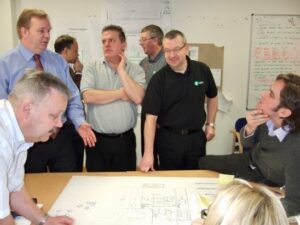
The core team of an improvement program refers to a dedicated group of individuals who play a central role in leading and driving the program’s success. This team consists of key stakeholders, subject matter experts, and change agents with the necessary knowledge, skills, and influence to guide and implement the improvement initiatives. It is required for several reasons:
1. Leadership and Governance:
The core team provides strong leadership and establishes a clear governance structure for the improvement program. They define the program’s vision, mission, and goals, ensuring alignment with the organization’s overall strategy. Their role is to guide the program, make informed decisions, allocate resources effectively, and prioritize initiatives based on their strategic importance.
2. Expertise and Knowledge:
The core team comprises individuals with diverse expertise and in-depth knowledge of the processes, systems, and methodologies relevant to the improvement program. They bring a deep understanding of the organization’s operations and industry best practices. This expertise enables them to identify improvement opportunities, analyze data, and develop solutions that drive operational efficiency and effectiveness.
3. Project Management:
The core team takes on the role of project managers for the improvement initiatives within the program. They define project scopes, set objectives, develop timelines, allocate resources, and establish key performance indicators to measure progress. They monitor project milestones, identify and address risks and issues, and ensure that projects are delivered on time and within budget.
4. Change Management:
The core team recognizes that successful improvement programs require effective change management. They understand the importance of engaging and aligning stakeholders throughout the organization. They develop and implement change management strategies to create a culture of continuous improvement, build awareness and understanding, address resistance, and ensure smooth adoption of new processes or practices.
5. Cross-Functional Collaboration:
The core team consists of representatives from different functions and departments within the organization. Their cross-functional composition ensures that all perspectives are considered in the decision-making process. They collaborate closely, leveraging their collective knowledge and experience to identify interdependencies, minimize silos, and promote collaboration across the organization.
6. Communication and Stakeholder Engagement:
The core team acts as a central communication hub for the improvement program. They establish effective channels of communication to ensure that stakeholders at all levels are informed and engaged. They provide regular progress updates, solicit feedback and input, and address any concerns or questions. Effective communication fosters transparency, builds trust, and encourages stakeholder buy-in and support.
7. Sustaining Momentum:
The core team understands that improvement programs are long-term endeavors. They are responsible for monitoring the impact of implemented changes and ensuring that the desired outcomes are achieved. They capture and share lessons learned, identify further improvement opportunities, and continuously seek ways to sustain and enhance the program’s effectiveness over time.
Conclusion:
By fulfilling these roles and responsibilities, the Core Team plays a pivotal role in driving the success of the improvement program. Their leadership, expertise, project management skills, change management capabilities, cross-functional collaboration, and effective communication enable them to guide the program towards achieving its objectives and delivering long-term benefits to the organization.
Unleashing Chaos: The Pitfalls of Neglecting the Need for a Strong Core Team
“A weak team is like a flat tire; you can’t go anywhere until you change it.”
In any transformation program, such as OpEx, the role of a strong and dedicated core team is paramount. They serve as the backbone of the program, ensuring its success by providing leadership, coordination, and expertise. However, when a core team is not established or lacks the necessary support and resources, the consequences can be detrimental to the entire initiative. We will now explore the negative repercussions that can arise from neglecting a robust core team in OpEx implementations. From missed opportunities to ineffective implementation, join us as we delve into the potential pitfalls and highlight the importance of building and nurturing a capable core team for sustainable operational excellence.

1. Lack of Direction:
Without a core team, there may be confusion regarding the overall objectives and priorities of the OpEx program. For example, different departments may pursue their own improvement initiatives without aligning with the organization’s strategic goals, leading to fragmented efforts and a lack of cohesive direction.
2. Inconsistent Implementation:
In the absence of a core team, each department or team may interpret and implement OpEx practices differently. For instance, one department may adopt Lean principles, while another focuses on Six Sigma methodologies, resulting in inconsistent approaches and limited collaboration across the organization.
3. Limited Accountability:
Without a core team to oversee the OpEx program, it becomes challenging to establish clear accountability for achieving improvement goals. For example, when issues arise, there may be no designated team responsible for addressing them promptly, leading to unresolved problems and a lack of progress.
4. Missed Opportunities:
A core team is responsible for identifying improvement opportunities throughout the organization. Without their guidance, potential areas for enhancement may go unnoticed. For instance, without a core team conducting thorough process assessments, a company may fail to identify bottlenecks in their supply chain, leading to inefficiencies and increased costs.
5. Resistance to Change:
Change management is a critical aspect of an OpEx program, and a core team plays a vital role in managing resistance to change. Without this team, employees may resist adopting new practices or modifying existing processes. For example, without a core team providing support and communication during a transition to a new software system, employees may resist the change, impacting productivity and hindering the program’s success.
6. Lack of Expertise:
A core team typically consists of individuals with specialized knowledge and skills in process improvement methodologies. Without their expertise, organizations may struggle to effectively apply OpEx principles. For instance, without a core team guiding the implementation of statistical analysis tools, an organization may fail to leverage data effectively to identify root causes of issues and make data-driven decisions.
7. Resource Allocation Challenges:
The core team is responsible for allocating resources such as budget, staff, and time to OpEx initiatives. Without their oversight, resource allocation may become haphazard. For example, without a core team coordinating resource allocation, different departments may compete for limited resources, resulting in conflicting priorities and insufficient support for critical improvement projects.
8. Stagnation and Regression:
Continuous improvement is essential for the long-term success of an OpEx program. Without a core team driving this culture of continuous improvement, progress may stagnate or regress. For instance, without a core team facilitating regular process reviews and providing guidance, employees may revert to old, inefficient ways of working, impeding organizational growth and innovation.
Conclusion:
By understanding these consequences, organizations can recognize the importance of establishing a dedicated core team for their OpEx program. A core team provides leadership, promotes consistent implementation, identifies improvement opportunities, manages change, leverages expertise, ensures effective resource allocation, and drives continuous improvement, leading to sustained success and growth.
Building a Strong Core Team for Driving an OpEx Improvement Program
To ensure the success of an OpEx program, it is crucial to establish a strong core team comprising various stakeholders who play essential roles in driving and supporting the program. The following instructions outline the steps and responsibilities for building a robust core team:

1. Identify Key Stakeholders:
Begin by identifying the key stakeholders involved in the OpEx improvement program. These stakeholders typically include:
a) Customer: The program customer is the entity or department that will benefit directly from the OpEx program’s outcomes. For example, in a manufacturing company, the program customer might be the production department aiming to improve efficiency and quality.
b) Sponsor: The sponsor is a senior executive who provides strategic guidance, resources, and support to the OpEx program. The sponsor champions the program and ensures alignment with the organization’s goals. For instance, the CEO or COO can serve as the sponsor of the OpEx program.
c) Manager: The program manager oversees the overall planning, execution, and monitoring of the OpEx program. They are responsible for coordinating activities, managing resources, and ensuring the program’s objectives are met. An example of a program manager could be a senior operations manager with experience in process improvement.
d) Controller: The controller oversees the financial aspects of the OpEx program, including budgeting, cost tracking, and reporting. They ensure financial accountability and provide insights on the program’s financial performance. An example of a controller could be a finance manager or a dedicated financial analyst.
e) Contributors: Contributors are individuals or teams responsible for executing specific improvement projects within the OpEx program. They provide expertise, insights, and hands-on involvement in implementing changes. Examples of contributors can include process engineers, quality specialists, or frontline employees.
f) Influencers: Influencers are individuals or groups with a significant impact on the success of the OpEx program. They may not have direct operational responsibilities but possess the authority or expertise to influence decision-making and drive change. Influencers can include senior managers, subject matter experts, or external consultants.
2. Define Roles and Responsibilities:
Once the key stakeholders are identified, define their specific roles and responsibilities within the OpEx improvement program. These typically include:
a) Customer: Clearly articulate their expectations, desired outcomes, and success criteria. They provide feedback and guidance throughout the program, ensuring alignment with business needs.
b) Sponsor: Act as the program’s advocate and provide strategic direction. The sponsor communicates the importance of the OpEx program, secures necessary resources, and resolves any organizational barriers.
c) Manager: Take ownership of program planning, execution, and monitoring. The program manager establishes project timelines, manages resources, facilitates communication among stakeholders, and ensures progress towards program goals.
d) Controller: Track program expenses, manage the budget, and provide financial analysis. The controller helps identify cost-saving opportunities, measures return on investment, and ensures the program remains financially viable.
e) Contributors: Execute improvement projects, following the program’s methodologies and tools. Contributors collect data, analyze processes, propose and implement changes, and monitor the impact of their initiatives.
f) Influencers: Provide guidance, expertise, and support to the program. Influencers help remove barriers, align the program with organizational strategies, and communicate the program’s benefits to other stakeholders.
3. Foster Collaboration and Communication:
Encourage open and regular communication among the core team members. Establish clear channels for sharing progress, challenges, and insights. Regular team meetings, progress reports, and status updates help keep everyone informed and aligned. For example, the core team holds weekly sprint reviews to discuss the progress of the OpEx improvement program. During these meetings, team members share updates on their respective projects, discuss any challenges they are facing, brainstorm solutions collaboratively, and plan deliverables for the upcoming week. Additionally, a dedicated communication platform, such as a project management tool or online collaboration platform, is used to facilitate ongoing communication and information sharing among team members.
4. Empower and Support Team Members:
Provide the necessary resources, training, and tools to enable team members to perform their roles effectively. Empower them to make decisions, take ownership of their tasks, and contribute to the program’s success. For example, the core team ensures that each member has access to the required resources, such as relevant data, software tools, and training materials, to carry out their assigned tasks. For instance, if a team member needs specialized software to analyze process data, they are provided with the necessary licenses and training. Furthermore, team members are empowered to make decisions within their areas of expertise, allowing them to take ownership of their tasks and contribute innovative ideas to drive the OpEx improvement program forward. The program manager and sponsor actively support team members by addressing any obstacles they encounter and providing guidance when needed.
5. Promote a Culture of Collaboration and Continuous Improvement:
Foster a collaborative and supportive culture within the core team. Encourage open dialogue, knowledge sharing, and cross-functional cooperation. Emphasize the importance of continuous learning and improvement, where team members actively seek feedback, share best practices, and identify opportunities for innovation. For example, the core team holds regular knowledge-sharing sessions where contributors from different departments share their success stories and lessons learned from previous improvement projects. This promotes a culture of collaboration and inspires others to adopt effective practices.
6. Establish Clear Goals and Objectives:
Define clear goals and objectives for the OpEx improvement program and communicate them to the core team. Ensure that everyone understands the desired outcomes and how their individual efforts contribute to the overall success of the program. For example, the core team establishes specific performance metrics, such as reducing process cycle time by 20% or achieving a 10% increase in customer satisfaction. These goals provide a clear focus for the team’s efforts and serve as a benchmark for measuring progress.
7. Foster Accountability and Ownership:
Encourage individual and collective accountability within the core team. Each team member should take ownership of their responsibilities and deliver on their commitments. Establish mechanisms for tracking progress, addressing challenges, and celebrating achievements. For example, the program manager implements a project tracking system that enables team members to update their progress regularly. This promotes transparency and accountability, allowing the team to identify potential bottlenecks and address them proactively.
8. Leverage Cross-Functional Expertise:
Capitalize on the diverse expertise and perspectives within the core team. Encourage collaboration across different functional areas to leverage collective knowledge and drive innovative solutions. Create opportunities for team members to learn from each other and apply their expertise to solve complex problems. For example, the core team organizes regular workshops or brainstorming sessions where contributors from various departments come together to analyze process bottlenecks and develop solutions. This cross-functional collaboration leads to more comprehensive and effective improvement initiatives.
9. Provide Regular Feedback and Recognition:
Establish a feedback loop within the core team to provide constructive feedback and recognize individual and team achievements. Regularly acknowledge and celebrate successes to boost morale and motivation. For example, the program manager conducts monthly feedback sessions with each team member, providing constructive feedback on their performance and recognizing their contributions. Additionally, the team celebrates milestones and accomplishments through team-wide acknowledgments and rewards.
10. Adapt and Evolve:
Be flexible and adaptable as the OpEx improvement program progresses. Continuously assess and reassess the team’s composition, roles, and responsibilities to ensure alignment with evolving needs and changing circumstances. Encourage continuous learning and adaptation to drive ongoing improvement. For example, the core team conducts regular retrospectives to reflect on the program’s progress, identify areas for improvement, and adjust team dynamics as needed. This allows the team to adapt to changing requirements and seize new opportunities.
Conclusion:
Building a strong core team is essential for driving the success of an OpEx improvement program. By identifying key stakeholders, defining roles and responsibilities, fostering collaboration and communication, empowering team members, promoting a culture of collaboration and continuous improvement, establishing clear goals and objectives, fostering accountability and ownership, leveraging cross-functional expertise, providing regular feedback and recognition, and adapting to evolving needs, organizations can harness the collective knowledge and dedication of the core team to achieve sustainable results and drive continuous improvement. The core team becomes the engine for the OpEx program, ensuring its effectiveness and long-term success.
Building a Solid Core Team: Clearly Defined Roles and Responsibilities
A well-defined core team is vital for the successful implementation and continuous improvement of operational processes in an OpEx program. Sarah, the Director of Operations, serves as the program customer, guiding the strategic direction. Michael, the Vice President of Finance, acts as the program sponsor, providing support and resources. Emily, a department manager, is the program manager responsible for overseeing implementation. David, the Financial Controller, brings financial expertise. Mark, Lisa, and Alex, employees from different departments, contribute their knowledge to specific projects, while James, the HR Manager, and Susan, the Marketing Manager, influence their departments to support the OpEx program. With clear role assignments, each stakeholder understands their responsibilities and can contribute effectively.

Case Study 6: Google Maps Team
Google’s mission to organize the world’s information and make it universally accessible and useful is exemplified in the development of Google Maps. A key factor in the success of this project was the establishment of a strong core team that played a crucial role in driving the mission forward. The company built a strong team based on five key principles:
1. Clear Vision and Alignment:
Google formed a core team with a clear understanding of the company’s mission and the goals for Google Maps. Each team member shared a common vision of creating a comprehensive and user-friendly mapping solution that would revolutionize navigation.
2. Diverse Expertise:
The core team consisted of individuals with diverse expertise, including software engineering, cartography, data analysis, and user experience design. This diverse skill set allowed the team to tackle complex challenges from different angles, fostering innovation and comprehensive problem-solving.
3. Effective Leadership:
Google provided strong leadership for the core team, ensuring clear direction and guidance. The team had a dedicated project manager who facilitated coordination, set priorities, and ensured efficient collaboration among team members. The project manager, with a background in software engineering and project management, provided the team with a strong sense of direction. They ensured that everyone understood the project objectives, established a clear timeline, and allocated resources effectively. Their leadership created a cohesive team environment that drove productivity and encouraged open communication.
4. Collaborative Culture:
Google fostered a collaborative culture within the core team, emphasizing the importance of teamwork, mutual respect, and open communication. Team members were encouraged to share ideas, challenge assumptions, and collaborate closely to achieve the project’s objectives. Regular team meetings, brainstorming sessions, and design reviews provided platforms for open and constructive discussions. This collaborative environment allowed team members to leverage their diverse expertise and contribute their unique perspectives, resulting in comprehensive solutions and improved outcomes.
5. Resource Allocation:
Google ensured that the core team had the necessary resources, including technology, data, and infrastructure, to accomplish their goals. This support enabled the team to focus on innovation and problem-solving rather than being hindered by resource constraints. The core team had access to cutting-edge technology and vast amounts of geographical data, which were crucial in developing accurate maps and navigation features. Additionally, they had dedicated resources for conducting user research, usability testing, and performance optimization, ensuring the highest quality product.
Conclusion:
Through the establishment of a strong core team with a clear vision, diverse expertise, effective leadership, a collaborative culture, and adequate resource allocation, Google set the stage for the success of the Google Maps project. The core team’s collective efforts, innovative thinking, and seamless collaboration propelled Google Maps to become a market leader in mapping and navigation solutions, reshaping the way people navigate and explore the world.

Exercise 1.6: Teamwork Power
1. Divide participants into 3 groups and provide drawing materials or digital tools.
2. Introduce a fictional problem, such as a sinking ship, a stranded group in a desert, or a time-sensitive business dilemma.
3. Each team generates as many possible solutions as possible to solve the given problem within 10 minutes.
4. Encourage teams to think creatively, brainstorm freely, and leverage their collective knowledge and perspectives.
5. Remind teams to consider feasibility, resources, and potential outcomes when generating solutions.
6. After 10 minutes, instruct the teams to select their best solution or idea from the list they have generated.
7. Each team will present their solution to the other teams, providing a brief explanation of how it addresses the problem.
8. Facilitate a short discussion where teams can ask questions, provide feedback, and share alternative perspectives.
9. Conclude the exercise by highlighting the importance of collaboration, open-mindedness, and effective communication.
10. Wrap up the exercise by summarizing the key takeaways.

Course Manual 7: Target Timeline
From Vision to Reality: The Role of Target Timelines in Driving OpEx Success
“Failing to plan is planning to fail.” – Alan Lakein
A target timeline is a crucial element in any program, representing a predetermined schedule or timeframe that outlines the milestones, tasks, and deadlines to be achieved. Like managing finances, time management is essential as it is a non-renewable resource. The target timeline serves the purpose of providing structure and direction, ensuring the program’s smooth implementation and successful completion within the defined time constraints. It allows stakeholders to track progress, make informed decisions, allocate resources effectively, and maintain focus on meeting objectives. Ultimately, a well-defined target timeline facilitates efficient management and contributes to the overall success of the OpEx program. The purpose of a target timeline in an OpEx program is to:

1. Set Clear Objectives:
The target timeline provides a clear roadmap of the program’s objectives, allowing stakeholders to understand the specific goals and outcomes to be achieved at each stage.
2. Enable Planning and Resource Allocation:
A target timeline helps in planning the allocation of resources, including human resources, budget, and equipment, to ensure they are appropriately assigned and utilized to meet the program’s timeline requirements.
3. Facilitate Coordination and Collaboration:
The target timeline serves as a reference point for different teams and individuals involved in the OpEx program. It helps in coordinating their efforts, aligning activities, and fostering collaboration, ensuring everyone is working towards the same goals within the specified timeframes.
4. Monitor Progress and Performance:
The target timeline acts as a tool for monitoring progress and evaluating the performance of the OpEx program. By comparing actual milestones and tasks achieved against the planned timeline, stakeholders can identify any deviations, delays, or bottlenecks and take appropriate corrective actions.
5. Maintain Accountability:
With a target timeline in place, there is clear accountability for meeting deadlines and delivering on commitments. It helps in fostering a sense of responsibility among team members, as they are aware of their individual and collective roles in adhering to the timeline and achieving the program’s objectives.
6. Facilitate Stakeholder Communication:
The target timeline serves as a communication tool to keep stakeholders informed about the program’s progress. It enables effective communication with sponsors, executives, and other key stakeholders by providing a snapshot of the program’s timeline, milestones achieved, and upcoming activities.
Conclusion:
Overall, a target timeline in an OpEx program provides structure, direction, and accountability. It helps in planning, coordinating, and monitoring the program’s progress, ensuring that the desired outcomes are achieved within the specified timeframe. It is crucial to success.
The Price of Uncertainty: Consequences of Not Establishing a Clear Timeline
In any project or endeavor, establishing a clear timeline is essential for success. Yet, the consequences of neglecting this crucial aspect can be significant, leading to inefficiency, missed opportunities, and compromised outcomes. By examining the negative consequences that arise from not establishing a clear timeline, we can gain a deeper understanding of the importance of effective time management and the benefits it brings. Let’s explore these consequences, with real-life examples showcasing the impact of a lack of timeline clarity.

1. Unclear Priorities and Resource Allocation:
Without a clear timeline, priorities become hazy, and resource allocation becomes challenging. This can result in misaligned efforts and wasted resources. For example, a software development company that fails to establish a timeline for a product release may encounter difficulties in allocating development resources effectively. This could lead to delays, quality issues, and missed market opportunities.
2. Increased Project Duration:
When a timeline is absent or ambiguous, projects tend to stretch out indefinitely. Without defined deadlines and milestones, teams may lack the necessary urgency to complete tasks promptly. For instance, a construction project that lacks a clear timeline can experience prolonged construction periods, leading to increased costs, dissatisfaction among stakeholders, and delays in subsequent project phases.
3. Lack of Accountability and Productivity:
A clear timeline fosters accountability and productivity within a team. In the absence of a timeline, team members may struggle to stay focused, resulting in reduced productivity and missed deliverables. Consider an advertising campaign that lacks a clear timeline for content creation and distribution. The team may struggle to meet deadlines (because there are none), leading to inconsistent messaging, decreased audience engagement, and potentially negative brand perception.
4. Ineffective Project Coordination and Communication:
Without a clear timeline, project coordination and communication become challenging. The absence of a shared timeframe can lead to confusion, delays, and breakdowns in collaboration. For example, a marketing team working on a product launch without a clear timeline may experience difficulties coordinating activities such as market research, campaign development, and promotional material creation. This can lead to disjointed efforts and missed opportunities to maximize the product’s impact.
5. Missed Deadlines and Opportunities:
A lack of a clear timeline increases the likelihood of missed deadlines and missed opportunities. Without specific targets, projects can lose direction and fail to seize critical moments. For instance, an e-commerce company without a defined timeline for website development and content creation may miss important seasonal sales opportunities, resulting in lost revenue and decreased customer engagement.
Conclusion:
The consequences of not establishing a clear timeline in any project are far-reaching and impactful. Unclear priorities, increased project duration, lack of accountability and productivity, ineffective project coordination, and missed deadlines and opportunities are just a few of the repercussions that can arise. To mitigate these consequences, it is crucial to recognize the significance of establishing a clear timeline from the outset. By doing so, organizations and teams can ensure efficient resource allocation, enhanced productivity, effective coordination, and ultimately achieve successful outcomes. Let these examples serve as a reminder of the importance of time management and the value of a clear timeline in guiding projects towards success.
Target Timeline Example: Implementing a Retail Optimization Program
When embarking on an OpEx journey, having a clear target timeline is crucial for successful program execution. We will now explore an example of a retail company that is launching an e-commerce optimization program. By examining the three distinct phases of website analysis and planning, implementation, and post-implementation review, we can understand how a structured timeline facilitates effective coordination, task dependencies, and milestone achievements. This example serves as a practical illustration of how a target timeline can drive the smooth implementation of an OpEx program, ultimately leading to improved retail operations and enhanced customer experiences.
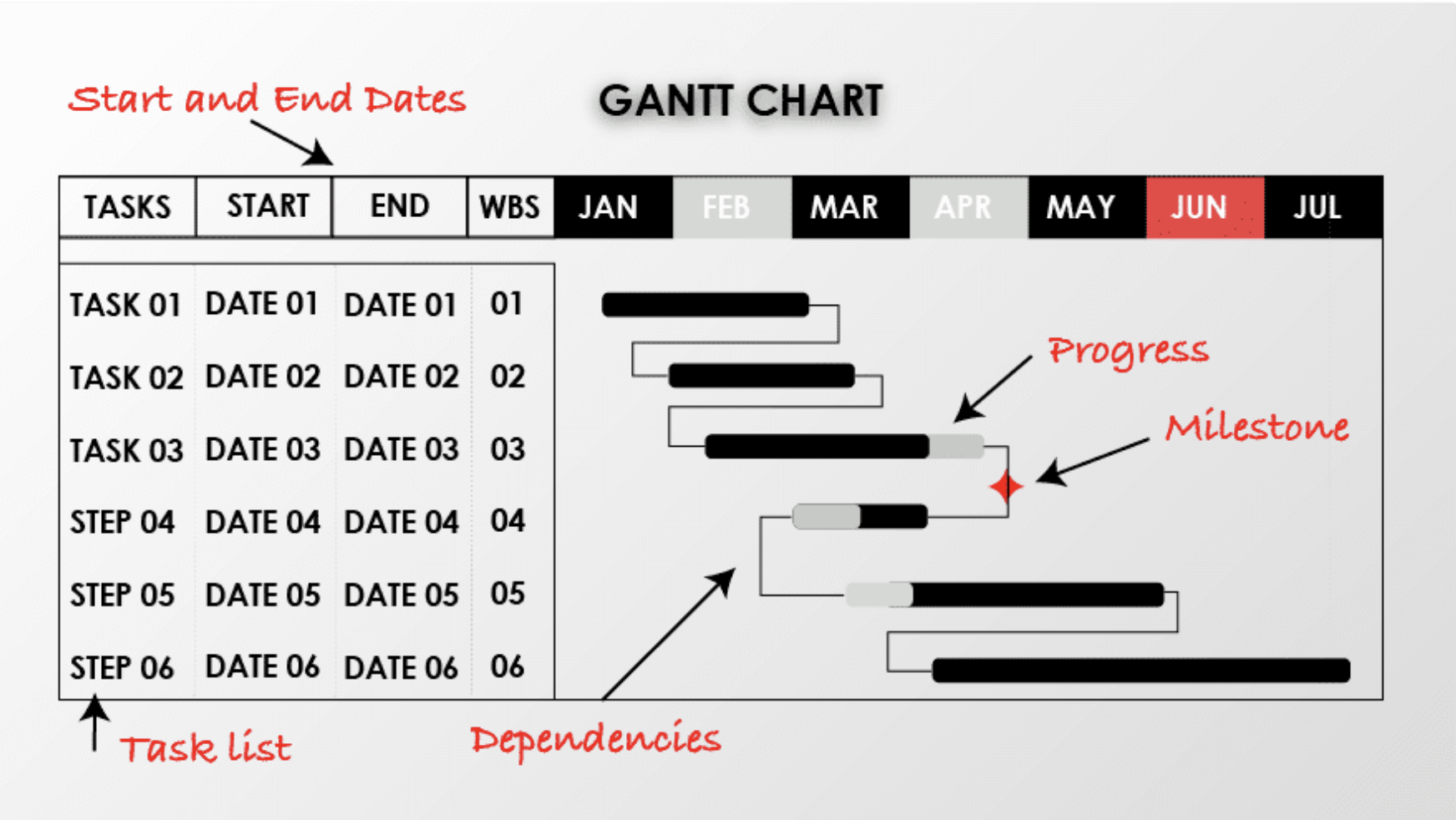
1. Website Analysis and Planning:
In this initial phase, the retail company focuses on conducting a comprehensive website analysis. The milestone is to evaluate various aspects such as user experience testing, load time assessment, and identifying areas for improvement. Collaborating with the IT department, UX designers, and marketing team is vital to gather the necessary insights. The estimated duration for this phase is two weeks, allowing ample time for a thorough examination of the website’s performance.
2. Implementation:
After completing the website analysis, the retail company moves on to the implementation phase. The milestone of this phase is to put into action the recommended improvements identified during the analysis. Tasks involve code optimization, implementing responsive design, and integrating secure payment gateways. The IT department takes the lead in this phase, with support from the web development team and external consultants. The estimated duration for implementation is set at four weeks, providing sufficient time to execute the necessary changes.
3. Post-Implementation Review:
Once the implementation phase concludes, the program transitions into the post-implementation review phase. The milestone in this phase is to evaluate the effectiveness of the optimizations and measure the impact on key performance indicators such as conversion rate and average order value. Collaboration between the marketing team, data analysts, and customer support representatives is crucial for a comprehensive review. This phase spans two weeks, allowing for an in-depth assessment of the optimizations’ outcomes.
Conclusion:
Throughout the program, regular meetings and the utilization of project management software enable effective communication, progress tracking, and timely adjustments to the timeline. By following this example and tailoring it to the specific requirements of your OpEx program, you can establish a clear target timeline that ensures a structured framework for successful execution. Continuous monitoring, adaptation to changes, and learning from the experience will refine future timelines and drive continuous improvement in your organization’s pursuit of operational excellence.

Case Study 7: Apple’s iPhone-X Timeline
Apple Inc., a globally recognized technology company renowned for its innovation and groundbreaking products, accomplished a remarkable feat with the launch of the iPhone X. This revolutionary smartphone, which pushed the boundaries of technology at the time, was introduced to the market through a meticulously planned program spanning one year. By establishing a clear target timeline, Apple ensured the seamless implementation and successful market entry of the iPhone X. This case study delves into the various phases, overlapping activities, and parallel workflows that contributed to Apple’s achievement in delivering a new groundbreaking product to consumers every 12 months.
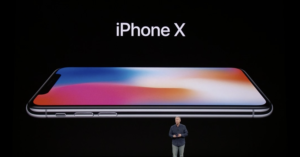
1. Research and Development (6 months):
Apple initiated the iPhone X program with extensive research and development (R&D) efforts. From January to June, the company focused on conducting market research, exploring new technologies, and collaborating with suppliers and manufacturing partners to lay the groundwork for the product’s development.
2. Design and Prototyping (3 months):
From July to September, Apple’s design team worked closely with engineers and product managers to create the iPhone X’s unique features and aesthetics. They translated ideas into functional prototypes, conducting iterative design reviews and user testing sessions to refine the product’s design and ensure a seamless user experience.
3. Supply Chain Preparation (2 months, parallel with phase 2):
Simultaneously, Apple’s supply chain team collaborated with component suppliers, negotiated contracts, and established manufacturing partnerships from October to November. This phase involved meticulous planning to ensure a smooth supply chain, from sourcing components to managing production capacity.
4. Manufacturing and Quality Assurance (2 months):
As the launch date approached, Apple commenced the manufacturing process for the iPhone X. From December to January, the company partnered with contract manufacturers and implemented stringent quality assurance measures. Regular factory audits, quality inspections, and testing procedures were conducted to maintain the product’s high standards.
5. Marketing and Promotion (2 months, parallel with phase 4)
From February to March, Apple executed an extensive marketing and promotion campaign to generate buzz and excitement for the iPhone X. The company leveraged various channels, including online and traditional media, to create anticipation among consumers. Key marketing activities included teaser videos, product demonstrations, and collaborations with influencers.
6. Distribution and Launch (1 month)
In April, Apple coordinated its global distribution network to ensure the availability of the iPhone X in multiple markets. Careful logistics planning and coordination with retail partners and carriers facilitated a simultaneous worldwide launch. Apple’s retail stores and online platforms were fully equipped to handle the high demand and deliver a seamless purchasing experience for customers.
7. Post-Launch Support and Iterative Improvements (ongoing):
Following the product launch, Apple provided post-sales support and continuously refined the iPhone X through software updates and user feedback. The company’s customer support teams addressed any issues promptly, ensuring customer satisfaction. Apple also leveraged user data and feedback to drive iterative improvements, introducing new features and enhancing performance through regular software updates.
Conclusion:
Apple’s successful launch of the iPhone X exemplifies the company’s ability to execute a well-planned one-year program. By adhering to the specified timing for each phase, Apple ensured a seamless product launch and market entry. The iPhone X’s groundbreaking features and strong consumer demand cemented its position as a flagship smartphone, underscoring the importance of a well-executed target timeline and comprehensive program management in achieving success.

Exercise 1.7: Timeline Challenge
1. Divide participants into 3 groups and provide drawing materials or digital tools.
2. Introduce the concept of target timeline to plan a project or program.
3. Present a fictional scenario, like planning a team event, organizing a group project, or preparing a presentation.
4. Instruct each team to brainstorm and write down key tasks required to achieve the project goals on sticky notes.
5. Set a timer for 5 minutes and ask teams to allocate estimated time durations for each task.
6. Instruct teams to arrange their sticky notes on a board or table, creating a visual timeline.
7. Give each team 1 minute to present their timeline to the other teams, highlighting key milestones and deadlines.
8. Facilitate a brief discussion on challenges faced during the exercise and the importance of effective target timelines.

Course Manual 8: Basic Skills
Building the Foundation: The Importance of Induction Training
“The future belongs to those who are willing to learn and adapt.” – Elon Musk
Embarking on an OpEx journey requires a solid foundation of knowledge, skills, and capabilities. Just as a house needs a strong base, an OpEx program needs a team equipped with essential skills to navigate the challenges and complexities of process improvement. This is where induction training plays a pivotal role. Induction training, also known as onboarding or orientation, is a critical step in building the necessary foundational skills for individuals joining an OpEx program. We will now explore why induction training is vital for developing basic skills and capabilities that form the bedrock of launching a successful OpEx program.

1. Bridging the Knowledge Gap:
Induction training provides newcomers with an opportunity to acquire essential knowledge about OpEx principles, methodologies, and tools. It ensures that all team members share a common understanding of the core concepts and terminologies used in OpEx initiatives. By bridging the knowledge gap, induction training establishes a solid foundation upon which team members can collaborate and communicate effectively.
2. Establishing a Common Language:
OpEx programs often involve cross-functional teams with diverse backgrounds and expertise. Induction training helps create a common language and a shared understanding of the OpEx framework. It ensures that team members can communicate and collaborate seamlessly, enabling them to align their efforts and work towards common goals.
3. Developing Technical Skills:
Induction training equips participants with the technical skills required to implement OpEx methodologies and tools. Whether it’s process mapping, data analysis, root cause analysis, or statistical process control, training provides individuals with the necessary skills to conduct accurate assessments, identify improvement opportunities, and drive sustainable change.
4. Nurturing Problem-Solving Abilities:
Problem-solving lies at the heart of OpEx initiatives. Induction training focuses on developing problem-solving skills, enabling team members to approach challenges systematically and analytically. Training sessions often include real-life case studies and practical exercises to enhance problem-solving capabilities and encourage critical thinking.
5. Cultivating Continuous Improvement Mindset:
A successful OpEx program thrives on a culture of continuous improvement. Induction training helps instill this mindset in team members by emphasizing the importance of embracing change, seeking innovative solutions, and constantly striving for excellence. Training sessions often include discussions on the benefits of continuous improvement and the role each individual plays in driving positive change.
Conclusion:
Induction training serves as the cornerstone for building foundational knowledge, skills, and capabilities required to launch and sustain an OpEx program. By providing newcomers with the necessary tools and resources, it enables them to understand the OpEx framework, develop technical skills, nurture problem-solving abilities, and cultivate a mindset of continuous improvement. Investing in comprehensive and effective induction training sets the stage for a strong and capable team that can successfully navigate the challenges and drive transformative outcomes in OpEx initiatives.
Shortcomings and Setbacks: The Consequences of Lacking Skills
Foundational skills serve as the building blocks for individuals and organizations, providing them with the necessary knowledge, expertise, and competencies to navigate the complexities of process improvement and operational transformation. However, in instances where these essential skills and capabilities are missing or insufficient, the consequences can be far-reaching and detrimental. We will explore the implications of lacking foundational skills and capabilities in OpEx programs, shedding light on the challenges and risks that organizations may encounter when these critical elements are absent.
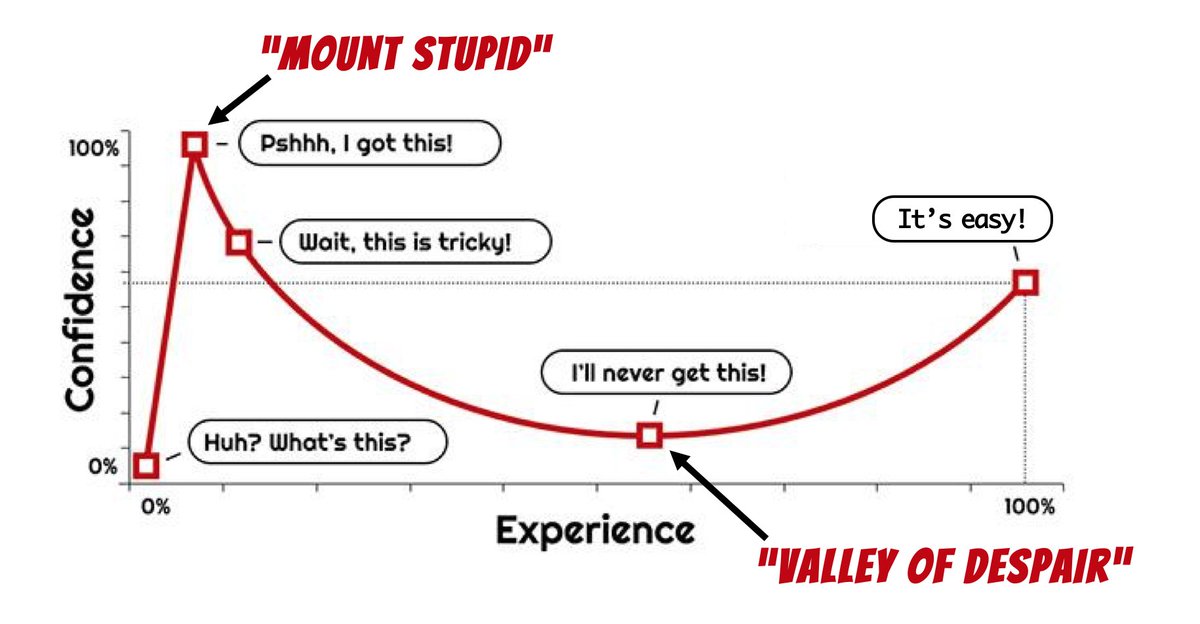
1. Hindered Growth and Progress:
The fear of lacking the necessary skills and capabilities can impede an organization’s growth and hinder progress. Without the foundational knowledge and abilities required to drive an OpEx program, the organization may struggle to implement effective process improvements and achieve desired outcomes. This fear can stifle innovation and prevent the organization from realizing its full potential.
2. Increased Risk and Uncertainty:
The absence of essential skills and capabilities raises the risk of failure and introduces uncertainty into the OpEx program. Individuals without the necessary expertise may make incorrect decisions or overlook critical factors, leading to suboptimal outcomes. The fear of making costly mistakes or being unable to navigate the challenges of the program can create anxiety and hinder progress.
3. Low Confidence and Motivation:
When individuals lack the skills and capabilities required for an OpEx program, their confidence and motivation may suffer. They may doubt their ability to contribute meaningfully to the program’s success, leading to decreased engagement and productivity. The fear of not meeting expectations can create a sense of inadequacy and hinder individuals from taking ownership of their roles within the program.
4. Missed Opportunities and Competitive Disadvantage:
A lack of skills and capabilities can result in missed opportunities for improvement and a competitive disadvantage. Without the necessary knowledge and tools, the organization may fail to identify and capitalize on process efficiencies, cost-saving measures, or market opportunities. This fear of falling behind competitors who embrace OpEx practices can have long-term implications for the organization’s success and sustainability.
5. Strained Relationships and Trust:
The inability to meet expectations due to lacking skills and capabilities can strain relationships within the organization. Team members may question each other’s abilities and credibility, leading to a breakdown in trust and collaboration. This fear can create a negative work environment, hindering teamwork and impeding the success of the OpEx program.
6. Decreased Customer Satisfaction:
A lack of skills and capabilities can directly impact customer satisfaction. Without the ability to identify and address customer needs effectively, the organization may struggle to deliver high-quality products or services. This fear of disappointing customers and failing to meet their expectations can damage the organization’s reputation and lead to decreased customer loyalty.
7. Decreased Employee Retention:
Employees who lack the necessary skills and capabilities may become frustrated and disenchanted with their roles. The fear of being unable to meet expectations and falling behind can contribute to increased turnover and decreased employee retention. This can disrupt the continuity of the OpEx program and impede long-term success.
8. Missed Return on Investment (ROI):
Investing in an OpEx program without ensuring the necessary skills and capabilities can lead to a poor return on investment. The fear of not realizing the expected benefits and not achieving the desired ROI can make stakeholders hesitant to invest further in future improvement initiatives.
Conclusion:
The consequences of lacking skills and capabilities for an OpEx program include hindered growth, increased risk, low confidence, missed opportunities, strained relationships, decreased customer satisfaction, decreased employee retention, and missed ROI. Recognizing and addressing these consequences is crucial for organizations to overcome their fears, invest in skill development, and build a capable workforce that can successfully drive OpEx initiatives and achieve sustainable operational excellence.
Building Foundational Skills: A Path to Success from Goal to Result
When it comes to achieving success and delivering results for the OpEx program, having strong foundational skills is crucial. These skills serve as the building blocks that enable individuals and organizations to effectively navigate challenges, make informed decisions, and achieve their desired outcomes. We will now explore five essential foundational skills: goal setting, stakeholder alignment, problem solving, business case analysis, and roadmap planning. By developing and honing these skills, individuals can pave the way for success and drive positive outcomes.

1. Goal Setting:
Goal setting is the process of defining clear and measurable objectives that guide actions and drive progress. By setting specific, realistic, and time-bound goals, individuals can focus their efforts and track their achievements. For example, a marketing team may set a goal to increase website traffic by 20% within six months. This goal provides a clear target and a timeline for the team to work towards, motivating them to take strategic actions and measure their progress along the way.
2. Stakeholder Alignment:
Effective stakeholder alignment ensures that everyone involved in a project or initiative is on the same page and working towards a common goal. This skill involves identifying key stakeholders, understanding their interests and perspectives, and proactively communicating and engaging with them. For instance, a project manager leading a software development project needs to align the expectations and requirements of the development team, clients, and end-users. By establishing open lines of communication and addressing any potential conflicts or misunderstandings, the project manager can ensure that everyone is working collaboratively towards a shared vision.
3. Problem Solving:
Problem-solving is the ability to identify, analyze, and resolve complex issues or challenges. It involves critical thinking, creativity, and the application of logical frameworks. Developing strong problem-solving skills enables individuals to overcome obstacles and find innovative solutions. For example, a manufacturing supervisor faced with recurring quality issues might use root cause analysis techniques to identify the underlying causes, implement corrective actions, and prevent future occurrences. By applying structured problem-solving methodologies, the supervisor can drive continuous improvement and enhance overall operational performance.
4. Business Case Analysis:
Business case analysis involves evaluating the financial, strategic, and operational aspects of a potential project or decision. It requires gathering and analyzing relevant data, conducting cost-benefit analyses, and assessing risks and opportunities. By conducting a thorough business case analysis, organizations can make informed decisions and allocate resources effectively. For instance, a company considering the implementation of a new technology platform would assess the anticipated costs, benefits, and potential return on investment. This analysis helps in determining whether the project aligns with the company’s strategic objectives and if it offers a viable business proposition.
5. Roadmap Planning:
Roadmap planning involves developing a comprehensive and well-structured plan that outlines the steps, milestones, and timelines required to achieve a specific objective or project. This skill helps individuals and teams visualize the path ahead, prioritize activities, and track progress. For example, a product manager creating a roadmap for a new product launch would identify key development phases, set timelines for each stage, and establish dependencies and critical milestones. This roadmap provides a clear framework for execution and facilitates effective coordination among team members.
Conclusion:
Building strong foundational skills in goal setting, stakeholder alignment, problem solving, business case analysis, and roadmap planning is essential for success. By mastering these skills and applying them in real-world scenarios, individuals can navigate their journey from setting goals to achieving tangible results. These skills provide individuals with the tools and mindset necessary to overcome obstacles, make informed decisions, and drive meaningful change.
Skill-Building Example: Successfully Launching a Marketing Campaign
For example, imagine a project manager tasked with launching a new marketing campaign for a product. By setting clear and measurable goals, such as increasing brand awareness and driving sales by a certain percentage, the project manager establishes a roadmap for success. Through stakeholder alignment, the project manager ensures that all team members, including designers, copywriters, and digital marketers, are aligned with the campaign objectives and understand their roles and responsibilities.
As the campaign progresses, challenges may arise, such as limited budget or changing market conditions. Here, strong problem-solving skills come into play. The project manager analyzes the situation, explores alternative approaches, and devises creative solutions. By addressing these challenges proactively, the project manager keeps the campaign on track and maximizes its impact.
To support decision-making, the project manager conducts a thorough business case analysis. This involves evaluating the potential costs, benefits, risks, and return on investment of various marketing strategies. By carefully considering these factors, the project manager selects the most viable options that align with the organization’s goals and resources.
With the roadmap in place and decisions made, the project manager oversees the execution of the marketing campaign. By tracking progress, adjusting timelines, and ensuring effective coordination among team members, the project manager maintains focus and keeps the campaign on schedule. This roadmap planning enables the team to stay organized, meet deadlines, and achieve the desired results.
By building these foundational skills, individuals can navigate complex projects and initiatives with confidence and competence. They become equipped to handle challenges, make data-driven decisions, and lead successful outcomes. Furthermore, by continuously honing these skills through training, practice, and feedback, individuals can further enhance their capabilities and adapt to evolving business landscapes.
In conclusion, developing foundational skills in goal setting, stakeholder alignment, problem solving, business case analysis, and roadmap planning is essential for achieving success in professional endeavors. These skills empower individuals to set clear objectives, align stakeholders, overcome challenges, make informed decisions, and execute projects effectively. By investing in the development of these skills, individuals can drive positive outcomes, contribute to organizational success, and unlock their full potential.

Case Study 8: McDonald’s Hamburger University
McDonald’s, a global fast-food chain, tackled the challenge of maintaining consistency and high-quality standards across its vast network of restaurants by establishing Hamburger University. This dedicated training center offers comprehensive programs to enhance operational efficiency, customer service, and management skills.
At Hamburger University, McDonald’s provides training in various areas, including operations, customer service, and management development. Employees receive in-depth instruction on food preparation, cooking procedures, cleanliness standards, and equipment handling to ensure consistent quality across all restaurants. Training also focuses on interpersonal skills, communication techniques, and problem-solving to deliver exceptional customer service.
McDonald’s places great importance on management development, offering programs to nurture future leaders within the organization. These initiatives cultivate essential leadership skills, operational management capabilities, and strategic decision-making abilities.
The benefits of McDonald’s standardized training approach are significant. Consistency in product quality and service is maintained across all locations, reinforcing the brand’s reputation. Standardized processes improve operational efficiency, leading to increased productivity, reduced errors, and cost savings. The company’s commitment to employee development fosters a culture of continuous learning, enhancing employee satisfaction and reducing turnover.
Through its standardized training programs at Hamburger University, McDonald’s demonstrates its dedication to operational excellence and the continuous improvement of its workforce. This approach has contributed to the company’s success, ensuring consistent quality, reinforcing its brand reputation, and enabling it to maintain a competitive advantage in the fast-food industry.

Exercise 8: Novice to Expert
1. Divide participants into 3 groups.
2. Introduce the problem-solving challenge and explain that participants will have two runs to solve it.
3. Present a riddle (see examples below) that requires critical thinking, creativity, and problem-solving skills.
4. Instruct participants to attempt the problem individually within 5 minutes, without any training or guidance.
5. Ask participants to reflect on their experience and share their observations about the challenges they encountered.
6. Introduce the training phase and provide participants with problem-solving techniques, strategies, or examples.
7. Allow participants 5 minutes to review the training materials and discuss potential approaches as a group.
8. Start the second run, giving participants another 5 minutes to solve the problem with the acquired knowledge and skills.
9. After the second run, facilitate a group discussion to compare the outcomes of both runs.

Course Manual 9: Stimulus Plan
Stimulating Success: How Motivators Drive Human Action and Performance
“Incentives are like catalysts that ignite the fire of motivation.” – Tony Robbins
Human beings are complex creatures driven by a multitude of factors that influence their thoughts, behaviors, and actions. In the realm of psychology and motivation, understanding what motivates individuals to act is crucial for unlocking their potential and driving meaningful outcomes. In this article, we will explore some of the key motivators that inspire humans to act and accomplish their goals.

1. Intrinsic Motivation:
One powerful motivator that drives human action is intrinsic motivation, which stems from an individual’s internal desires, interests, and sense of satisfaction. When people are intrinsically motivated, they engage in activities for the sheer joy, personal fulfillment, or sense of accomplishment they derive from the task itself. Intrinsic motivators can include passion for a particular subject, the desire for mastery, or the need for autonomy and personal growth. For example, an artist who spends hours painting not for external rewards but because they find immense joy and fulfillment in expressing their creativity through art.
2. Extrinsic Motivation:
Extrinsic motivation comes from external sources and involves seeking rewards or avoiding punishments. External factors such as monetary incentives, recognition, praise, or tangible benefits can serve as powerful motivators to prompt action. Extrinsic motivators can play a significant role in driving performance, productivity, and goal achievement. For example, employees working diligently to meet sales targets to earn a commission or bonus at the end of the month.
3. Social Motivation:
Humans are inherently social beings, and social motivation plays a vital role in influencing their actions. The desire for acceptance, belonging, and positive social interactions can serve as powerful motivators. People often seek approval, recognition, and praise from their peers, family, or communities, which can inspire them to act and align their behaviors with social norms and expectations. For example, student participating actively in class discussions to receive recognition and respect from their peers and teacher.
4. Achievement and Success:
The pursuit of achievement and success is a fundamental motivator for many individuals. The desire to set and accomplish challenging goals, overcome obstacles, and experience a sense of accomplishment drives people to act. The satisfaction and fulfillment derived from achieving milestones and realizing personal or professional success can be a potent motivator. For example, an entrepreneur who starts their own business and works tirelessly to make it successful, driven by the desire to achieve financial independence and create a lasting impact.
5. Purpose and Meaning:
Humans seek purpose and meaning in their lives, and when they find it, they are motivated to act aligned with their values and beliefs. Having a clear sense of purpose and understanding how their actions contribute to a greater cause can be a powerful driving force. For example, an environmental activist dedicating their time and energy to raising awareness about climate change and working towards a sustainable future.
6. Curiosity and Learning:
The innate human curiosity and thirst for knowledge can be a strong motivator for action. The desire to explore, learn, and understand the world around us can lead individuals to engage in various activities, pursue new experiences, and acquire new skills. For example, a scientist conducting research and experiments driven by a curiosity to uncover new discoveries and expand the boundaries of knowledge.
Conclusion:
Understanding the motivators that prompt human action is key to unlocking potential, driving performance, and achieving goals. Whether it be intrinsic motivation, extrinsic rewards, social acceptance, the pursuit of achievement, a sense of purpose, or the curiosity to learn, everyone has unique motivators that propel them to act. By tapping into these motivators and aligning them with personal and organizational goals, individuals can find the inspiration they need to reach their full potential and make a positive impact on the world.
The Power of Incentives: Driving Success in OpEx Implementation
The successful implementation of any initiative requires careful planning, engagement, and motivation. One essential component that plays a significant role in driving success is the strategic use of incentives. Incentives are rewards, benefits, or stimuli designed to motivate and encourage individuals and teams to actively participate and excel in the OpEx journey. In this article, we will explore the importance of incentives in implementing an OpEx program and how they can fuel motivation, foster commitment, and maximize the potential for success.

1. Motivating Behavior and Effort:
Implementing an OpEx program requires a shift in mindset and behavior. Incentives provide a tangible motivation for individuals and teams to embrace the program’s principles, methodologies, and objectives. By offering rewards, recognition, or bonuses tied to performance and achievement, organizations create a stimulating environment that encourages employees to go above and beyond their regular duties. This motivation fosters a sense of ownership, pride, and commitment to the OpEx program, driving individuals to consistently deliver their best efforts. For example, a manufacturing company implements an OpEx program and introduces a performance-based bonus structure tied to process improvement targets, earing 1% of the annual benefit up to $5,000. This incentivizes employees to actively engage in finding innovative solutions, leading to significant cost savings and improved efficiency.
2. Encouraging Employee Engagement and Participation:
Incentives play a crucial role in engaging employees and encouraging their active involvement in the OpEx program. By offering rewards for ideas, suggestions, and participation in improvement initiatives, organizations create a culture of collaboration and engagement. Employees feel valued and empowered to contribute their insights, knowledge, and expertise to drive positive change. Incentives help break down barriers, encourage cross-functional collaboration, and foster a collective sense of responsibility for the program’s success. For example, a healthcare organization establishes a recognition program where employees can nominate their colleagues for outstanding contributions to the OpEx program. This recognition not only rewards exceptional performance but also inspires others to actively participate, creating a culture of continuous improvement.
3. Driving Continuous Improvement and Innovation:
OpEx programs thrive on continuous improvement and innovation. Incentives provide the necessary stimulus for individuals and teams to push beyond their comfort zones, explore new ideas, and take calculated risks. By rewarding creative thinking, problem-solving, and successful implementation of improvement initiatives, organizations foster a culture of innovation. Incentives create an environment where individuals are motivated to challenge the status quo, seek out opportunities for improvement, and embrace change to drive operational excellence. A technology company for example introduces an innovation challenge where employees are encouraged to submit ideas that can enhance product quality or streamline processes. The winning ideas are not only rewarded but also implemented, resulting in improved products and increased operational efficiency.
4. Reinforcing Desired Behaviors and Performance:
Incentives act as a reinforcement mechanism, reinforcing desired behaviors, and performance aligned with the OpEx program’s objectives. By clearly defining performance metrics, goals, and targets, organizations can tie incentives to specific outcomes and results. This alignment ensures that individuals and teams are focused on achieving the desired performance levels and working towards the program’s goals. Incentives provide a tangible acknowledgment of successful efforts, reinforcing the importance of consistent and high-quality performance. For example, a retail company incorporates customer satisfaction metrics as part of its OpEx program and rewards store teams based on positive customer feedback and sales performance. This approach reinforces the desired behaviors of providing exceptional customer service and driving sales growth.
Conclusion:
Incentives are a powerful tool in implementing an OpEx program, fueling motivation, engagement, and performance. By strategically designing and implementing incentive programs, organizations can create a culture that embraces continuous improvement, innovation, and operational excellence. Incentives not only drive
When Motivation Wanes: Consequences for OpEx Success
When incentives are lacking and motivation wanes, there can and will be significant consequences for OpEx program, such as decreased engagement, lower productivity, missed opportunities, reduced accountability, and stagnant progress. Some of the negative consequences are discussed here in more detail:

1. Low Engagement and Participation:
Without proper incentives and motivation, employees may lack the enthusiasm and interest to actively engage in the OpEx program. They may view it as just another task without understanding the benefits or their role in driving improvement. This can lead to low participation rates, limited input, and a lack of ownership, hindering the program’s progress.
2. Resistance to Change:
Change can be challenging, and without appropriate incentives and motivation, employees may resist the changes introduced through the OpEx program. They may be comfortable with existing processes or reluctant to adopt new methods. This resistance can hinder the implementation of improvement initiatives and impede the program’s ability to drive meaningful change.
3. Decreased Productivity and Performance:
When employees lack motivation and incentives, their productivity and performance may suffer. They may not be motivated to go the extra mile or put in the necessary effort to achieve the program’s goals. This can result in missed targets, suboptimal performance, and a failure to realize the full potential of the OpEx program.
4. Limited Employee Buy-in and Support:
Without incentives and motivation, employees may struggle to see the value and purpose of the OpEx program. They may be skeptical or hesitant to support the program’s initiatives. This lack of buy-in can hinder the program’s ability to gain traction and obtain the necessary support from employees at all levels of the organization.
5. Missed Improvement Opportunities:
Incentives and motivation play a crucial role in driving individuals to identify and pursue improvement opportunities. Without these factors, employees may be less likely to proactively seek out areas for improvement or share their ideas. This can result in missed opportunities to optimize processes, reduce waste, and enhance overall operational performance.
6. Lack of Sustained Commitment:
In an OpEx program, sustained commitment is crucial for long-term success. Without incentives and motivation, employees may lose interest or disengage from the program over time. This can lead to a lack of continuity, with initiatives losing momentum and progress stalling.
7. Diminished Program Results:
Ultimately, the consequences of lacking incentives and motivation can significantly impact the program’s results. The program may fall short of its goals, fail to achieve the expected improvements, and struggle to create a culture of continuous improvement. This can limit the overall impact and value of the OpEx program for the organization.
Conclusion:
To mitigate these consequences, it is essential for organizations to create a supportive environment that fosters incentives and motivation. This can include implementing reward systems, recognition programs, career development opportunities, and effective communication to ensure employees understand the purpose and benefits of the OpEx program. By addressing the lack of incentives and motivation, organizations can maximize employee engagement, drive sustainable improvement, and achieve the desired outcomes from their OpEx initiatives.
Providing Incentives: Driving Motivation and Support
Implementing a OpEx program requires more than just setting goals and strategies. It is crucial to design a well-structured incentive scheme or stimulus plan that fosters motivation and support among employees. Such an incentive scheme plays a vital role in encouraging participation, driving performance, and achieving sustainable improvements. Here are key considerations when designing an effective incentive scheme for an OpEx program, along with examples illustrating their implementation:

1. Clear and Meaningful Objectives:
The incentive scheme should align with the program’s objectives and communicate clear performance expectations. For example, a manufacturing company implementing an OpEx program may reward employees based on achieving specific productivity targets, reducing waste, or improving quality metrics.
2. Individual and Team Recognition:
Recognizing and rewarding individual and team achievements reinforces motivation. For instance, a software development company implementing an OpEx program could offer monthly awards to developers who consistently meet project milestones or collaborate effectively within their teams.
3. Performance-Based Rewards:
Linking incentives to performance helps establish a results-driven culture. For example, a logistics company implementing an OpEx program may offer financial bonuses based on meeting key performance indicators such as on-time delivery, customer satisfaction ratings, or cost reduction targets.
4. Continuous Improvement Incentives:
Encouraging employees to contribute to continuous improvement initiatives is vital for sustained progress. For instance, a healthcare organization implementing an OpEx program may establish a suggestion program where employees are rewarded for submitting process improvement ideas that lead to tangible outcomes.
5. Professional Development Opportunities:
Incentives can also include opportunities for professional growth and skill enhancement. For example, a technology company implementing an OpEx program might offer training programs, certifications, or career advancement opportunities to employees who actively engage in process improvement projects.
6. Peer Recognition and Social Rewards:
Acknowledging and celebrating achievements among peers can foster a supportive and collaborative work environment. For instance, a retail company implementing an OpEx program could establish a “Recognition Wall” where employees can publicly commend their colleagues for demonstrating exceptional performance or innovative problem-solving.
7. Tailored Incentives to Job Roles:
Designing incentives that are specific to different job roles and functions enhances engagement and relevance. For example, a financial institution implementing an OpEx program might offer incentives such as performance-based bonuses for sales teams, additional training opportunities for customer service representatives, and recognition programs for back-office support staff.
8. Regular Communication and Feedback:
Maintaining open and transparent communication about the incentive scheme is crucial. Providing regular feedback and updates on performance, reward criteria, and program progress ensures employees are aware of their progress and motivated to achieve their goals.
Conclusion:
By carefully designing an incentive scheme that considers these key factors, organizations can foster motivation, engagement, and support for their OpEx programs. Customizing incentives to align with employees’ aspirations and recognizing their contributions will not only drive immediate results but also cultivate a culture of continuous improvement and operational excellence.

Case Study 9: Adobe’s Kickbox Motivation
Adobe, a global leader in software solutions, has built a reputation for driving digital creativity and innovation. Continually pushing boundaries in design, digital media, and marketing technologies, Adobe stands at the forefront of cutting-edge advancements. This case study delves into Adobe’s Kickbox program, a unique initiative that fosters motivation, stimulates innovation, and nurtures entrepreneurial thinking among employees.

At the heart of the Kickbox program is the red box itself, aptly named the Kickbox, which contains a comprehensive set of tools and resources to empower employees to develop and pitch their innovative ideas. The program follows the principle of democratizing innovation, ensuring that every employee, regardless of their position or department, has equal opportunities to bring their ideas to life. This inclusive approach creates a culture that values innovation and encourages employees to think creatively, take ownership of their projects, and drive meaningful change within the organization.
To progress their ideas, employees are encouraged to present their pitches to a panel of reviewers within the company. Successful pitches receive additional funding, resources, and mentorship to further develop and implement their ideas. The Kickbox program has yielded remarkable results, with a multitude of innovative projects and ideas coming to fruition. It not only motivates employees to think beyond conventional boundaries but also fosters a collaborative environment that embraces diverse perspectives and values creative ideas.
Through the Kickbox program, Adobe demonstrates its unwavering commitment to fostering a culture of innovation, empowering employees, and fueling transformative change. By providing the necessary motivation and stimulus, Adobe unleashes the full creative potential of its workforce, ensuring its position at the forefront of innovation in the digital landscape.

Exercise 9: Motivational Match-Up
1. Prepare a set of cards or post-it stickers, each with a different source of motivation written on it, for example intrinsic motivation, recognition, personal growth, competition, rewards, teamwork, autonomy, bonus, purpose.
2. Divide participants into 3 groups.
3. Give each group one set of motivational cards.
4. Instruct participants to work together to arrange the cards in order of importance, top to bottom.
5. Encourage participants to discuss their choices within their groups, sharing personal experiences.
6. After ten minutes, have each group share their rankings with the rest of the participants.
7. Facilitate a group discussion to compare the rankings, noting similarities and differences among participants.
8. Explore the reasons behind different preferences and discuss the impact on engagement and performance.
9. Summarize the key findings and insights, leveraging diverse sources of motivation.
10. Encourage participants to reflect and consider how they can apply this knowledge to enhance motivation.

Course Manual 10: Change Story
The Power of Change Storytelling: Crafting a Compelling Narrative for Successful Transformation
“Storytelling is the most powerful way to put ideas into the world today.” – Robert McKee
A change story refers to a compelling narrative that communicates the need for change, outlines the vision and purpose behind the change, and motivates individuals and teams to embrace and support the change process. It serves as a powerful tool to create a shared understanding and commitment towards a desired change initiative within an organization or community.

A compelling narrative for change is necessary because it helps people make sense of the change, connect emotionally with the purpose, and align their efforts towards the desired outcome. It provides a clear and engaging storyline that captures people’s attention, generates enthusiasm, and fosters a sense of urgency. A well-crafted change story can ignite inspiration, build trust, and rally individuals and teams around a common goal.
The change story typically follows a structure that includes:
• Context: Explaining the current challenges, trends, or opportunities that necessitate the need for change.
• Vision: Articulating a clear and compelling vision of the desired future state that the change aims to achieve.
• Purpose: Communicating the why behind the change, highlighting the benefits and positive impact it will bring.
• Values: Connecting the change to the organization’s core values and principles to create alignment and authenticity.
• Journey: Describing the roadmap and milestones, outlining the steps and actions required to reach the desired outcome.
• Call to Action: Inspiring individuals to take ownership, contribute, and be part of the change process.
A compelling narrative for change works by engaging people on an emotional level, making the change personally relevant and meaningful to them. It taps into their aspirations, concerns, and values, appealing to their sense of purpose and creating a sense of urgency. By framing the change as a story, it becomes more relatable, memorable, and impactful, allowing individuals to see themselves as protagonists in the narrative.
The need for a change story arises from the inherent resistance and fear of the unknown that often accompanies change. It helps overcome resistance by providing a clear rationale, addressing concerns, and inspiring confidence in the change process. A well-crafted change story can generate enthusiasm, build trust, and create a shared sense of purpose and direction. It serves as a guiding light that motivates individuals and teams to embrace change, adapt to new ways of working, and contribute to the collective success.
In summary, a compelling change story is an essential tool for effective change management. It captivates and motivates individuals, fosters a sense of purpose and alignment, and guides them through the change journey. By crafting and sharing a well-structured narrative, organizations can navigate change more successfully, overcome resistance, and create a shared vision for a better future.
Lost in Transition: Consequences of Poor Communication
When a change is not well defined or effectively communicated, it can have significant consequences for individuals and organizations. Here are some of the key consequences:
1. Confusion and Uncertainty:
Without a clear definition of the change and its purpose, individuals may feel confused about the direction and objectives. This can lead to uncertainty and a lack of clarity about their roles and responsibilities. People may struggle to understand how their work connects to the change and what is expected of them, resulting in a decline in productivity and engagement.
2. Resistance and Pushback:
When the change is not well communicated, people may resist or push back against it. They may question the need for the change, feel threatened by the uncertainty it brings, or perceive it as a disruption to their established routines. Resistance can manifest in various forms, such as passive resistance, active opposition, or a lack of commitment to the change. This resistance can hinder the progress of the change initiative and create a hostile or disengaged work environment.
3. Misalignment and Lack of Coordination:
Poorly defined or communicated change can lead to misalignment and a lack of coordination among teams and departments. Without a clear understanding of the change objectives and how they relate to their own work, teams may work in silos or pursue conflicting priorities. This lack of coordination can result in duplication of efforts, inefficiencies, and a fragmented approach to change implementation.
4. Low Adoption and Buy-In:
When the rationale and benefits of the change are not effectively communicated, individuals may struggle to see the value or relevance of the change to their own work and the organization. This can lead to low adoption rates and a lack of buy-in from employees. Without buy-in, individuals may resist or passively comply with the change without fully embracing it, resulting in suboptimal outcomes and limited success in achieving the desired change objectives.
5. Missed Opportunities and Delayed Results:
Inadequate communication and definition of the change can result in missed opportunities for improvement and delayed results. Without a shared understanding of the change objectives and the expected outcomes, individuals may fail to identify and capitalize on opportunities for innovation, efficiency, or growth. This can hinder the progress of the change initiative and prolong the time required to achieve the desired results.
Conclusion:
To mitigate these consequences, it is crucial to define the change clearly and communicate it effectively to all stakeholders. This involves articulating the purpose, benefits, and expected outcomes of the change, as well as providing a roadmap and timeline for implementation. It also requires engaging with individuals and addressing their concerns, providing opportunities for feedback and involvement, and ensuring open channels of communication throughout the change process. By doing so, organizations can minimize confusion, build trust, and increase the likelihood of successful change adoption and implementation.
Instructions: Developing a Compelling OpEx Change Story
Developing a compelling change story for the OpEx program is crucial to effectively communicate the vision, goals, and benefits of the initiative. A change story serves as a narrative that inspires and engages stakeholders, clarifies the purpose of the change, and aligns everyone towards a common goal. By following a structured approach, you can craft a persuasive change story that captures the essence of the OpEx program and motivates stakeholders to embrace the transformation. In this guide, we will provide step-by-step instructions on how to develop a compelling change story, assuming that the vision and timeline for the OpEx program have already been established.

1. Understand the Purpose:
Begin by revisiting the purpose of the OpEx initiative. Understand the goals, objectives, and desired outcomes that have been established in prior modules. Clarify the vision and timeline for the change to have a solid foundation for developing your change story.
2. Identify the Key Messages:
Identify the key messages that need to be conveyed in your change story. Consider the core elements of the OpEx program, such as the benefits, impact, and value it will bring to the organization. Determine the main points that will resonate with your audience and support the vision of the initiative.
3. Craft a Compelling Narrative:
Develop a compelling narrative that captures the essence of the change. Start by creating a hook or attention-grabbing opening that immediately engages your audience. Outline the key milestones and achievements that will be accomplished throughout the journey. Use storytelling techniques to make the narrative relatable, emotional, and memorable.
4. Connect with Stakeholders:
Consider the different stakeholders who will be affected by the change. Understand their perspectives, concerns, and aspirations. Tailor your change story to address their specific needs and interests. Highlight how the OpEx program aligns with their goals and how they will benefit from the change.
5. Use Language that Inspires:
Choose language that inspires and motivates your audience. Use positive and empowering words to convey the vision, values, and aspirations of the OpEx initiative. Emphasize the opportunities, growth, and success that can be achieved through the change.
6. Incorporate Visuals:
Utilize visuals such as images, infographics, or diagrams to support your change story. Visuals can help convey complex ideas in a clear and engaging manner. Use visuals that align with the messaging and create a visual narrative that enhances understanding and retention.
7. Address Potential Concerns:
Anticipate potential concerns or resistance that may arise from your audience. Address these concerns directly in your change story. Provide explanations, reassurances, and evidence to mitigate any doubts or uncertainties. Emphasize the support, resources, and guidance that will be provided to facilitate a smooth transition.
8. Foster Engagement and Collaboration:
Encourage active participation and collaboration among stakeholders. Highlight opportunities for involvement, feedback, and contribution. Make it clear that their voices are valued and that they play a vital role in the success of the OpEx program.
9. Practice and Refine:
Practice delivering your change story to ensure clarity, coherence, and impact. Seek feedback from colleagues or mentors to refine your messaging and delivery. Continuously improve and adapt your change story based on insights and lessons learned.
10. Continuously Communicate and Reinforce:
Remember that developing a compelling change story is an ongoing process. Continuously communicate the change story throughout the OpEx journey. Reinforce key messages, celebrate achievements, and address challenges along the way. Use various communication channels to ensure broad reach and understanding.
Conclusion:
By following these instructions, you can develop a compelling change story for your OpEx program. A well-crafted change story will inspire and engage stakeholders, foster alignment and support, and drive successful implementation and adoption of the OpEx initiative.

Unforgettable Change Stories: Inspiring Transformations That Shaped History
Throughout history, there have been remarkable change stories that have captivated our imaginations and inspired us to dream big. These stories demonstrate the incredible power of vision, determination, and resilience to bring about transformative shifts in various domains. From the exploration of outer space to the fight for equality, from technological revolutions to extraordinary sporting achievements, these change stories showcase the human spirit’s capacity to create lasting impact. In this article, we will delve into some of these inspiring change stories, exploring the individuals and teams behind them, their remarkable journeys, and the profound lessons they teach us about the possibilities of change.
NASA’s Mission to the Moon:
The Apollo 11 mission is an iconic example of a compelling change story. In 1969, NASA set out to achieve an audacious goal: to land humans on the moon. This mission captured the world’s attention and symbolized the power of human ingenuity and exploration. With great determination and teamwork, the Apollo 11 crew successfully accomplished their mission, taking a giant leap for mankind and inspiring generations to push the boundaries of what is possible.
Nelson Mandela’s Fight Against Apartheid
Nelson Mandela’s story is one of unwavering commitment to justice and equality. As a leader in the anti-apartheid movement in South Africa, Mandela dedicated his life to dismantling the system of racial segregation and oppression. His resilience, courage, and unwavering belief in the power of forgiveness and reconciliation inspired millions around the world. Mandela’s transformative journey from prisoner to president serves as a reminder that individuals can spark change even in the face of seemingly insurmountable obstacles.
Steve Jobs and the Apple Revolution:
Steve Jobs was a visionary leader who revolutionized the technology industry with his innovative ideas. Through Apple Inc., he introduced groundbreaking products like the Macintosh, iPod, iPhone, and iPad that transformed the way people interact with technology. Jobs’ relentless pursuit of excellence, attention to detail, and commitment to user experience shaped not only Apple’s success but also the entire tech landscape, inspiring others to think differently and push boundaries in their respective fields.
USA Hockey’s 1980 Olympic Victory:
The “Miracle on Ice” refers to the incredible upset victory of the United States men’s ice hockey team over the Soviet Union during the 1980 Winter Olympics. The underdog American team, composed of amateur and college players, defeated the heavily favored Soviet team, considered the best in the world. This triumph not only showcased the power of teamwork, determination, and resilience but also symbolized the American spirit and brought a sense of national unity during a challenging time in the country’s history.
The Wright Brothers Pioneering Aviation:
Orville and Wilbur Wright’s pursuit of flight revolutionized the world of aviation. Through relentless experimentation and innovation, the Wright Brothers successfully designed, built, and flew the world’s first practical airplane. Their unwavering dedication, problem-solving skills, and passion for flight laid the foundation for modern aviation and opened new possibilities for transportation and exploration.
Marie Curie’s Discoveries in Radiology:
Marie Curie’s groundbreaking research on radioactivity revolutionized the field of science and medicine. Her discoveries of the two elements polonium and radium, along with her pioneering work in radiology, laid the foundation for modern nuclear physics and the development of life-saving medical technologies like X-rays. Curie’s relentless pursuit of knowledge and her determination to push the boundaries of scientific understanding continue to inspire scientists and researchers around the world.
Mahatma Gandhi’s Nonviolent Resistance:
Mahatma Gandhi’s leadership during India’s struggle for independence from British rule exemplifies the power of nonviolent resistance. Through peaceful protests, civil disobedience, and acts of noncooperation, Gandhi inspired millions to stand up against injustice and oppression. His philosophy of ahimsa (nonviolence) and his unwavering commitment to peaceful change not only led to India’s independence but also influenced civil rights movements worldwide.
Maya Angelou’s Literary Impact:
Maya Angelou, an American poet, author, and civil rights activist, used her powerful words to inspire change and promote equality. Through her poetry, autobiographies, and speeches, Angelou tackled themes of identity, race, and gender, leaving a profound impact on literature and society. Her work, including the iconic poem “Still I Rise,” continues to inspire and empower individuals to overcome adversity and fight for justice.
Elon Musk’s Vision for Sustainable Energy:
Elon Musk, the visionary entrepreneur and CEO of Tesla and SpaceX, has dedicated his career to driving change in the fields of renewable energy and space exploration. With his ambitious goals of accelerating the transition to sustainable transportation and establishing a human presence on Mars, Musk has sparked a global movement towards clean energy and has redefined possibilities for the future of space travel.
Rosa Parks and the Montgomery Bus Boycott:
Rosa Parks, often referred to as the “Mother of the Civil Rights Movement,” became an influential figure through her act of defiance on a segregated bus in Montgomery, Alabama. Her refusal to give up her seat to a white passenger sparked the Montgomery Bus Boycott, a pivotal moment in the civil rights struggle in the United States. Parks’ courage and determination set in motion a wave of change that led to the end of racial segregation in public transportation.
Conclusion:
These change stories highlight the power of vision, determination, and innovation in driving transformative change. They serve as inspiration and reminders that individuals and teams can make a profound impact on the world by challenging the status quo, embracing innovation, and pursuing their passions with unwavering commitment.

Case Study 10: Martin Luther King’s Dream
“I have a dream that my four little children will one day live in a nation where they will not be judged by the color of their skin but by the content of their character.” – Martin Luther King
This quote comes from Martin Luther King Jr.’s iconic speech, known as the “I Have a Dream” speech, delivered on August 28, 1963, during the March on Washington for Jobs and Freedom. This speech became a defining moment in the American Civil Rights Movement and continues to inspire generations.

In this quote, Martin Luther King Jr. expresses his vision of a future where racial discrimination and prejudice no longer exist. He envisions a society where individuals are valued based on their character rather than their skin color. The quote reflects his deep belief in equality, justice, and the inherent dignity of all people.
Through his powerful and passionate delivery, Martin Luther King Jr. effectively communicated the need for change and inspired millions to join the fight against racial inequality. His words resonated with people from all walks of life and became a rallying cry for social justice.
This change story had a profound impact on history, as it galvanized the Civil Rights Movement and led to significant legislative changes, such as the Civil Rights Act of 1964 and the Voting Rights Act of 1965. Martin Luther King Jr.’s message of equality and unity continues to inspire individuals and movements around the world, reminding us of the power of a compelling vision and effective communication in driving transformative change.

Exercise 10: Storytelling Adventure
1. Divide participants into 3 groups and provide drawing materials or digital tools.
2. Provide each group with a collection of random objects, such as toys, stones, cups, clips, everyday items.
3. Explain that each group will create their unique change story using the given material within 10 minutes.
4. Instruct each group to choose a theme, such as environmental conservation, technology advancement, social equality.
5. Ask the groups to brainstorm and outline the key elements of their change story, including the characters, setting, conflict, and resolution; encourage them to think creatively and come up with engaging and impactful narratives.
6. Once the outline is ready, instruct the groups to bring their change story to life by using the provided materials by drawing illustrations, writing dialogues, and using the objects to represent the characters or important elements in their story.
7. Encourage collaboration and communication within the groups to create their change story masterpiece.
8. After the time limit, ask each group to present their change story, highlighting the key message or lesson.
9. Facilitate a discussion after each presentation, allowing participants to provide feedback, ask questions, share thoughts.
10. Conclude by highlighting the power of storytelling in inspiring change, fostering empathy, and conveying messages.

Course Manual 11: Barrier Removal
Barrier Battles: Confronting Challenges in Implementing an OpEx Program
“The best way to escape from a problem is to solve it.” – Brendan Francis
Change barriers are challenges or obstacles that hinder the successful implementation of an OpEx program within an organization. These barriers can arise from various sources and can impede progress, limit engagement, and negatively impact the desired outcomes of the program. Understanding and addressing these barriers is crucial to ensure a smooth and effective implementation of the OpEx program. Here are some common change barriers that organizations may encounter:

1. Resistance to Change:
One of the most significant barriers to implementing an OpEx program is resistance to change. Employees may feel apprehensive or resistant to new processes, technologies, or ways of working, fearing the unknown or perceiving potential threats to their roles or responsibilities. Overcoming resistance requires effective change management strategies, including clear communication, employee engagement, and addressing concerns and misconceptions.
2. Lack of Leadership Support:
Without strong leadership support, an OpEx program may struggle to gain traction and overcome organizational obstacles. Leaders play a critical role in driving change, setting the vision, allocating resources, and championing the program. Lack of visible and active support from leaders can demotivate employees and hinder the adoption of new practices and behaviors.
3. Inadequate Resources:
Insufficient resources, including funding, time, and skilled personnel, can impede the successful implementation of an OpEx program. Lack of resources may limit the organization’s ability to train employees, invest in necessary technologies or tools, or allocate dedicated time for process improvement activities. Adequate resource allocation is essential to sustain the program and drive desired outcomes.
4. Siloed Organizational Structure:
Organizations with a siloed or hierarchical structure may face challenges in implementing an OpEx program that requires cross-functional collaboration and coordination. Silos can result in limited communication, lack of shared goals, and difficulty in aligning processes and practices across departments. Breaking down these barriers and fostering a collaborative culture is crucial for the success of the OpEx program.
5. Lack of Clear Objectives and Metrics:
Without clear objectives and metrics to measure progress and success, an OpEx program may struggle to demonstrate its impact and garner support. Setting clear, specific, and measurable goals allows organizations to track progress, identify areas of improvement, and communicate the value of the program to stakeholders. Lack of clarity in objectives and metrics can lead to confusion, lack of direction, and a perceived lack of value.
6. Insufficient Training and Development:
Lack of adequate training and development programs can hinder the successful implementation of an OpEx program. Employees may not possess the necessary skills or knowledge to embrace new processes or technologies, resulting in resistance and inefficiencies. Providing comprehensive training and development opportunities ensures that employees are equipped with the capabilities to contribute to the program’s success.
7. Communication and Engagement Challenges:
Effective communication is vital to gain buy-in and engagement from employees throughout the OpEx implementation process. Poor communication can lead to misunderstandings, misinformation, and a lack of clarity regarding the program’s purpose, benefits, and progress. Engaging employees in the change process through regular communication, feedback mechanisms, and involvement in decision-making can help overcome these challenges.
Conclusion:
Addressing these change barriers requires a combination of strategies, including strong leadership support, change management initiatives, effective communication, resource allocation, and continuous improvement efforts. By proactively identifying and addressing these barriers, organizations can enhance the chances of successful OpEx program implementation and realize the desired improvements in operational performance and excellence.

Conquering Resistance: Strategies for Successful Program Implementation
Implementing an OpEx program is a significant undertaking that requires careful planning and execution. As with any major initiative, there are inherent risks and barriers that can hinder progress and impede the program’s success. To ensure the smooth implementation of OpEx and maximize its effectiveness, organizations must prioritize risk management and proactively identify and remove barriers that may arise along the way. In this article, we will delve into the importance of risk management and barrier removal in the context of an OpEx program, exploring key strategies that can help organizations navigate challenges and achieve their operational excellence goals.
1. Identify and Assess Risks:
Before embarking on an OpEx program, it is crucial to identify and assess potential risks that may arise during its implementation. This involves conducting a comprehensive risk assessment to understand the internal and external factors that could impact the program’s success. By proactively identifying risks, organizations can develop mitigation strategies and contingency plans to address them effectively. For example, a manufacturing company implementing an OpEx program identifies the risk of resistance to change from employees. To mitigate this risk, the company conducts extensive change management training and communication initiatives to engage employees and foster a positive mindset towards the program.
2. Establish a Risk Management Plan:
Once risks are identified, it is essential to establish a robust risk management plan that outlines specific actions, responsibilities, and timelines for risk mitigation. The plan should include regular monitoring and reassessment of risks throughout the program’s lifecycle to ensure timely intervention and mitigation efforts. For example, a financial institution developing an OpEx program creates a risk management plan that assigns a dedicated team to monitor potential risks, conduct regular risk assessments, and implement corrective actions promptly.
3. Foster a Culture of Risk Awareness:
Creating a culture of risk awareness is crucial for effective risk management in an OpEx program. Organizations should encourage open communication, where employees feel comfortable reporting potential risks and suggesting mitigation strategies. This promotes a proactive approach to risk management and allows for early identification and resolution of issues. For example, a technology company fosters a culture of risk awareness by implementing an anonymous reporting system, allowing employees to confidentially report any risks or barriers they encounter during the OpEx program. This encourages transparency and enables prompt action to address identified issues.
4. Identify and Remove Barriers:
Barriers can hinder the progress of an OpEx program and limit its impact. It is important to identify and address these barriers to ensure smooth implementation. This may involve assessing existing processes, systems, or organizational structures that may impede progress and actively working to remove or modify them. For example, a healthcare organization implementing an OpEx program identifies a lack of cross-departmental collaboration as a significant barrier. To address this, the organization establishes cross-functional teams and encourages collaboration through regular meetings, shared goals, and open communication channels.
5. Continuously Monitor and Adapt:
Risk management and barrier removal are not one-time activities. It is essential to continuously monitor the OpEx program, reassess risks, and adapt strategies as needed. Regular evaluation of the program’s progress allows organizations to proactively identify emerging risks or new barriers and make necessary adjustments to ensure long-term success. For example, a retail company implementing an OpEx program conducts regular reviews to assess its effectiveness and identify areas for improvement. This ongoing monitoring and adaptation help the organization stay agile and responsive to changes in the business environment.
Conclusion:
With a focus on risk management and barrier removal, organizations can overcome resistance and drive positive change throughout their operations. By embracing these strategies and maintaining a commitment to continuous improvement, organizations can pave the way for a successful OpEx program that leads to improved efficiency, productivity, and customer satisfaction. As organizations navigate the complexities of implementing an OpEx program, they must remember that obstacles and challenges are a natural part of the journey. With the right mindset, proactive planning, and a dedicated focus on risk management, organizations can conquer resistance and unlock the full potential of their OpEx initiatives. Ultimately, by embracing these strategies and maintaining a commitment to continuous improvement, organizations can drive sustainable operational excellence and position themselves for long-term success in an ever-evolving business landscape.

Breaking Barriers: Inspiring Examples of Overcoming Adversity to Make History
Throughout history, remarkable individuals and teams have defied the odds and surmounted seemingly insurmountable barriers to achieve greatness. Whether facing cultural, technological, political, economic, or social challenges, these trailblazers have demonstrated unwavering determination, resilience, and innovation in their pursuit of change. In this article, we explore inspiring examples of individuals and teams who overcame barriers to make history. Their stories serve as a testament to the indomitable human spirit and provide valuable lessons on how barriers can be conquered through perseverance, creativity, and a relentless belief in the power of transformation. Join us on a journey of discovery as we delve into the remarkable achievements of these change-makers who defied the odds and left an indelible mark on our world.
1. Cultural Barriers:
During the construction of the Panama Canal, engineers faced significant cultural barriers due to the diverse workforce and the clash of different nationalities and languages. To overcome these barriers, the project management team implemented a comprehensive cultural integration program, promoting cross-cultural understanding and communication among workers. By fostering a sense of unity and respect, they were able to overcome cultural barriers and successfully complete one of the most challenging engineering projects in history.
2. Technological Barriers:
When the Wright Brothers were developing the first airplane, they faced numerous technological barriers. Limited understanding of aerodynamics, lack of suitable materials, and the absence of reliable engines were just a few of the challenges they encountered. However, through relentless experimentation and innovation, they overcame these barriers by designing and building their own wind tunnels, developing new control mechanisms, and even creating their own lightweight engines. Their perseverance and determination led to the breakthrough that allowed powered flight to become a reality.
3. Political Barriers:
In the fight for civil rights in the United States, Martin Luther King Jr. and his fellow activists encountered significant political barriers. They faced resistance from lawmakers, discriminatory laws, and societal divisions. However, through peaceful protests, powerful speeches, and strategic activism, they managed to sway public opinion and influence political leaders. Their unwavering commitment to equality and justice ultimately led to significant legislative changes and advancements in civil rights.
4. Economic Barriers:
Elon Musk and his team at SpaceX faced significant economic barriers when attempting to develop reusable rockets. The conventional belief was that rockets were disposable and could not be economically reused. However, Musk and his team persisted, investing in research and development to create groundbreaking technologies that would allow for rocket reusability. Through innovative engineering and cost-saving measures, SpaceX successfully landed and reused the first stage of its Falcon 9 rocket, revolutionizing the space industry and making space exploration more economically viable.
5. Social Barriers:
Maya Angelou, one of the most influential poets and authors of the 20th century, faced social barriers as an African-American woman in a society characterized by racism and gender inequality. Despite these challenges, Angelou used her powerful words and storytelling to break down barriers and advocate for social change. Through her poetry and autobiographical works like “I Know Why the Caged Bird Sings,” she touched the hearts and minds of people around the world, challenging societal norms and inspiring generations.
Conclusion:
These examples demonstrate that even in the face of various barriers, individuals and teams have overcome adversity to make history. By leveraging their creativity, resilience, and determination, they have transcended cultural, technological, political, economic, and social obstacles to bring about transformative change. Their stories inspire us to persevere in the face of challenges and remind us that barriers can be overcome with unwavering commitment, innovative thinking, and a belief in the power of change.
Assessing Risk Using the Risk-Assessment Matrix: A Practical Guide
In today’s VUCA environment (Volatility, Uncertainty, Complexity, and Ambiguity), organizations must have a systematic approach to assess and manage risks effectively. One widely used tool for risk assessment is the 5×5 matrix, which helps organizations evaluate and prioritize risks based on their probability of occurrence and potential impact. By utilizing this matrix, businesses can gain a clearer understanding of their risk landscape, make informed decisions, and allocate resources appropriately. In this guide, we will explore the step-by-step process of assessing risk using the risk-assessment matrix, enabling organizations to identify and manage risks with greater precision.
1. Define the Matrix:
Begin by defining the risk-assessment matrix specific to your organization’s needs. The matrix typically consists of a 5×5 grid divided into different risk levels based on probability and impact. The probability axis represents the likelihood of a risk event occurring, ranging from low to high, or rare to almost certain, while the impact axis indicates the potential consequences of the risk event, ranging from minor to severe, or negligible to catastrophic. The matrix can be customized to fit your organization’s risk tolerance and industry context.
2. Identify Risks:
Identify the risks that are relevant to your organization. This can be done through a comprehensive risk assessment process, involving input from key stakeholders, subject matter experts, and data analysis. Consider internal and external factors that may pose risks to your business operations, such as market volatility, regulatory changes, cybersecurity threats, supply chain disruptions, or natural disasters. It is important to have a comprehensive list of potential risks before proceeding to the next step.
3. Assess Likelihood:
Evaluate the probability or likelihood of each identified risk event occurring. Assign a probability rating to each risk, based on available data, historical trends, expert judgment, and industry insights. The probability rating can be categorized as low, medium, or high, or represented on a five-point scale: 1 rare, 2 unlikely, 3 possible, 4 likely, 5 almost certain. This step requires a thoughtful analysis of the likelihood of each risk event happening, considering both quantitative and qualitative factors.
4. Assess Consequences:
Assess the potential impact of each risk event on your organization. Evaluate the consequences in terms of financial, operational, reputational, and strategic aspects. Assign an impact rating to each risk, considering the severity of the potential outcomes. The impact rating can be categorized as minor, moderate, or severe, or represented using a five-point scale: 1 negligible, 2 minor, 3 moderate, 4 major, 5 catastrophic. This step requires a comprehensive understanding of the potential consequences and implications of each risk event.
5. Plot Risks on the Matrix:
Using the assigned probability and impact ratings, plot each risk event on the risk-assessment matrix. Locate the intersection of the corresponding probability and impact levels for each risk. This will determine the risk level and prioritize the risks for further analysis and mitigation efforts. The risk-assessment matrix visually represents the distribution of risks across different risk levels, enabling organizations to focus their attention and resources on high-risk areas.
6. Analyze and Prioritize:
Analyze the risks plotted on the risk-assessment matrix and prioritize them based on their position and severity. High-risk areas, characterized by high probability and impact ratings, require immediate attention and robust mitigation strategies. Medium-risk areas may necessitate monitoring and periodic reassessment, while low-risk areas may still require some level of monitoring or minimal mitigation measures. This analysis helps organizations allocate resources effectively and focus on addressing risks that pose the greatest threats.
Conclusion:
Assessing risk using the risk-assessment matrix provides organizations with a structured and objective approach to evaluate and prioritize risks based on their probability and impact. By following the step-by-step process outlined in this guide, businesses can gain valuable insights into their risk landscape, make informed decisions, and implement appropriate risk mitigation strategies. Regularly reviewing and updating the risk-assessment matrix ensures that organizations stay proactive in managing risks and can adapt to changing circumstances. Remember, risk assessment is an ongoing process that requires continuous monitoring, reassessment, and adaptation to effectively address emerging risks and seize new opportunities.

Case Study 11: Deepwater Horizon Disaster
The Deepwater Horizon disaster that unfolded in the Gulf of Mexico in 2010 stands as a stark reminder of the catastrophic consequences when risk management practices fall short. Examining the failures in risk management that contributed to this tragedy offers valuable lessons for industries and organizations worldwide. By delving into the specific shortcomings that marred this incident, we can shed light on the importance of robust risk management and the imperative need for change.

1. Inadequate Safety Measures and Equipment Malfunction:
One of the primary failures in risk management during the Deepwater Horizon incident was the presence of inadequate safety measures and the malfunctioning of critical equipment. The blowout preventer, designed to avert uncontrolled releases, failed to function as intended. This failure unleashed an uncontrollable flow of oil and gas, culminating in a catastrophic explosion that ultimately claimed the lives of 11 workers. The consequences of this inadequate safety infrastructure were compounded by the subsequent sinking of the rig and the resulting massive marine oil spill, ranking as one of the worst environmental disasters in history.
2. Lack of Effective Communication and Coordination:
Another critical failure that contributed to the Deepwater Horizon disaster was the breakdown in communication and coordination among the various parties involved. The drilling operation required the collaboration of multiple contractors, including BP, Transocean (the rig’s owner), and Halliburton (responsible for cementing operations). The lack of effective communication channels hindered the identification and resolution of potential risks. As a result, crucial warning signs were missed, and the severity of the disaster escalated. This failure highlights the essential role of clear and open communication among stakeholders in high-risk operations.
3. Concerns about Well Integrity and Cementing:
The Deepwater Horizon incident also revealed concerns regarding the integrity of the well and the cementing process. The cement used to seal the well failed to provide an adequate barrier, allowing hydrocarbons to flow unabated. This critical failure in the cementing job, performed by Halliburton, proved to be a significant risk that ultimately led to the blowout. The incident brought to light the lack of sufficient testing and verification procedures, underscoring the need for robust quality assurance and risk assessment practices.
Lessons Learned:
The Deepwater Horizon disaster serves as a somber reminder of the imperative need for effective risk management practices. Key lessons emerge from this tragic event, urging industries and organizations to take decisive action: (a) Thorough risk assessments and the implementation of effective safety measures are crucial to prevent catastrophic incidents; (b) Clear communication channels and coordinated efforts among all stakeholders are vital in identifying and addressing potential risks; (c) Continuous monitoring, regular audits, and proper oversight ensure the ongoing effectiveness of risk mitigation measures; (d) Organizations must learn from this tragedy, prioritizing robust risk management practices to prevent similar incidents and safeguard lives and the environment.
Conclusion:
The Deepwater Horizon disaster stands as a haunting testament to the grave consequences when risk management fails. Inadequate safety measures, breakdowns in communication and coordination, and concerns about well integrity and cementing all played their part in this catastrophic incident. It is incumbent upon organizations worldwide to heed the lessons learned from this tragedy, embarking on a path of proactive risk management to prevent similar incidents and foster a culture of safety, accountability, and environmental responsibility. Only through these endeavors can we strive to prevent future disasters and protect our world for generations to come.

Exercise 11: Jungle Expedition

Course Manual 12: Control System
The Control System for the Program Management Office: Ensuring OpEx Impact
“Control your own destiny or someone else will.” – Jack Welch
In the realm of program management, a Program Management Office (PMO) plays a critical role in overseeing and controlling OpEx activities. The control system employed by a PMO is essential for ensuring OpEx success, enabling effective monitoring, evaluation, and resource adjustment. This article will explore the control system for a PMO, shedding light on its key components and highlighting the importance of its implementation in driving project excellence.

Defining the Control System
The control system for a PMO consists of a set of processes, tools, and techniques that facilitate the monitoring, measurement, and control of project activities. Its primary objective is to ensure that programs and projects are progressing according to plan, meeting established goals, and adhering to defined standards and best practices. By implementing a robust control system, a PMO can identify deviations, assess performance, and take proactive measures to address issues and mitigate risks. Key components of the system are:
1. Performance Measurement:
The control system involves establishing performance metrics and key performance indicators (KPIs) to measure project progress and success. These metrics can include parameters like project timelines, budget utilization, resource allocation, and quality standards. Regular tracking of performance against these metrics enables the identification of variances and the implementation of corrective actions.
2. Monitoring and Reporting:
The control system incorporates mechanisms for continuous monitoring of project activities and the generation of timely reports. This includes regular status updates, progress tracking, and milestone reviews. Monitoring and reporting provide valuable insights into project performance, enabling stakeholders to make informed decisions and take necessary actions to keep the project on track.
3. Change Control:
Effective control systems include a change control process that assesses and manages changes to project scope, objectives, or requirements. This ensures that changes are evaluated, approved, and implemented in a controlled manner, minimizing the impact on project deliverables, timelines, and resources. Change control helps maintain project alignment with organizational goals and prevents uncontrolled scope creep.
4. Risk Management:
The control system integrates risk management practices to identify, assess, and mitigate project risks. This involves conducting risk assessments, developing risk mitigation strategies, and establishing risk response plans. Regular risk reviews and proactive risk management help anticipate potential challenges and minimize their impact on project outcomes.
5. Quality Assurance:
The control system incorporates quality assurance processes to ensure that project deliverables meet defined standards and customer expectations. It includes quality audits, reviews, and inspections to identify and rectify any deviations from quality requirements. By maintaining rigorous quality control, the PMO can enhance project outcomes and stakeholder satisfaction.
Importance of Implementing the Control System:
The implementation of a robust control system by a PMO is crucial for several reasons. It allows for proactive management of program performance, ensuring that projects remain on track, within budget, and aligned with organizational goals. The control system facilitates timely identification of issues, enabling prompt corrective actions and risk mitigation. It provides stakeholders with transparent and accurate project information, fostering effective decision-making and communication. Ultimately, the control system enhances project success by promoting accountability, efficiency, and continuous improvement.
Conclusion:
A well-designed control system is the backbone of a Program Management Office (PMO), enabling effective project monitoring, evaluation, and control. By incorporating key components such as performance measurement, monitoring and reporting, change control, risk management, and quality assurance, the control system ensures program success. Implementing a robust control system empowers the PMO to proactively manage program performance, address issues, mitigate risks, and deliver high-quality results. By embracing the control system, organizations can optimize project outcomes and drive excellence in program management.

The Consequences of a Missing Control System in OpEx Program Management
In program management, the absence of a well-implemented control system can have significant consequences for program outcomes. A control system plays a crucial role in monitoring and managing project activities, ensuring adherence to plans, and mitigating risks. We will now explore the consequences that can arise when a control system is missing, highlighting the potential challenges and pitfalls that organizations may face.
1. Lack of Performance Visibility:
Without a control system in place, program managers and stakeholders may lack visibility into the performance of the OpEx rollout. For example, consider a software development where a control system is missing. Without proper tracking and measurement of key performance indicators (KPIs), it becomes difficult to gauge the progress of development tasks, identify deviations, and take necessary corrective actions. This lack of performance visibility hampers decision-making and can lead to projects falling behind schedule, exceeding budgets, or failing to meet quality standards.
2. Inefficient Resource Allocation:
A missing control system can result in inefficient resource allocation. Without proper monitoring and control mechanisms, resources may be misallocated or underutilized, leading to delays, bottlenecks, and increased project costs. For instance, in a construction project, the absence of a control system makes it challenging to assess resource availability, manage dependencies, and make informed decisions regarding resource allocation. This can ultimately impact project timelines and deliverables.
3. Scope Creep and Change Mismanagement:
One of the consequences of a missing control system is the increased likelihood of scope creep and change mismanagement. Consider a marketing campaign where a control system is lacking. Without a structured change control process, changes to project scope, requirements, or objectives may be introduced without proper evaluation, impact assessment, or approval. This lack of control over changes can lead to project scope getting out of control, resulting in schedule delays, budget overruns, and compromised project objectives.
4. Uncertainty in Risk Management:
A control system is essential for effective risk management. Without a structured approach to identify, assess, and mitigate risks, programs and projects become susceptible to unexpected challenges and setbacks. For example, in a healthcare initiative, the absence of a control system leaves initiatives vulnerable to potential risks such as regulatory compliance issues or resource shortages. Risk response strategies are not implemented in a timely manner, and the overall risk management process becomes reactive rather than proactive.
5. Poor Communication and Stakeholder Engagement:
A missing control system can lead to poor communication and limited stakeholder engagement. Without proper monitoring and reporting mechanisms, critical information is not effectively communicated to stakeholders, resulting in a lack of transparency and trust. For instance, in an event planning project, the absence of a control system can hinder the timely sharing of progress updates, event details, and stakeholder feedback. This can lead to misalignment of expectations, misunderstandings, and decreased stakeholder satisfaction.
Conclusion:
The consequences of a missing control system in OpEx program management are far-reaching and can significantly impact outcomes. Without a well-implemented control system, organizations face challenges related to performance visibility, resource allocation, scope management, risk mitigation, and communication. These consequences can lead to implementation delays, cost overruns, compromised quality, and dissatisfied stakeholders. It is essential for organizations to recognize the importance of implementing a robust control system to mitigate these consequences, enhance success, and ensure efficient management practices. By doing so, organizations can effectively monitor and manage programs, mitigate risks, and achieve desired outcomes.
Establishing the Program Management Office (PMO): The Essential Elements
An OpEx program requires a well-structured and organized approach to ensure its success. A crucial component of this approach is the establishment of a Program Management Office (PMO), which serves as the central hub for overseeing and coordinating OpEx initiatives. The PMO plays a vital role in driving consistency, alignment, and effective execution across the program. We will now explore the key elements involved in setting up an OpEx PMO, assuming that the vision, objectives, stakeholders, and resources have already been determined in previous sections. By focusing on these essential elements, organizations can establish a strong foundation for their OpEx program and pave the way for sustainable operational excellence.

1. Governance Structure:
A robust governance structure is essential for the successful implementation of an OpEx program. It defines the roles, responsibilities, and decision-making processes within the PMO. Establishing clear lines of accountability and authority ensures effective oversight and alignment with the program’s objectives. For example, the PMO may include a steering committee comprising executives and key stakeholders who provide strategic direction, make critical decisions, and monitor the program’s progress. One practical application is to hold regular governance meetings where the committee reviews program updates, addresses issues, and provides guidance to ensure program alignment with organizational goals.
2. Program Management Methodology:
Adopting a proven program management methodology provides a structured framework for executing OpEx initiatives. This methodology outlines the key processes, tools, and techniques to be used throughout the program’s lifecycle. It includes elements such as project initiation, planning, execution, monitoring, and closure. For instance, the PMO may adopt a methodology like Lean Six Sigma or Agile, depending on the nature and goals of the OpEx program. A practical application is to develop standardized project management templates, such as project charters, work breakdown structures, and project plans, that align with the chosen methodology to ensure consistency and streamline project execution.
3. Performance Metrics and Measurement:
Defining performance metrics and establishing a measurement system is crucial for tracking the progress and impact of the OpEx program. This includes identifying key performance indicators (KPIs) that align with the program’s objectives and monitoring them regularly. For example, KPIs could measure process efficiency, cost savings, customer satisfaction, or employee engagement. The PMO ensures that these metrics are tracked consistently and reported to stakeholders to demonstrate the program’s value and identify areas for improvement. A practical application is to create a dashboard that visually presents the KPIs and their progress over time, allowing stakeholders to quickly assess the program’s performance.
4. Communication and Stakeholder Engagement:
Effective communication and stakeholder engagement are critical for garnering support, buy-in, and alignment throughout the OpEx program. The PMO should develop a comprehensive communication plan that outlines the target audience, key messages, channels, and frequency of communication. This plan ensures that stakeholders are informed about the program’s progress, achievements, challenges, and upcoming initiatives. Regular engagement with stakeholders, including senior leaders, frontline employees, and cross-functional teams, fosters a sense of ownership and collaboration. A practical application is to hold town hall meetings, workshops, and training sessions to facilitate two-way communication, address concerns, and gather feedback from stakeholders.
5. Knowledge Management and Continuous Improvement:
Establishing a knowledge management system enables the capture, sharing, and retention of valuable insights, best practices, and lessons learned throughout the OpEx program. The PMO should create a repository of documented processes, tools, templates, and success stories that can be accessed by project teams and stakeholders. This knowledge sharing promotes continuous learning and improvement, enabling the program to adapt and evolve over time. A practical application is to establish a community of practice where project teams and stakeholders can collaborate, share knowledge, and seek guidance. This community can be in the form of a digital platform, such as an online forum or a knowledge-sharing portal, where individuals can contribute their experiences, ask questions, and access relevant resources.
6. Risk Management and Issue Resolution:
Effective risk management is vital for identifying and mitigating potential threats to the OpEx program’s success. The PMO should establish a robust risk management framework that includes the identification, assessment, prioritization, and mitigation of risks. This involves regular risk reviews, proactive monitoring, and timely resolution of issues that may arise during program implementation. For example, the PMO can facilitate risk assessment workshops, conduct risk analysis, and develop contingency plans to minimize the impact of identified risks. Additionally, the PMO should ensure that issues are promptly addressed and resolved to prevent them from escalating and affecting the program’s progress.
7. Resource Management:
Optimal resource allocation and management are essential for the successful execution of the OpEx program. The PMO should develop a resource management plan that outlines the allocation of human resources, budget, equipment, and other necessary assets. This plan ensures that the right resources are available at the right time and in the right quantities to support project implementation. The PMO should also monitor resource utilization, track budgetary expenses, and adjust as needed to optimize resource allocation. This allows for efficient project execution and minimizes the risk of resource constraints hindering the program’s progress.
Conclusion:
Establishing a solid framework for a Program Management Office (PMO) is essential for the successful implementation of an OpEx program. By focusing on the key elements of governance structure, program management methodology, performance metrics, communication and stakeholder engagement, knowledge management, risk management, issue resolution, and resource management, organizations can ensure consistency, alignment, and effective execution of their OpEx initiatives. Practical applications, such as establishing a steering committee, adopting a program management methodology, defining performance metrics, fostering stakeholder engagement, and implementing knowledge-sharing platforms, help translate these elements into tangible actions. With a well-established PMO in place, organizations can navigate the complexities of the OpEx program and achieve sustainable operational excellence.
Driving Continuous Improvement: Key Metrics for Program Impact
Effective measurement is vital for driving continuous improvement and achieving operational excellence within an organization’s OpEx Program Management Office (PMO). These metrics provide valuable insights into process efficiency, cost management, customer satisfaction, employee engagement, and continuous improvement efforts. By tracking and analyzing a few of these metrics, the OpEx PMO can identify areas for improvement, optimize performance, and align with organizational goals. Remember to wisely select only a few metrics based on the principle “less is more” to help people focus on what is truly important. Common metrics to drive OpEx include:

1. Process Efficiency Metrics:
• Cycle time: The average time taken to complete a specific process or activity.
• First-pass yield: The percentage of products or services that meet quality standards without requiring rework or correction.
• Process lead time: Measures the time taken from the initiation of a process to its completion.
• Process capacity: Maximum workload a process can handle.
• Process cost per unit: Average cost to produce each unit.
2. Cost Metrics:
• Cost savings: The total monetary savings achieved through process improvements or cost reduction initiatives.
• Return on Investment (ROI): The financial return generated from the investments, comparing benefits to costs.
• Cost of non-quality: The financial impact of poor quality, rework, scrap, complaints, returns, and warranty claims.
• Cost per unit: Evaluates the average cost incurred to produce each unit of output.
• Cost avoidance: The monetary benefits from preventing potential costs through proactive improvement initiatives.
3. Customer Satisfaction Metrics:
• Customer satisfaction score (CSAT): Customer satisfaction levels based on feedback surveys or ratings.
• Customer retention rate: The percentage of customers retained over a period, indicating loyalty and satisfaction.
• On-time delivery: The percentage of orders or services delivered within the promised or expected timeframe.
• Customer complaints resolved: The number of customer complaints successfully resolved within a given time period.
• Customer effort score (CES): The ease with which customers can interact with the provider and obtain the desired outcome.
4. Employee Engagement Metrics:
• Employee satisfaction: The level of satisfaction with the work environment, culture, and opportunities for growth.
• Employee turnover rate: The percentage of employees leaving the organization, effectiveness of retention strategies.
• Employee participation rate: The level of employee involvement in improvement initiatives or suggestion programs.
• Employee competence level: Measures the capability and flexibility of employees to requirements on skill matrix.
• Employee recognition rate: Evaluates the frequency and effectiveness of employee recognition programs or initiatives.
5. Continuous Improvement Metrics:
• Defects per unit: The number of defects or errors per unit of output, measures quality and adherence to standards.
• Overall effectiveness: The ratio between the time to produce perfect output to total calendar time 365×24.
• Process efficiency: The ratio between value-added time to the total cycle time, indicating wastes to reduce.
• Cost avoidance: The financial benefits by preventing potential costs through proactive improvement initiatives.
• Suggestions implemented: The number of employee suggestions implemented and resulted in tangible improvements.
Conclusion:
These metrics provide a holistic view of process efficiency, cost management, customer satisfaction, employee engagement, and continuous improvement within the OpEx program. While it’s not necessary to track all of them, it is important to select a primary driver for the OpEx program and closely monitor a few other relevant metrics. For example, focusing on driving down costs while keeping a watchful eye on quality and delivery to ensure they are not compromised. By consistently monitoring and analyzing these metrics, the OpEx PMO can pinpoint areas for improvement, track progress, and make data-driven decisions to foster the program’s success.

Case Study 12: Procter & Gamble’s Control System
Procter & Gamble (P&G) is a multinational consumer goods company that has successfully implemented a management office and control system to drive improvements and achieve operational excellence.
P&G’s PMO serves as a central hub for managing projects across various business units and functions. One notable example of P&G’s effective use of PMO is their “Connect and Develop” initiative. This initiative focuses on innovation by fostering collaboration with external partners to bring new products and technologies to market faster. The PMO plays a crucial role in managing these collaborative projects, ensuring alignment with strategic objectives, and driving continuous improvement.
P&G’s control system ensures that projects adhere to standardized processes and guidelines. For instance, they have a structured project governance framework in place that defines roles, responsibilities, and decision-making processes. This helps streamline project execution and ensures that projects are aligned with the company’s overall goals and strategies.
P&G’s PMO also emphasizes the use of performance metrics to track project progress and measure success. One of the key metrics they utilize is the “New Product Success Rate.” This metric measures the percentage of new products launched that meet or exceed their financial targets. By monitoring this metric, the PMO can identify areas for improvement, drive accountability, and make data-driven decisions to enhance the success rate of new product launches.
Furthermore, P&G’s PMO promotes a culture of continuous improvement by encouraging knowledge sharing and best practices. They have established communities of practice where project managers and team members can collaborate, share insights, and learn from each other’s experiences. This helps drive innovation, efficiency, and learning across projects and enables the PMO to identify and implement improvement initiatives more effectively.
In summary, P&G’s PMO exemplifies the successful implementation of a control system within an OpEx program. Their Connect and Develop initiative, structured project governance, performance metrics, and focus on continuous improvement have contributed to their ability to drive successful projects, foster innovation, and achieve operational excellence. P&G’s PMO serves as a prime example of how an organization can leverage a PMO and control system to effectively manage projects, optimize performance, and achieve strategic objectives.

Exercise 12: Paper Airplane Production
1. Divide participants into 3 groups and provide 5 sheets of paper to each team.
2. Instruct teams to build paper airplanes without additional instructions, controls, or standards.
3. Set the time limit to 2 minutes to construct as many planes as possible from the 5 sheets of paper.
4. Ask teams to present their planes and explain their approach and outcome.
5. Discuss the differences in design, quality, functionality, and consistency.
6. Introduce central control and provide standards, including an example of a perfect plane.
7. Provide 5 sheets of paper to each team again.
8. Instruct the teams to build new airplanes within 2 minutes by following the central standard.
9. Ask teams to present their new planes and compare them to their previous ones.
10. Discuss the benefits of central control and standards for achieving consistent, high-quality results.
Project Studies
Evaluating Implementation Effectiveness
The project studies assess the implementation of the OpEx program charter within participating departments. They evaluate the charter’s integration and adoption, gauging understanding, alignment, and commitment. Interviews and surveys are conducted with stakeholders from each department to understand their comprehension of the program and their department’s role. The studies examine how well the charter’s components are integrated into daily operations, including driving force, vision, resources, and timelines. Communication and training efforts are evaluated to ensure employee awareness and support. The studies conclude with a comprehensive analysis, identifying areas of success and improvement, and provide recommendations. These insights guide future actions to strengthen the charter’s implementation and foster alignment towards operational excellence.
Project Study Criteria
1. Driving Force: Clear stakeholder alignment on pursuing excellence, recognizing risks of maintaining the status quo, and anticipating benefits in speed, quality, and productivity.
2. Vision Statement: Compelling vision effectively communicated to inspire stakeholders and align them towards the desired future state.
3. Anticipated Gains: Specific targets and metrics established to track improvements in speed, quality, and productivity for measurable OpEx progress.
4. Required Resources: Identification and allocation of necessary resources (budget, personnel, technology, equipment) for successful OpEx implementation.
5. Business Case: Comprehensive case outlining financial, operational, and strategic benefits, aligned with organizational objectives.
6. Core Team: Formation of dedicated team with defined roles, responsibilities, and expertise for driving OpEx initiatives.
7. Target Timeline: Well-defined timeline with clear deadlines and deliverables for timely OpEx implementation and goal achievement.
8. Basic Skills: Identification of essential skills, assessment of gaps, and provision of training/resources for fundamental OpEx capabilities.
9. Stimulus Plan: Development of a comprehensive plan with metrics, rewards, recognition, and incentives to motivate and engage employees.
10. Change Story: Crafting a compelling narrative to communicate the need for change, benefits, and individual roles in driving OpEx.
11. Barrier Removal: Proactive identification of barriers, strategies, and contingency plans to overcome obstacles during program implementation.
12. Control System: Implementation of a robust control system (scorecard, stakeholder roles, governance) to monitor and manage OpEx effectively.
Project Study Example: Commercial Department
1. Driving Force: Rapid market expansion, grow sales revenue by 20% from $5 million to $6 million and market share by 15% within the next fiscal year. Enhance customer satisfaction ratings from 85% to 90% through improved after-sales service.
2. Vision Statement: Become the industry leader in sales performance, marketing effectiveness, and customer service excellence, driving sustainable growth and capturing a dominant market share of 25%.
3. Anticipated Gains: Achieve cost savings of $100,000 through streamlined sales processes and optimized resource allocation. Improve lead conversion rate from 10% to 12% and reduce customer churn by 8%.
4. Required Resources: Allocate a budget of $150,000 for sales training, technology upgrades, and marketing campaigns. Hire two additional sales representatives to expand the sales team and invest $50,000 in CRM software for enhanced customer relationship management.
5. Business Case: The OpEx program is projected to deliver a return on investment of 40% within two years. Market analysis indicates a potential increase in customer acquisition by 20% by leveraging targeted marketing strategies and expanding the customer base.
6. Core Team: Appoint a program sponsor, a sales manager, a marketing manager, and a customer service manager. Build a cross-functional team consisting of four sales representatives, two marketing specialists, and two customer service representatives. Clearly define roles and responsibilities to ensure effective collaboration and accountability.
7. Target Timeline: Launch new marketing campaign within three months, implement sales training program within six months, and achieve a 10% increase in sales revenue within the first year.
8. Basic Skills: Conduct skill assessment to identify gaps and provide targeted training to enhance competencies. Offer a quarterly sales training program focusing on negotiation skills, objection handling, and customer relationship building.
9. Stimulus Plan: Design incentive scheme that includes monthly performance bonuses for sales representatives based on meeting or exceeding monthly targets. Introduce a monthly sales leaderboard to promote healthy competition and recognition for top performers.
10. Change Story: Craft a compelling narrative that highlights the need for change and the benefits of the OpEx program, emphasizing how it will drive sales growth, enhance market presence, and provide better customer experiences. Communicate the change story through a series of town hall meetings, videos, and regular email updates to engage and align employees.
11. Barrier Removal: Conduct a risk analysis to identify potential barriers, such as resistance to change or insufficient resources. Develop contingency plans to address these barriers, such as providing additional training or reallocating resources. Establish a weekly steering committee meeting to discuss and proactively resolve any obstacles hindering program implementation.
12. Control System: Implement a program scorecard to track progress, measure key performance indicators (KPIs), and evaluate the impact of the OpEx program. Establish a program management office (PMO) for the commercial to ensure effective governance, monitor performance, and provide ongoing support to the commercial department.
Project Studies: Program Charter Implementation by Department
When implementing an OpEx program, it is crucial to involve key functions to ensure a comprehensive approach that aligns with the business’s needs. The OpEx team’s composition is adaptable to the scope and goals of the program and typically includes heads of Commercial, Manufacturing, Service, Engineering, Logistics, Finance, Maintenance and Facilities, Human Resources, Information Technology, Quality Assurance, and General Management. It is important to customize the team composition according to the specific needs and goals of the business. Each participant is designated as an OpEx Champion and is responsible for delivering a project study as evidence of successful OpEx implementation in their respective area of responsibility. This ensures expertise, insights, and collaborative implementation of operational excellence initiatives throughout the organization.
Project Study – Commercial Operations
The department head presents the departmental Program Charter, defining all 12 elements to launch the OpEx program within the function:
1. Driving Force
2. Vision Statement
3. Anticipated Gains
4. Required Resources
5. Business Case
6. Core Team
7. Target Timeline
8. Basic Skills
9. Stimulus Plan
10. Change Story
11. Barrier Removal
12. Control System
Project Study – Manufacturing Operations
The department head presents the departmental Program Charter, defining all 12 elements to launch the OpEx program within the function:
1. Driving Force
2. Vision Statement
3. Anticipated Gains
4. Required Resources
5. Business Case
6. Core Team
7. Target Timeline
8. Basic Skills
9. Stimulus Plan
10. Change Story
11. Barrier Removal
12. Control System
Project Study – Service Operations
The department head presents the departmental Program Charter, defining all 12 elements to launch the OpEx program within the function:
1. Driving Force
2. Vision Statement
3. Anticipated Gains
4. Required Resources
5. Business Case
6. Core Team
7. Target Timeline
8. Basic Skills
9. Stimulus Plan
10. Change Story
11. Barrier Removal
12. Control System
Project Study – Engineering Operations
The department head presents the departmental Program Charter, defining all 12 elements to launch the OpEx program within the function:
1. Driving Force
2. Vision Statement
3. Anticipated Gains
4. Required Resources
5. Business Case
6. Core Team
7. Target Timeline
8. Basic Skills
9. Stimulus Plan
10. Change Story
11. Barrier Removal
12. Control System
Project Study – Logistics Operations
The department head presents the departmental Program Charter, defining all 12 elements to launch the OpEx program within the function:
1. Driving Force
2. Vision Statement
3. Anticipated Gains
4. Required Resources
5. Business Case
6. Core Team
7. Target Timeline
8. Basic Skills
9. Stimulus Plan
10. Change Story
11. Barrier Removal
12. Control System
Project Study – Financial Operations
The department head presents the departmental Program Charter, defining all 12 elements to launch the OpEx program within the function:
1. Driving Force
2. Vision Statement
3. Anticipated Gains
4. Required Resources
5. Business Case
6. Core Team
7. Target Timeline
8. Basic Skills
9. Stimulus Plan
10. Change Story
11. Barrier Removal
12. Control System
Project Study – Maintenance Operations
The department head presents the departmental Program Charter, defining all 12 elements to launch the OpEx program within the function:
1. Driving Force
2. Vision Statement
3. Anticipated Gains
4. Required Resources
5. Business Case
6. Core Team
7. Target Timeline
8. Basic Skills
9. Stimulus Plan
10. Change Story
11. Barrier Removal
12. Control System
Project Study – Human Resources
The department head presents the departmental Program Charter, defining all 12 elements to launch the OpEx program within the function:
1. Driving Force
2. Vision Statement
3. Anticipated Gains
4. Required Resources
5. Business Case
6. Core Team
7. Target Timeline
8. Basic Skills
9. Stimulus Plan
10. Change Story
11. Barrier Removal
12. Control System

Project Study – Information Technology
The department head presents the departmental Program Charter, defining all 12 elements to launch the OpEx program within the function:
1. Driving Force
2. Vision Statement
3. Anticipated Gains
4. Required Resources
5. Business Case
6. Core Team
7. Target Timeline
8. Basic Skills
9. Stimulus Plan
10. Change Story
11. Barrier Removal
12. Control System

Project Study – Quality Assurance
The department head presents the departmental Program Charter, defining all 12 elements to launch the OpEx program within the function:
1. Driving Force
2. Vision Statement
3. Anticipated Gains
4. Required Resources
5. Business Case
6. Core Team
7. Target Timeline
8. Basic Skills
9. Stimulus Plan
10. Change Story
11. Barrier Removal
12. Control System

Project Study – General Management
The department head presents the departmental program charter, defining all 12 elements to launch the OpEx program within the function:
1. Driving Force
2. Vision Statement
3. Anticipated Gains
4. Required Resources
5. Business Case
6. Core Team
7. Target Timeline
8. Basic Skills
9. Stimulus Plan
10. Change Story
11. Barrier Removal
12. Control System
Program Benefits
Production
- Labor efficiency
- Equipment efficiency
- Standardized processes
- Cost reduction
- Safety compliance
- Waste reduction
- Continuous improvement
- Inventory reduction
- Capacity utilization
- Customer satisfaction
Management
- Reliable processes
- Repeatable results
- Efficiency gains
- Cost savings
- Process improvement
- Customer satisfaction
- Risk reduction
- Data-driven insights
- Competitive advantage
- Standardized workflow
Customer Service
- Service quality
- Agility boost
- On-time delivery
- Customer satisfaction
- Streamlined process
- Service standards
- Complexity reduction
- Increased productivity
- Enhanced morale
- Competitive advantage
Client Telephone Conference (CTC)
If you have any questions or if you would like to arrange a Client Telephone Conference (CTC) to discuss this particular Unique Consulting Service Proposition (UCSP) in more detail, please CLICK HERE.










